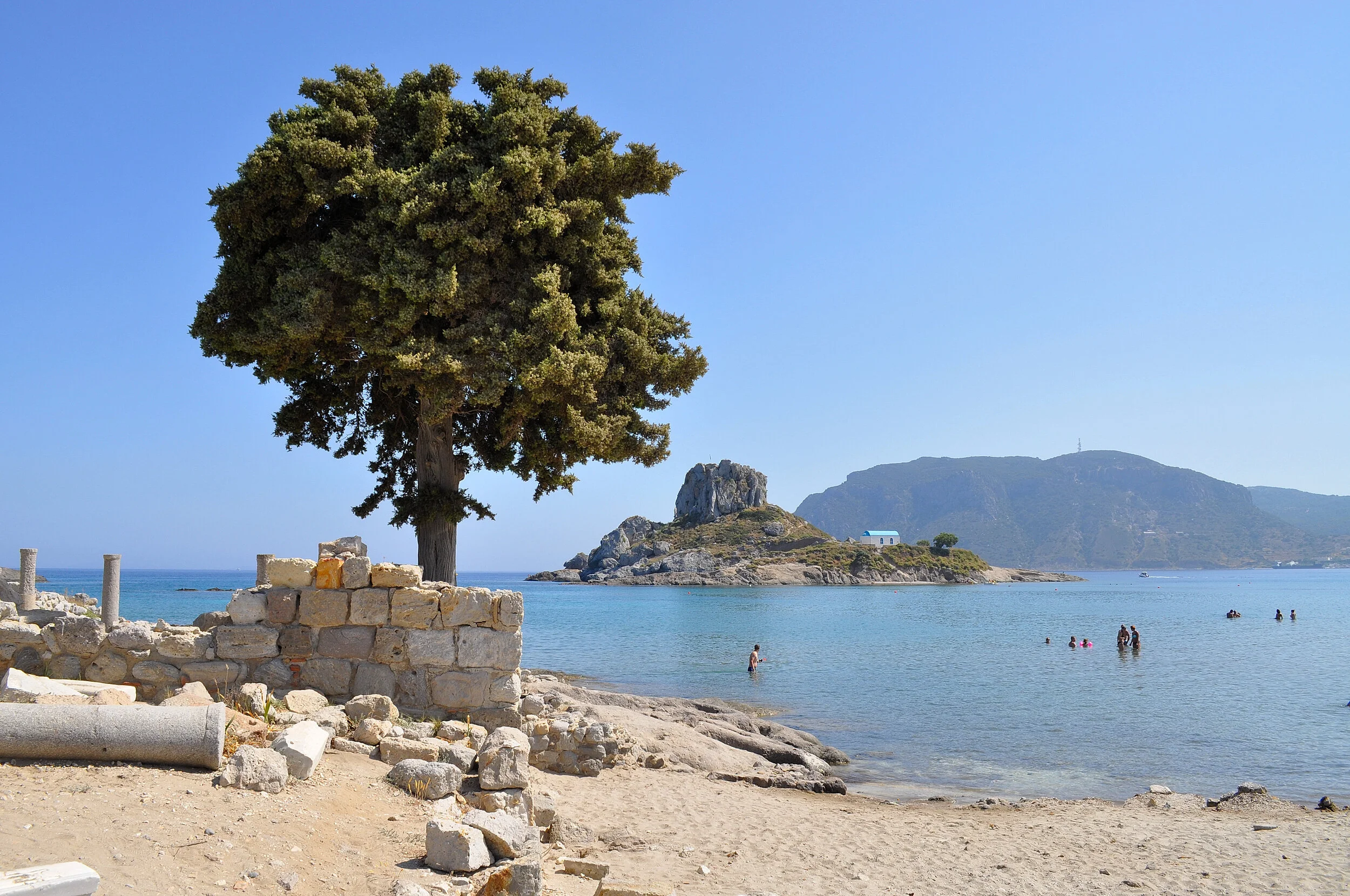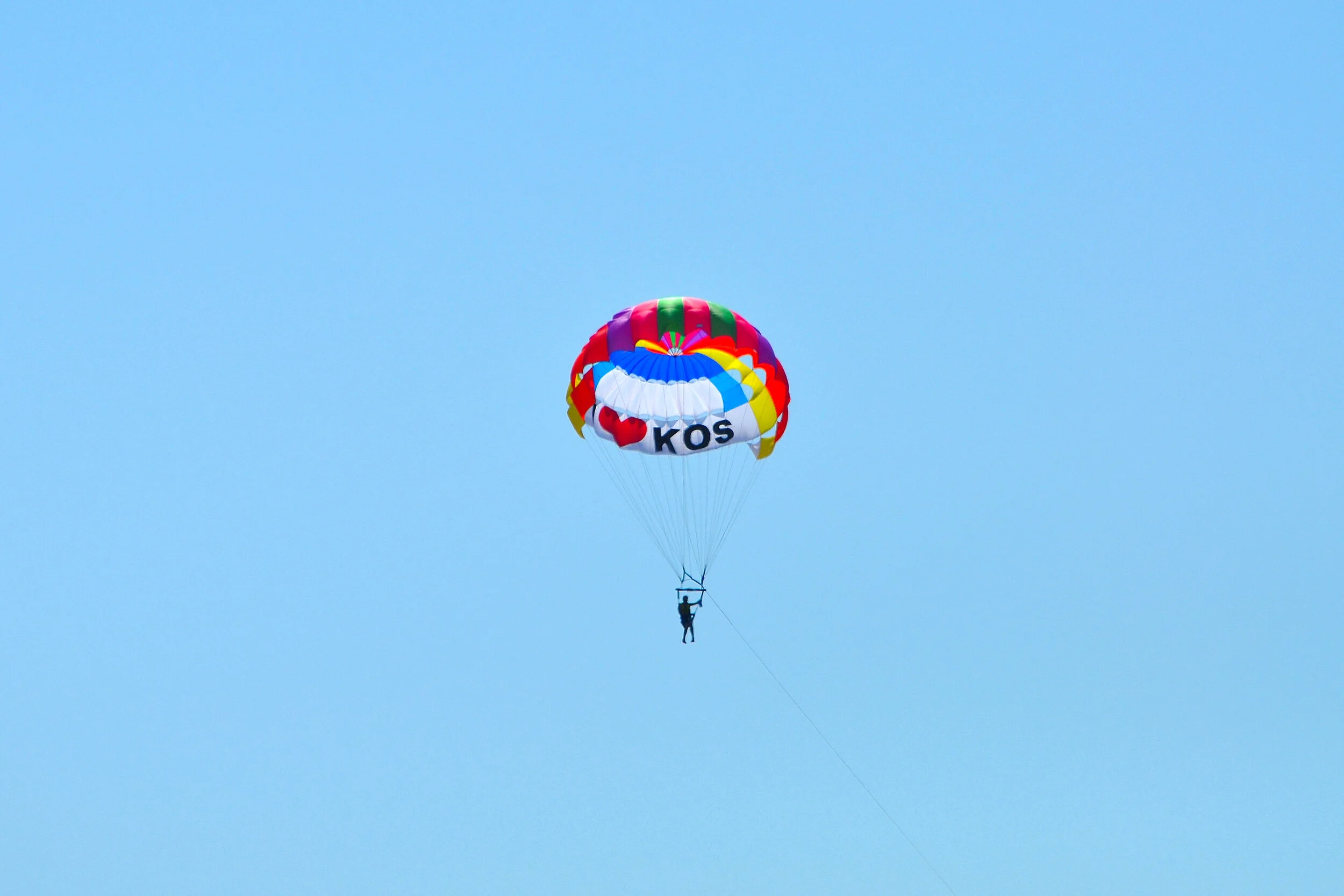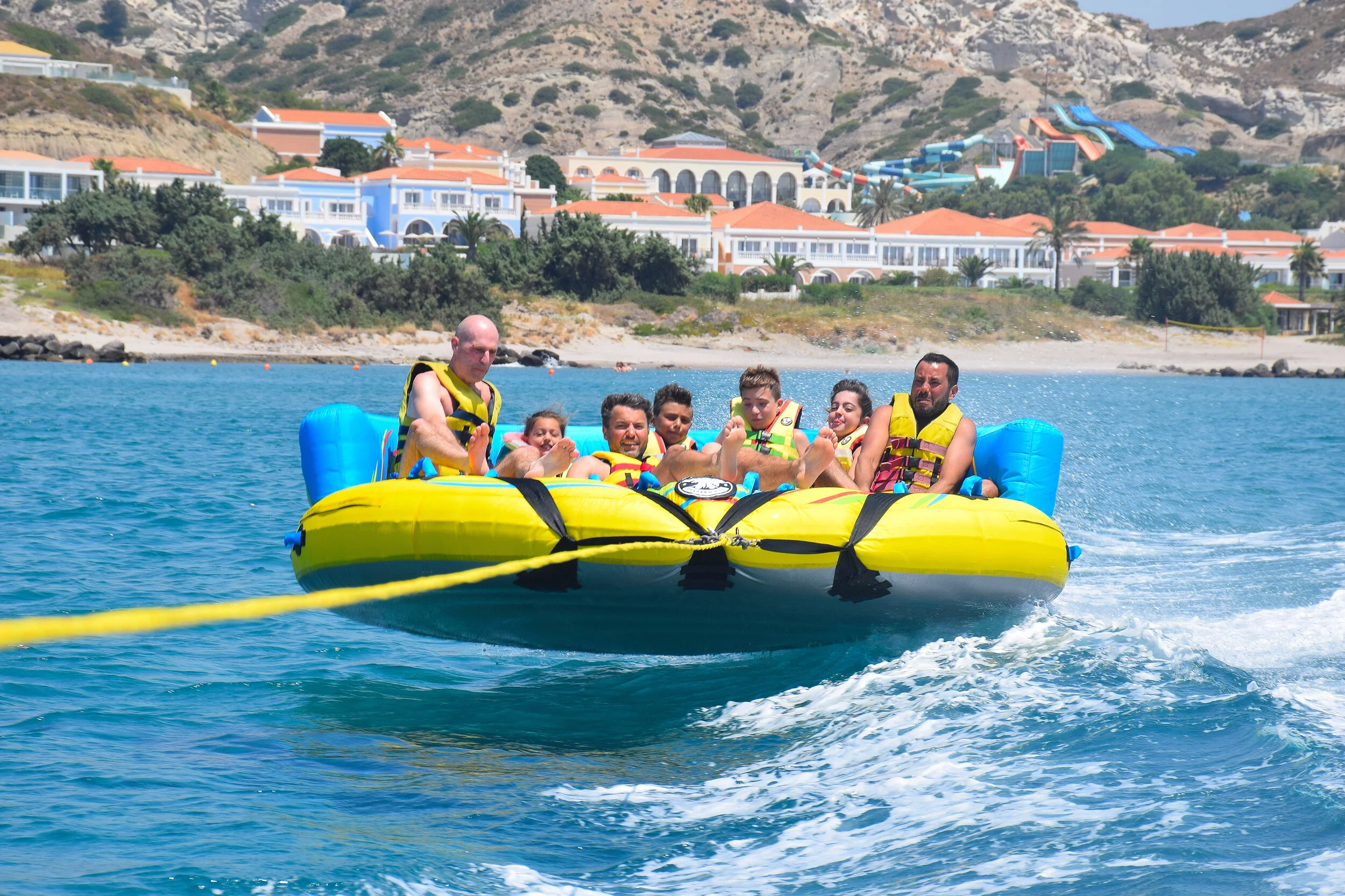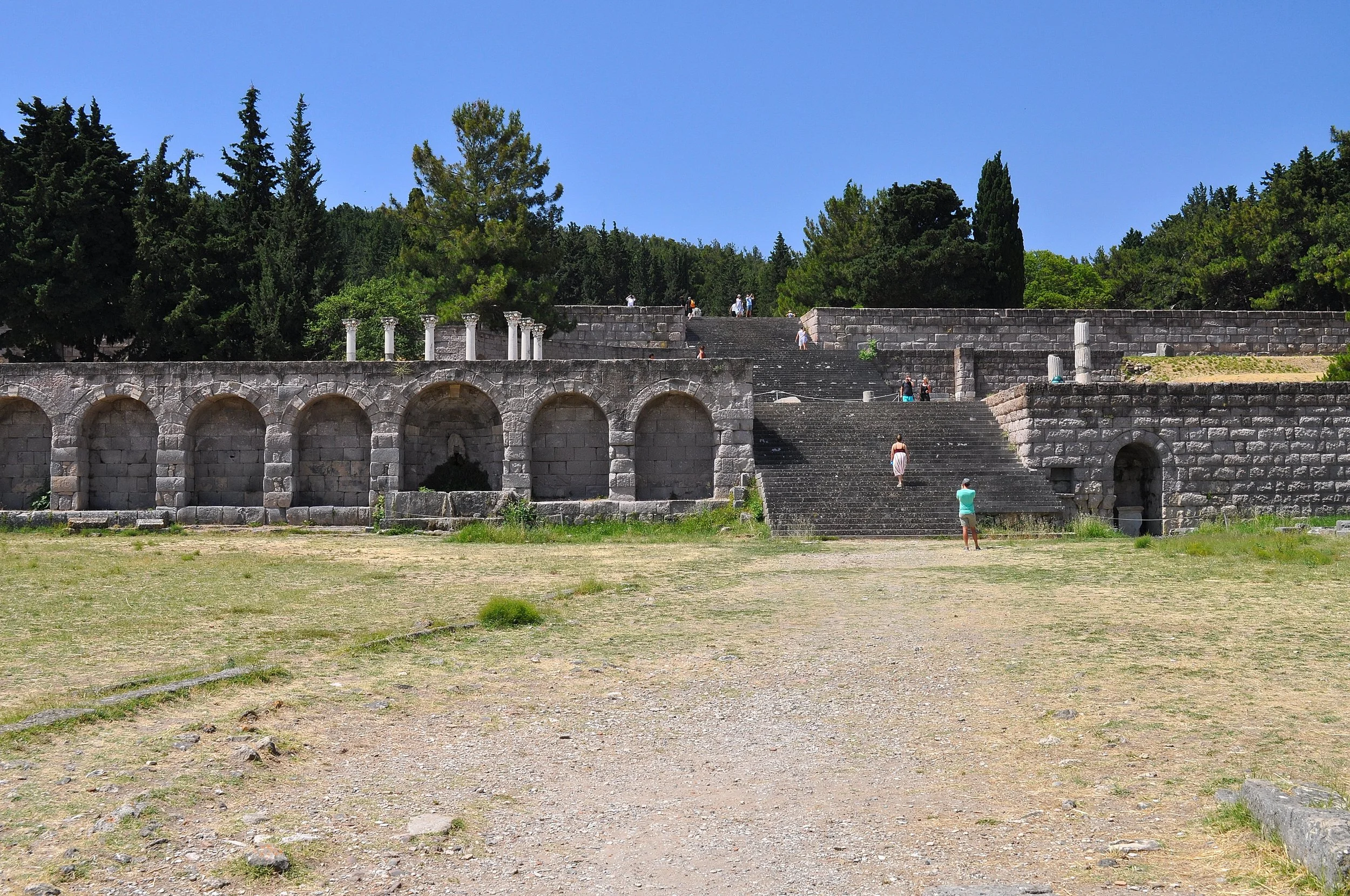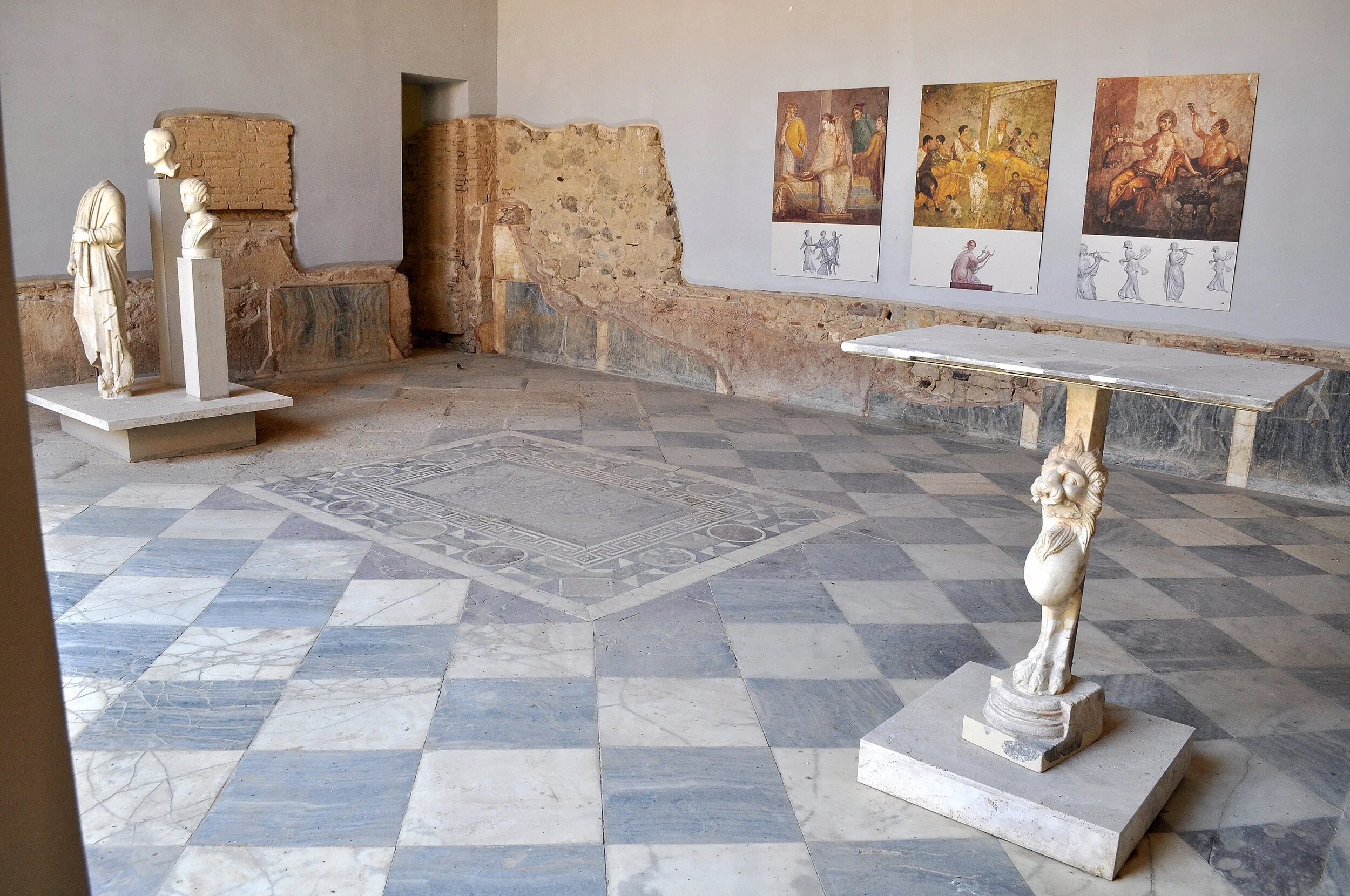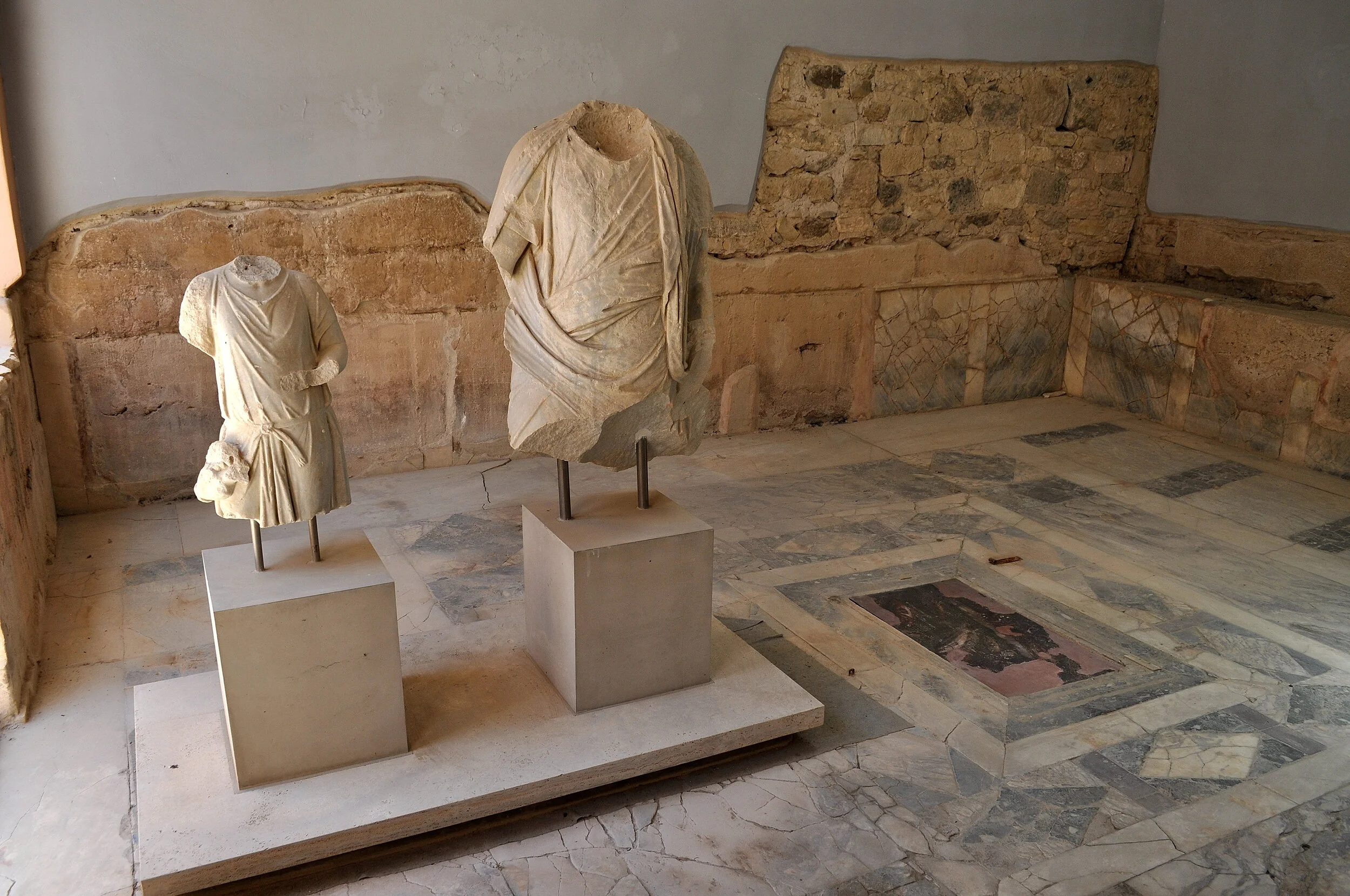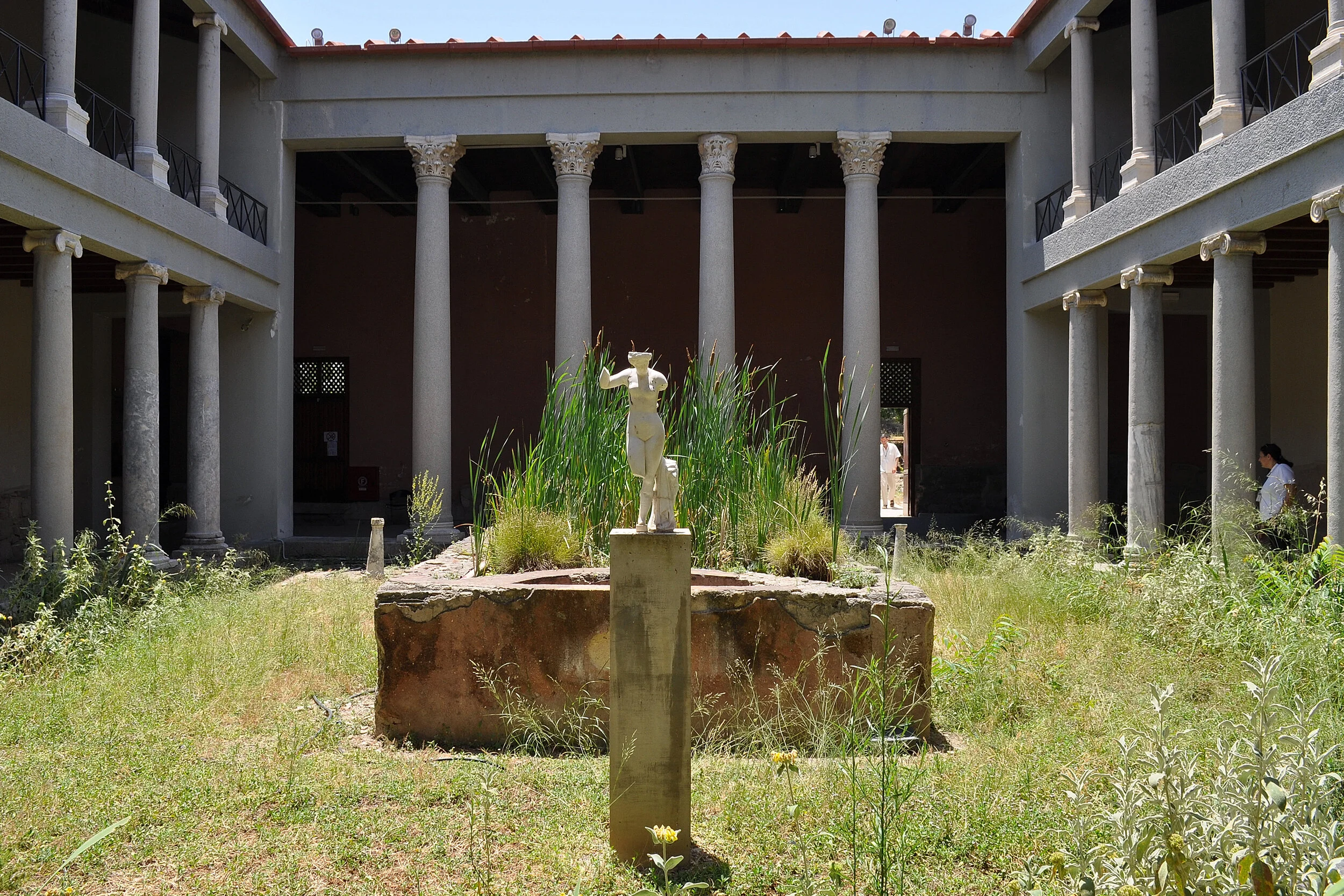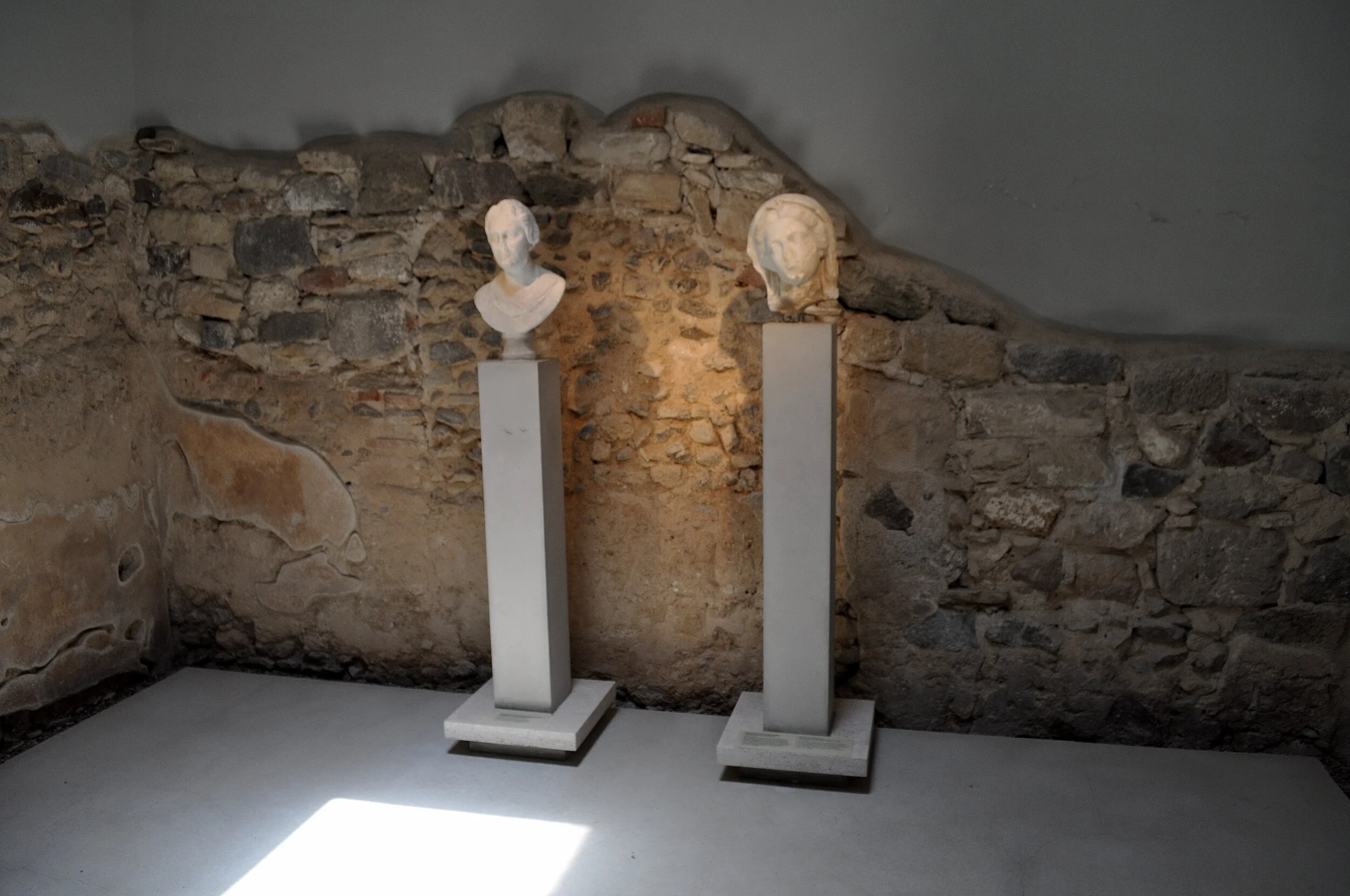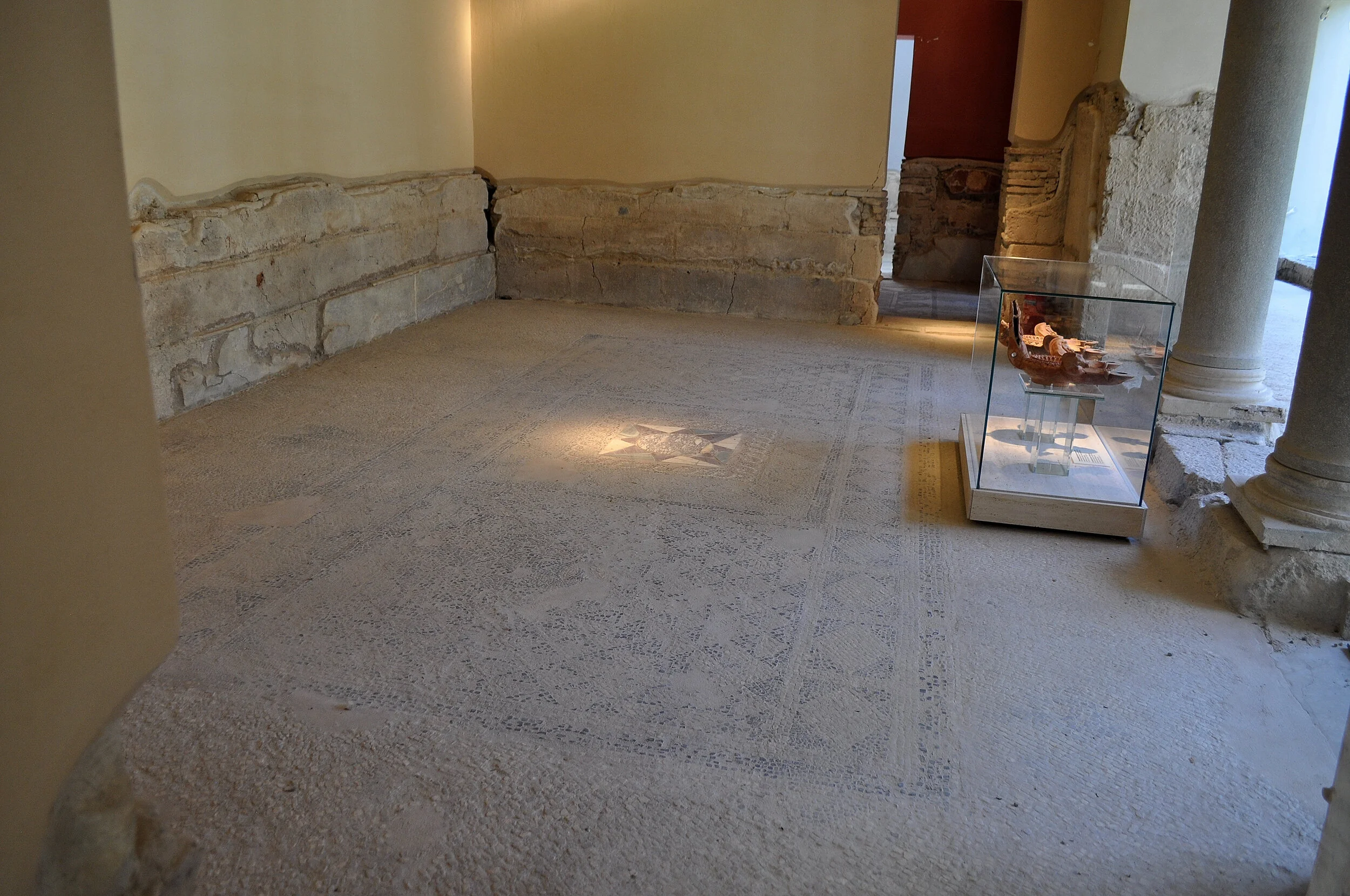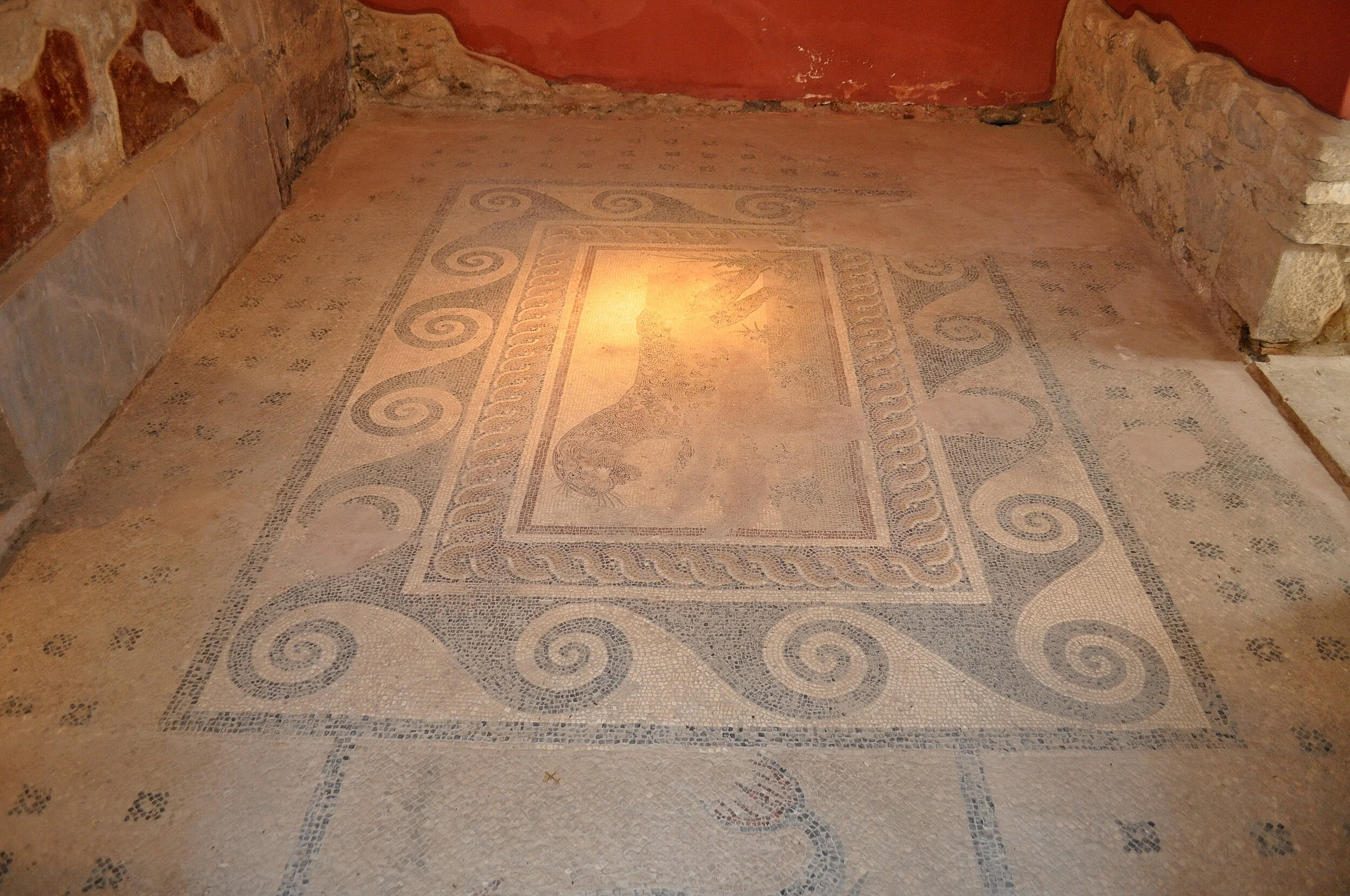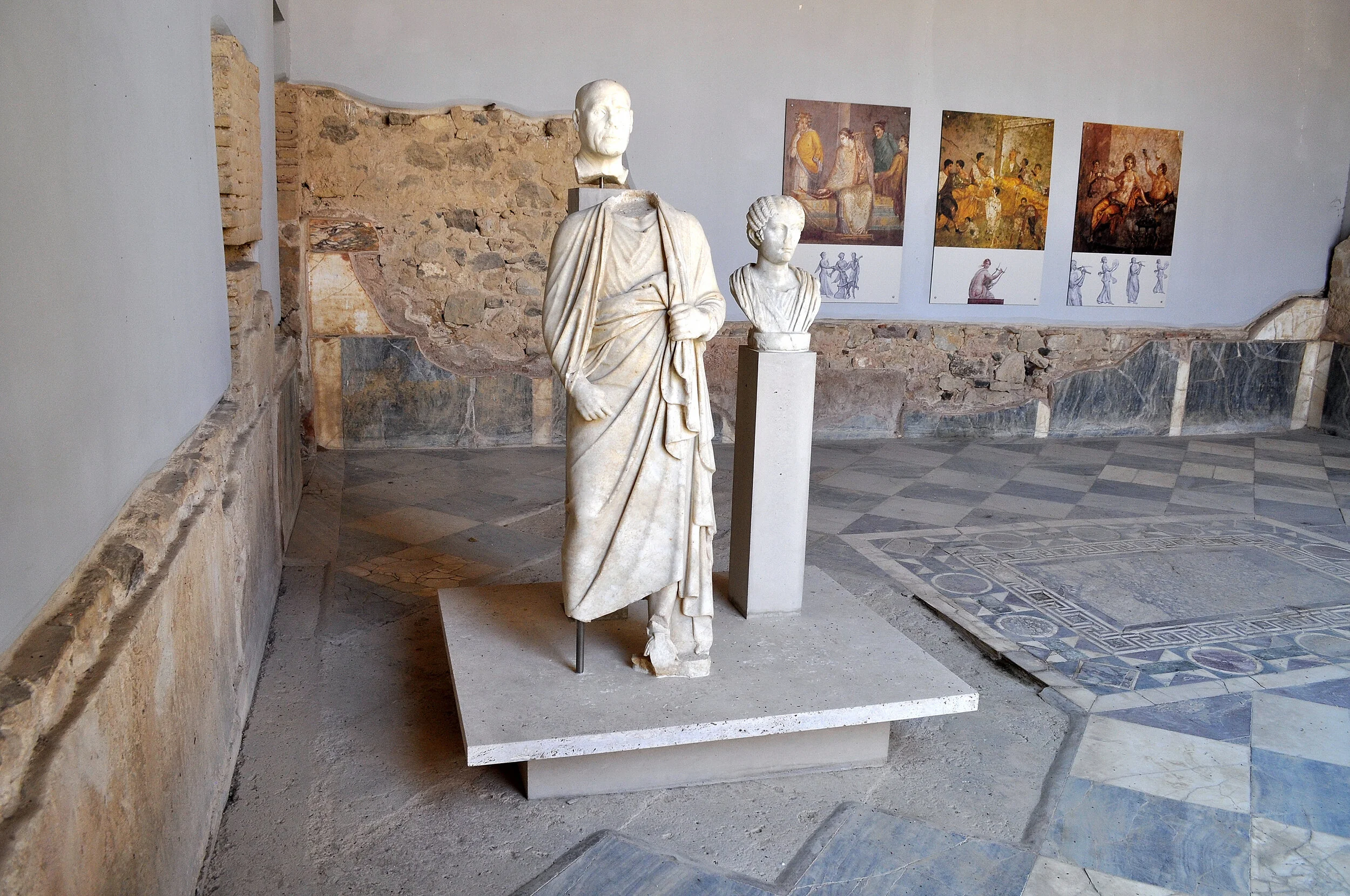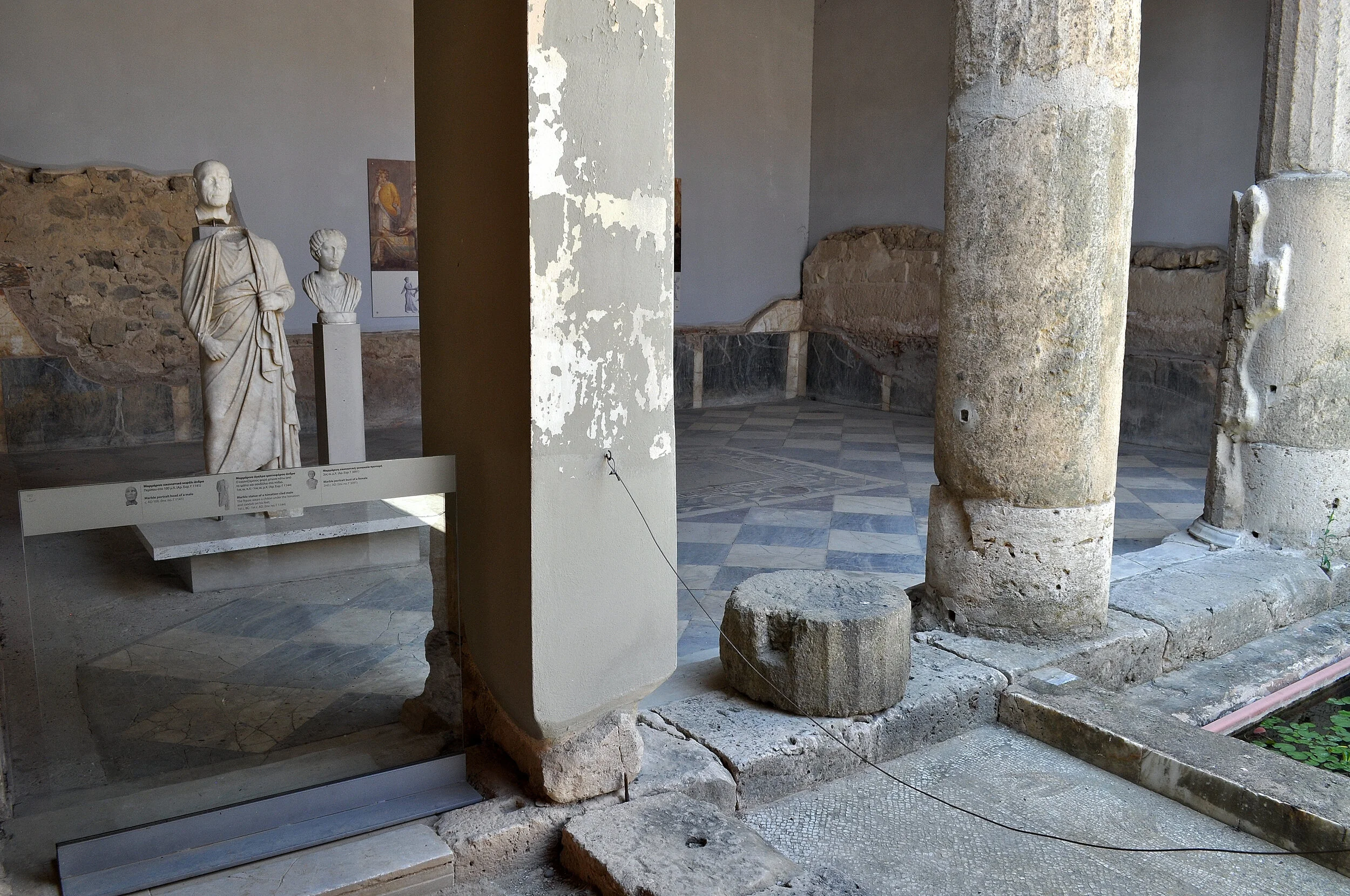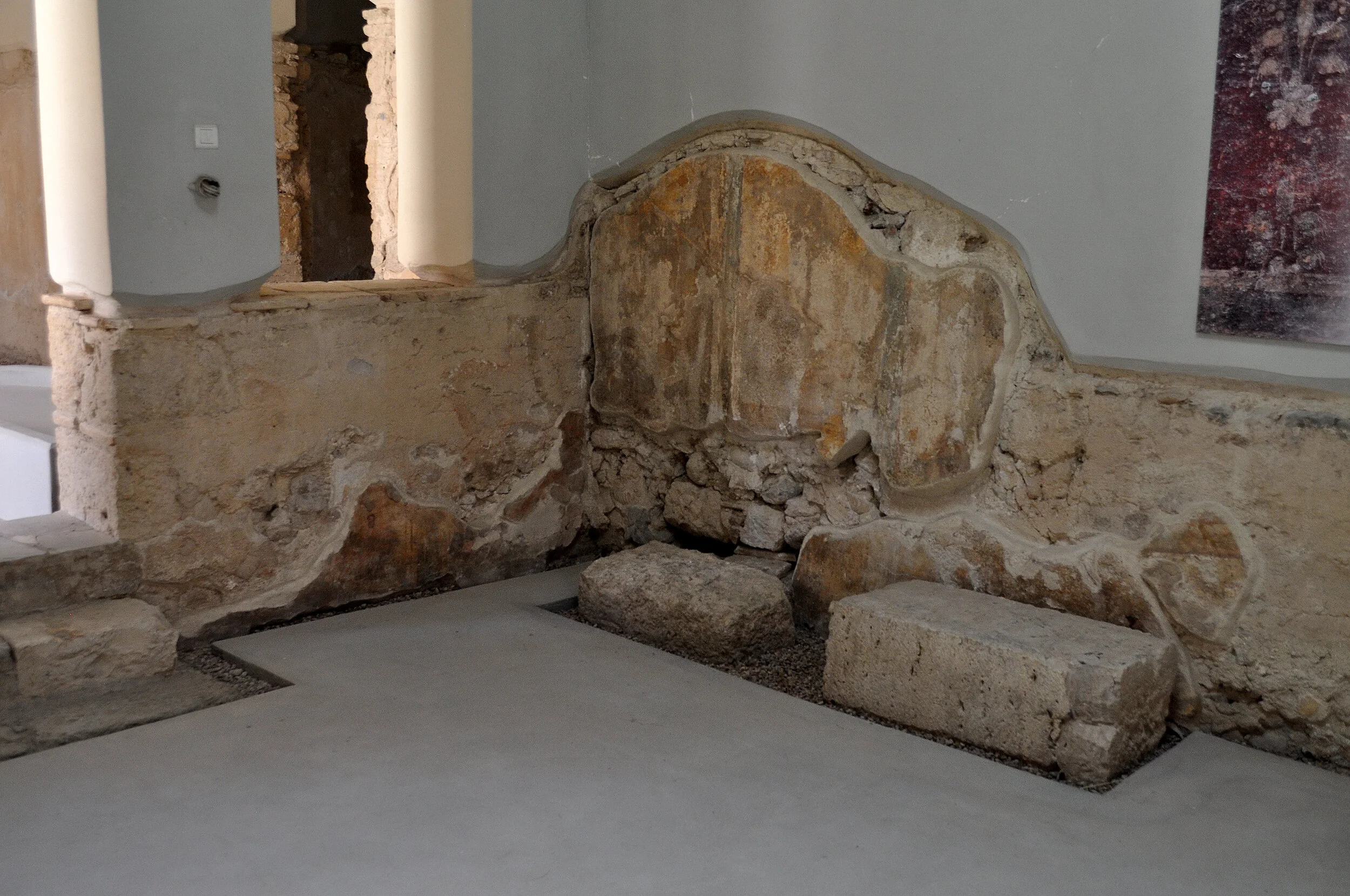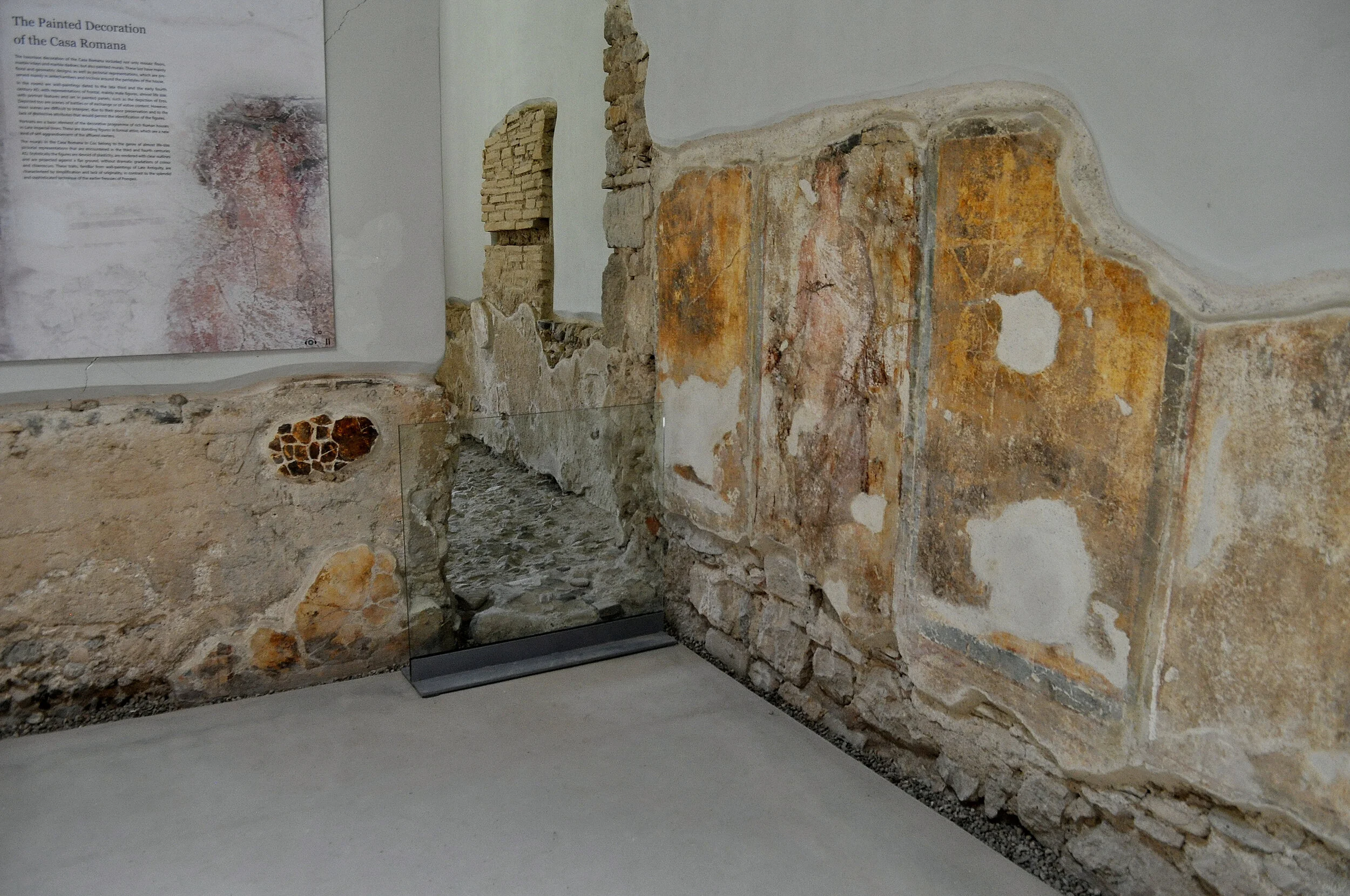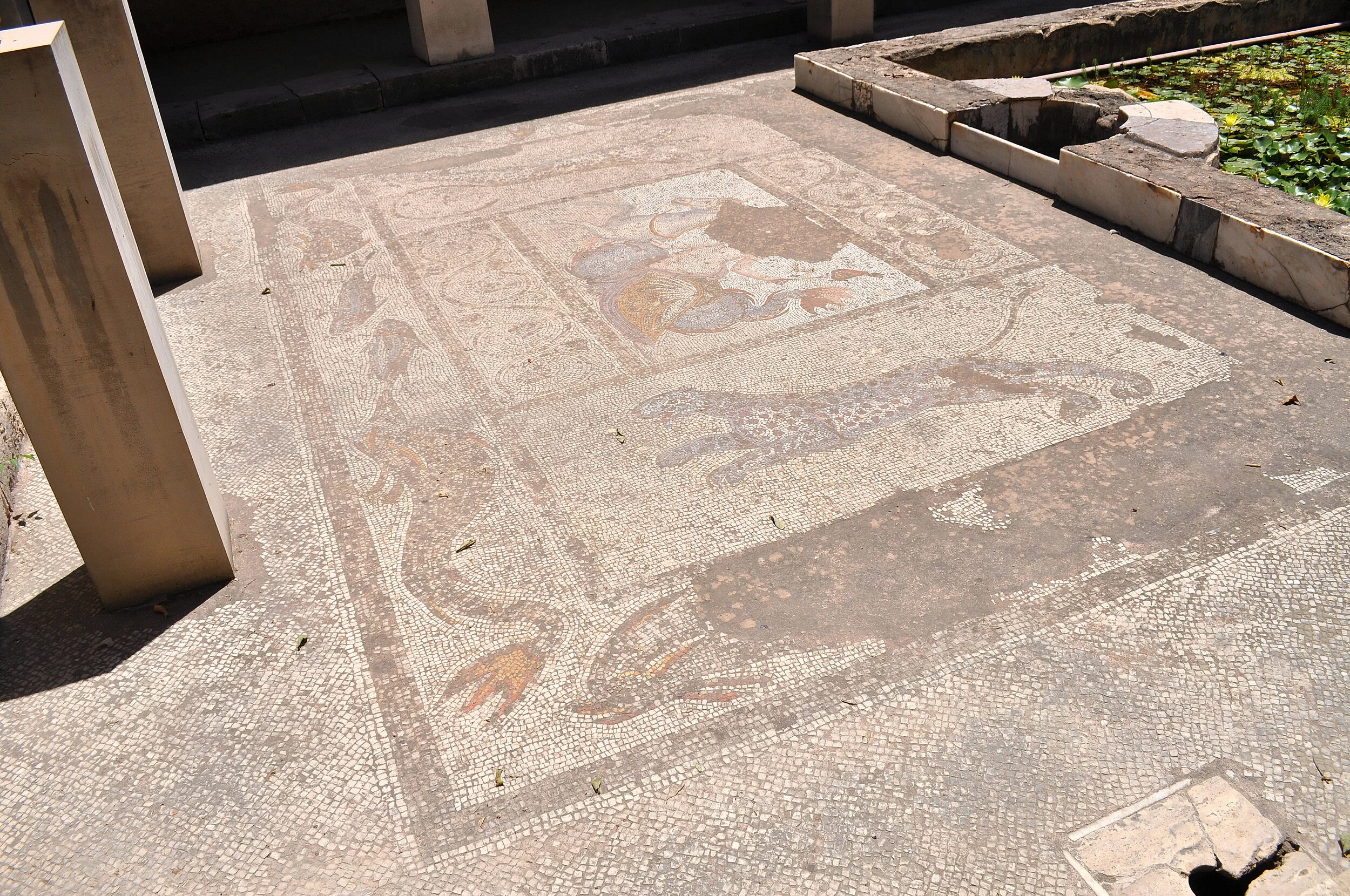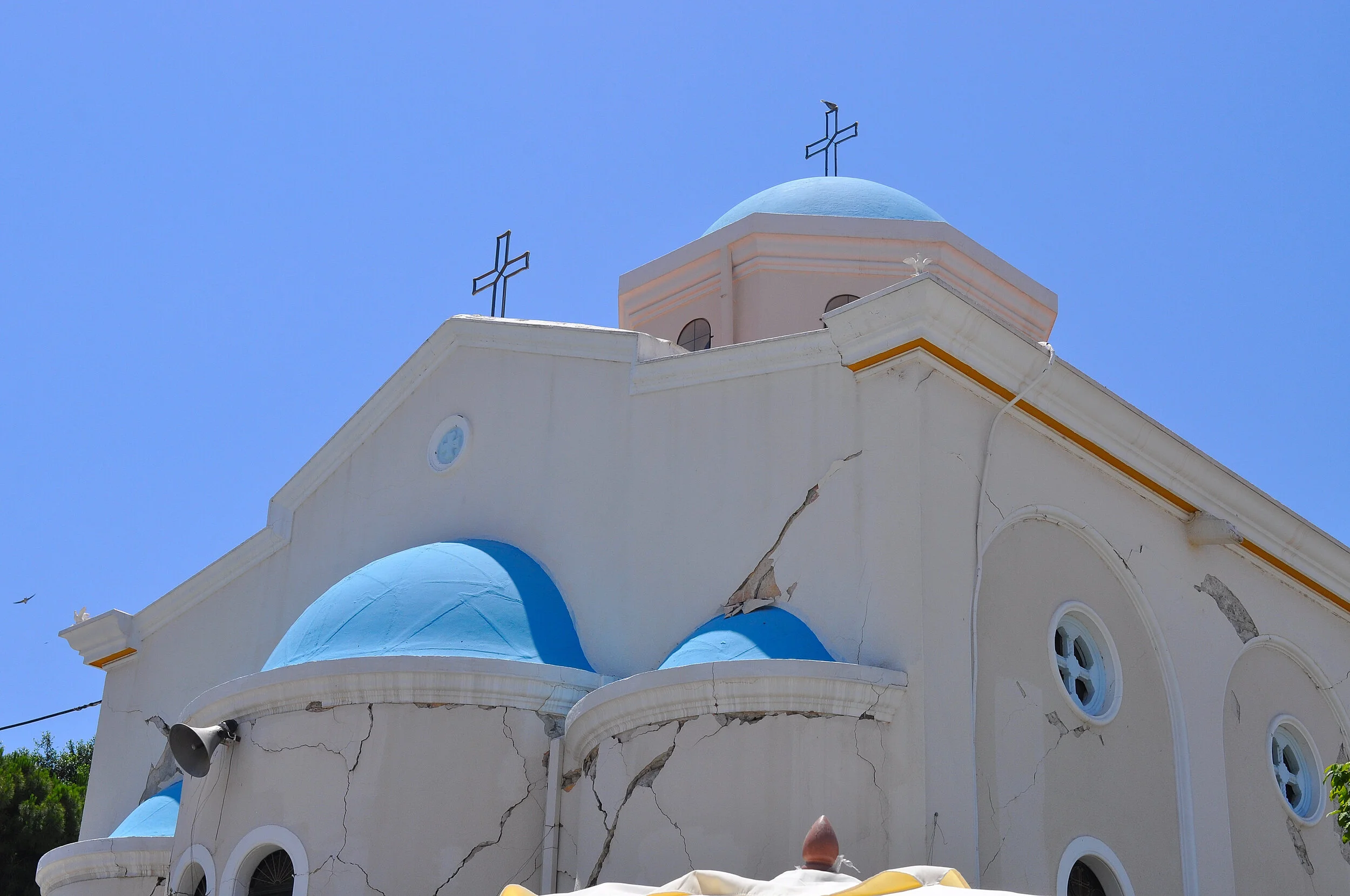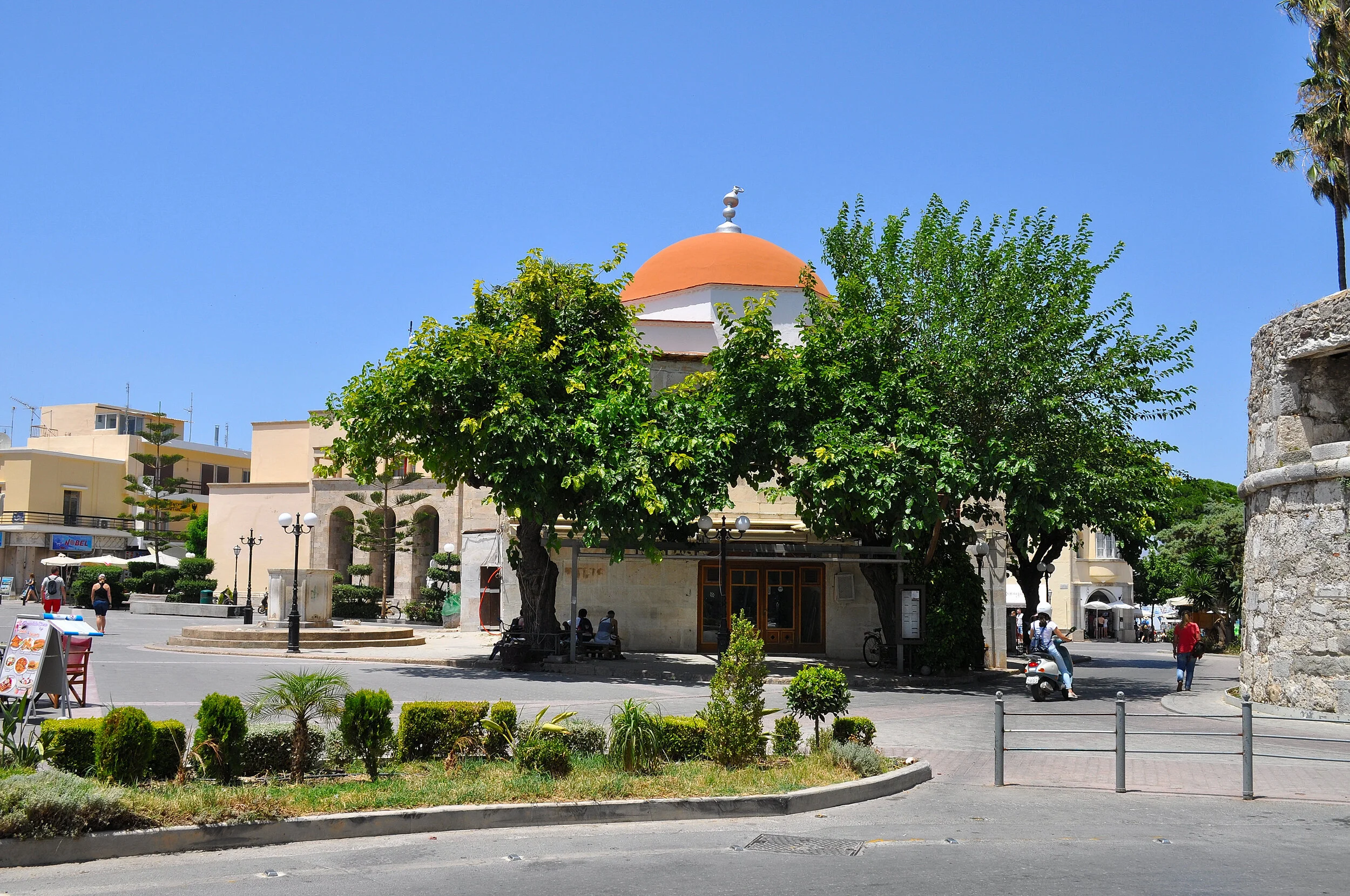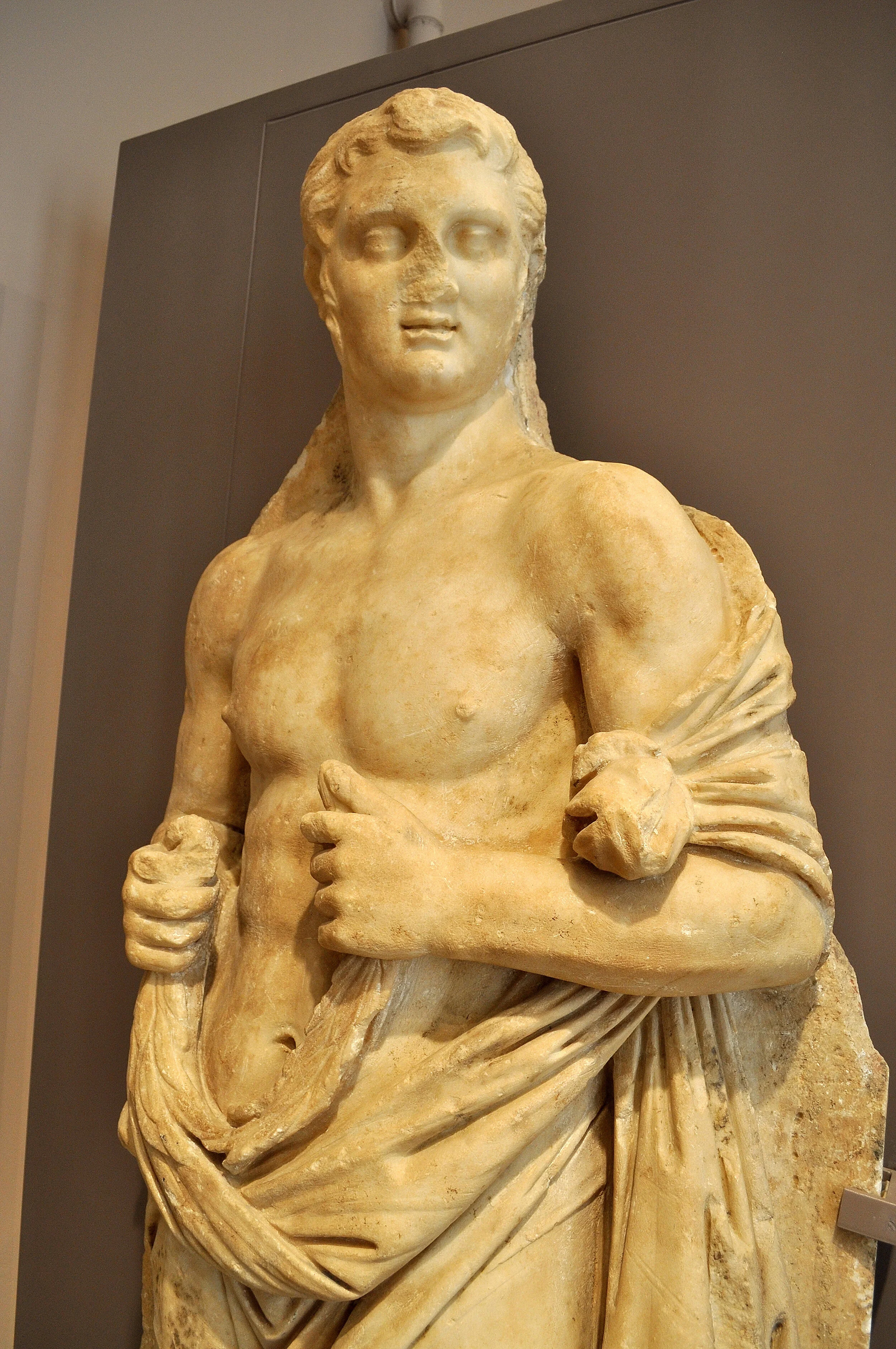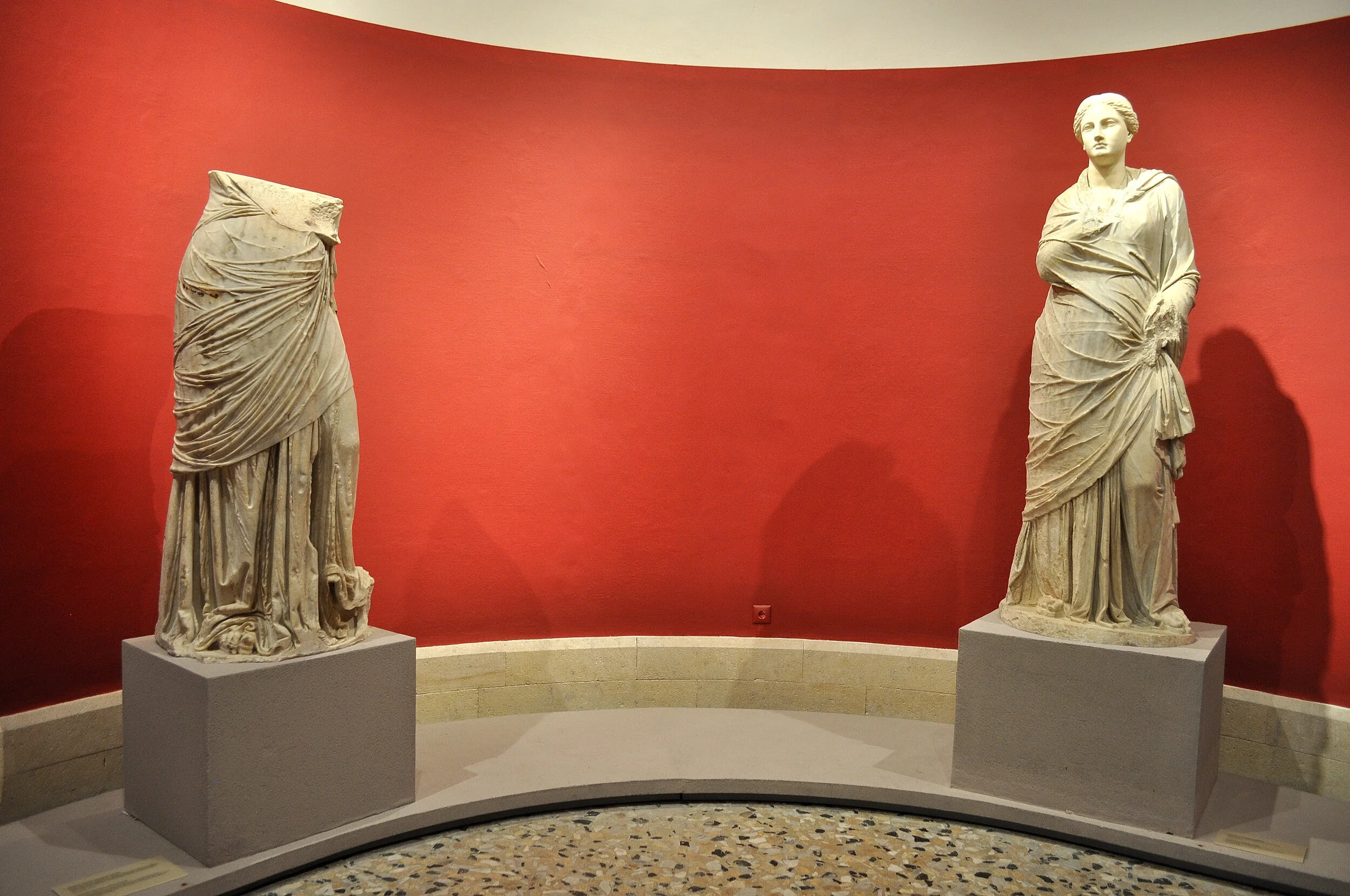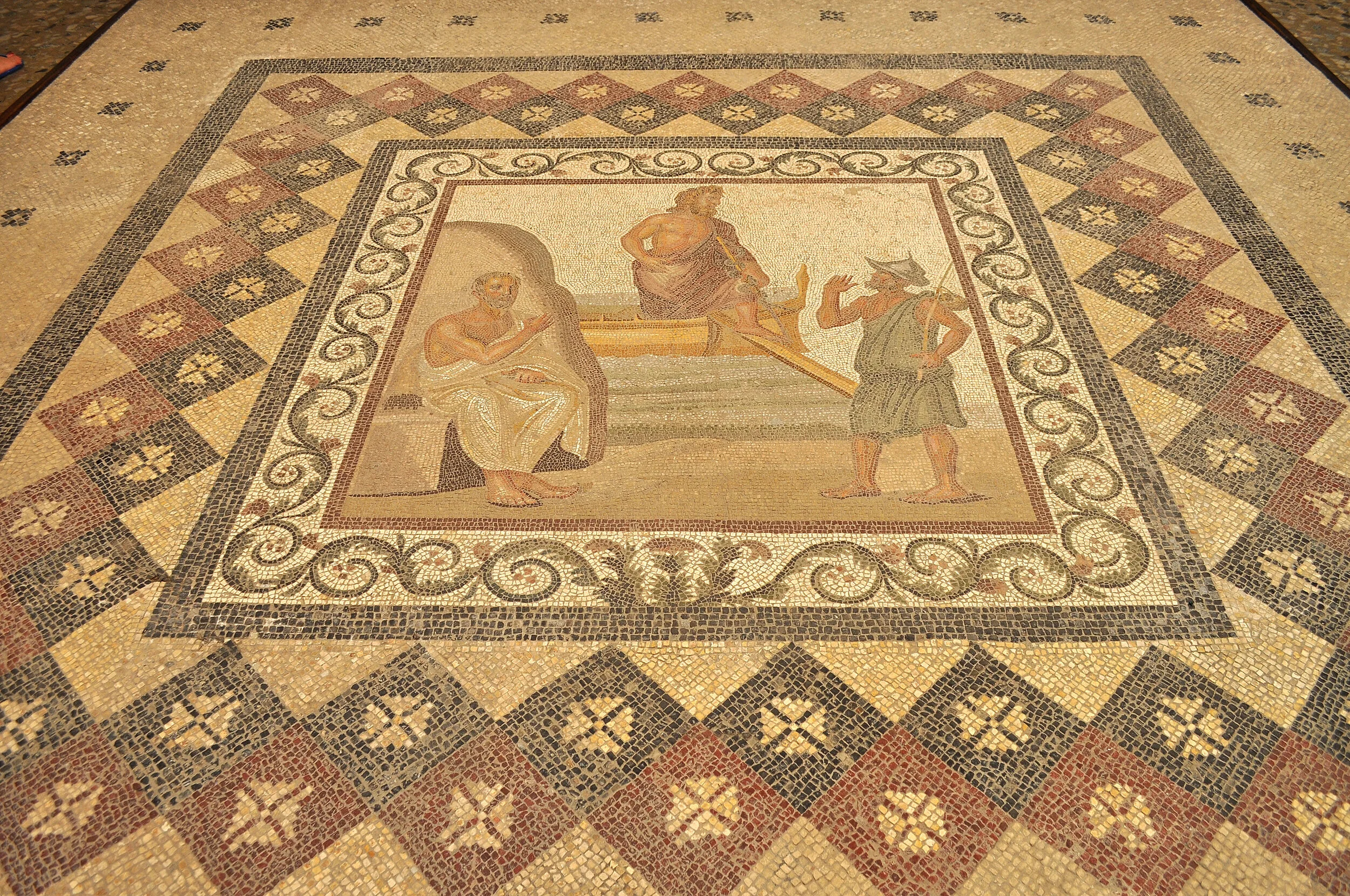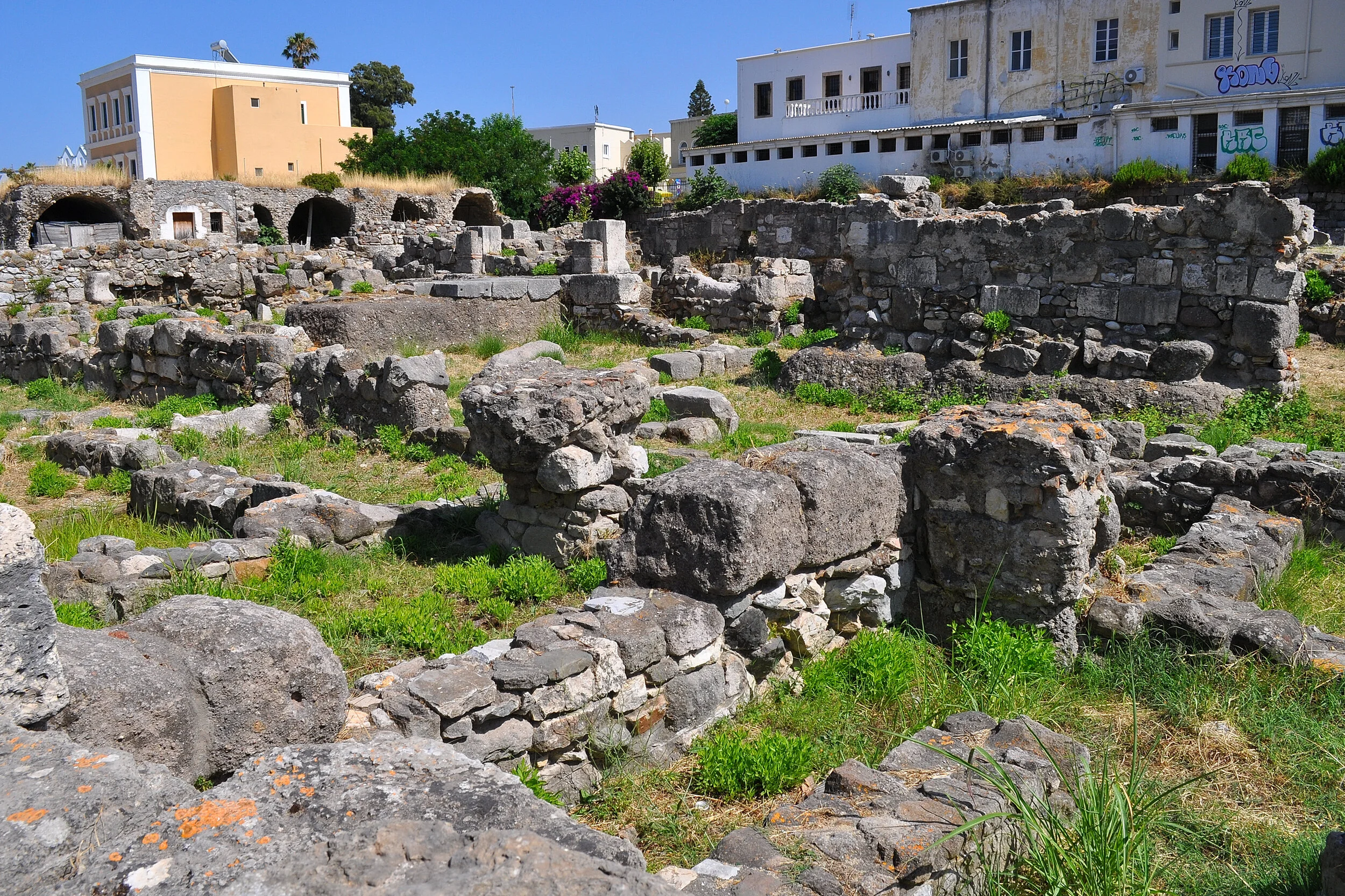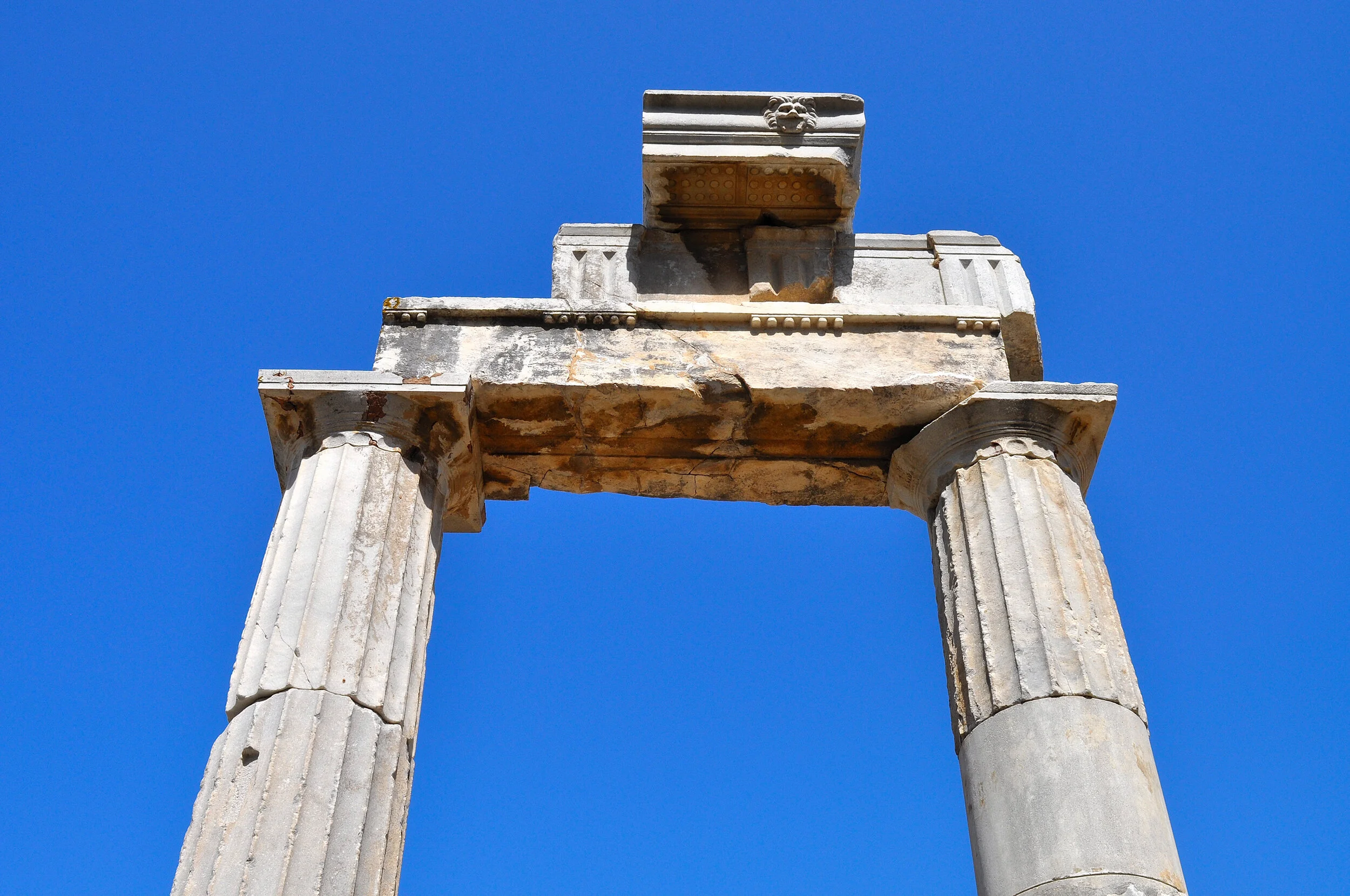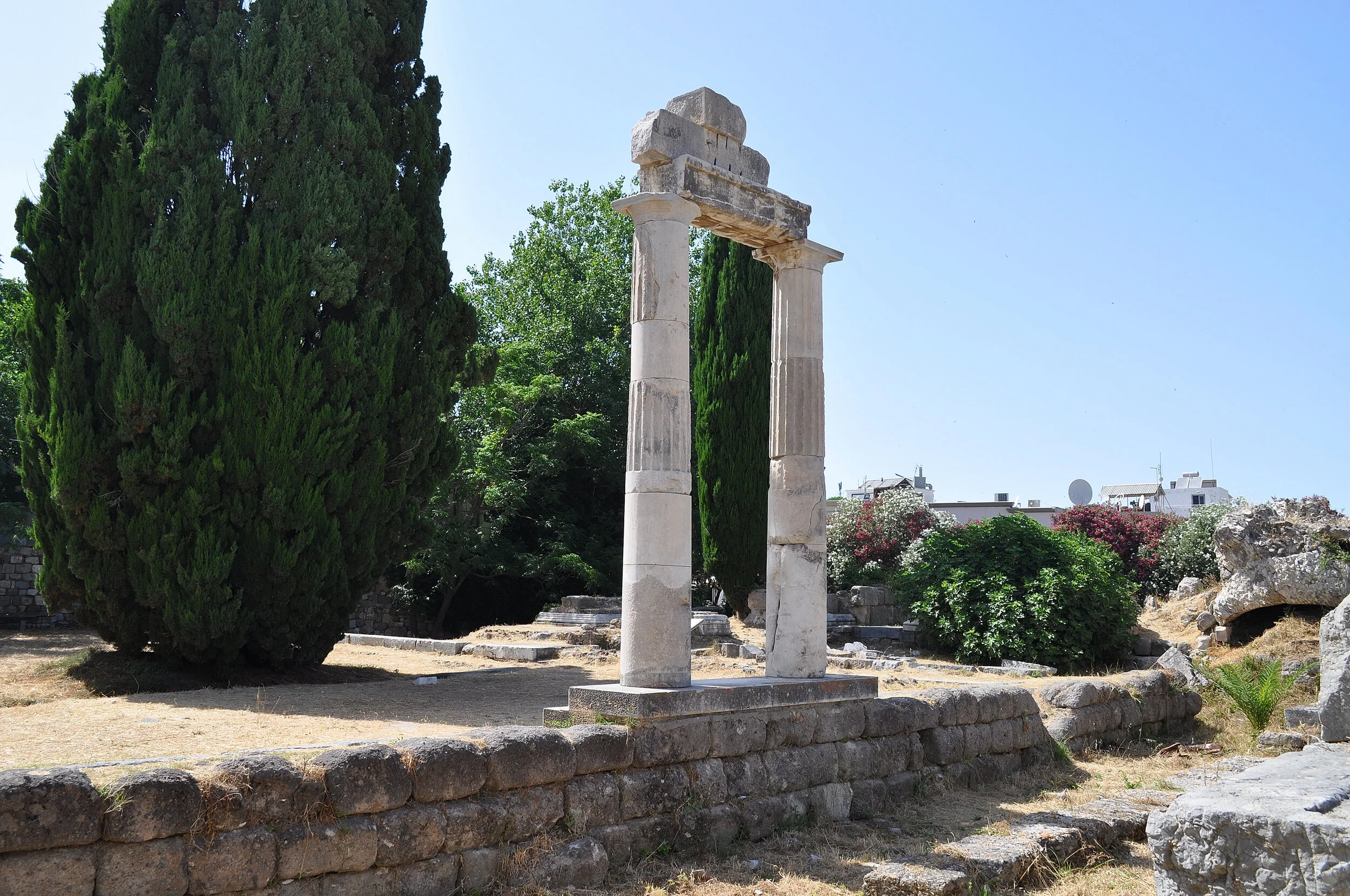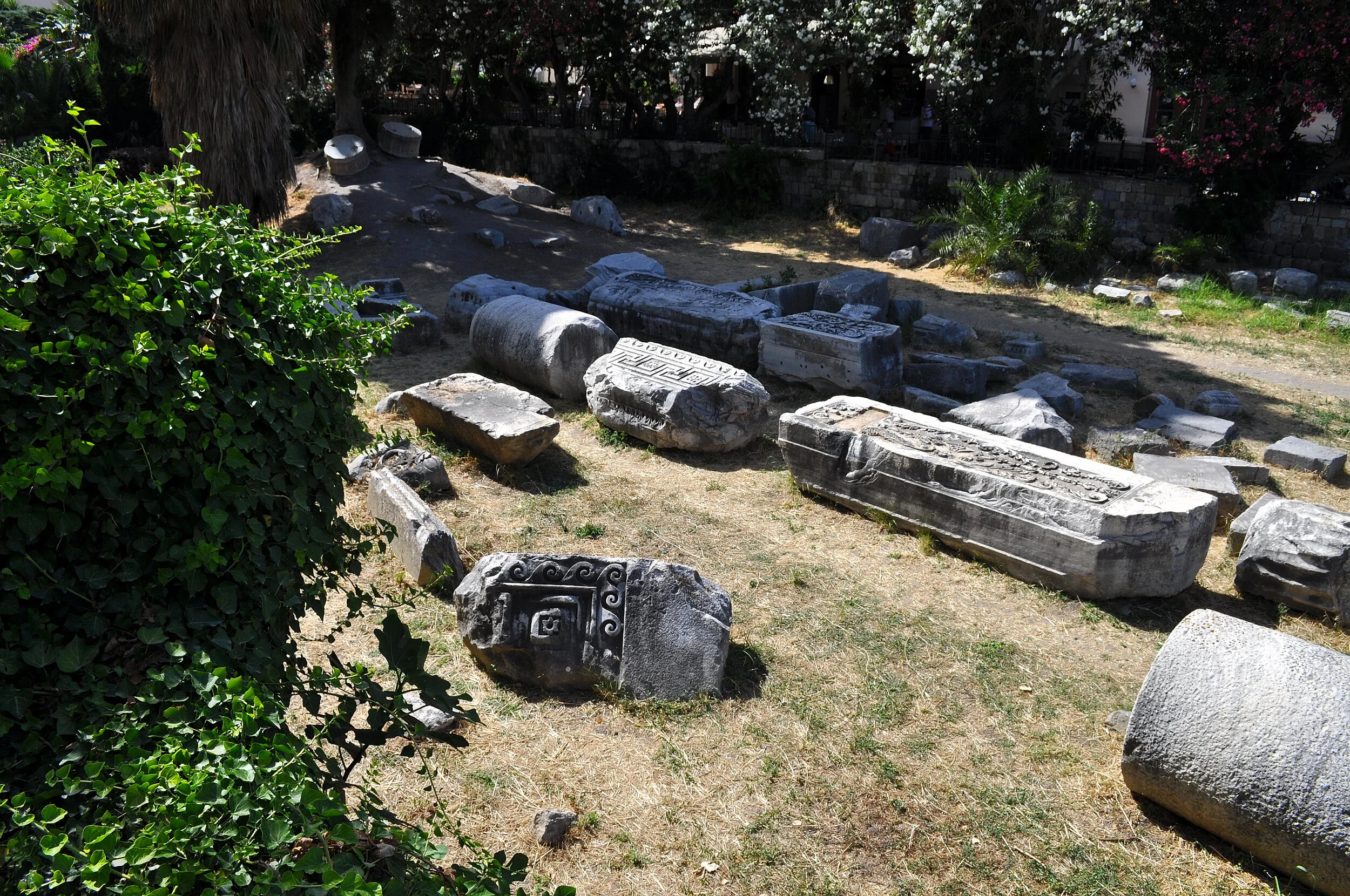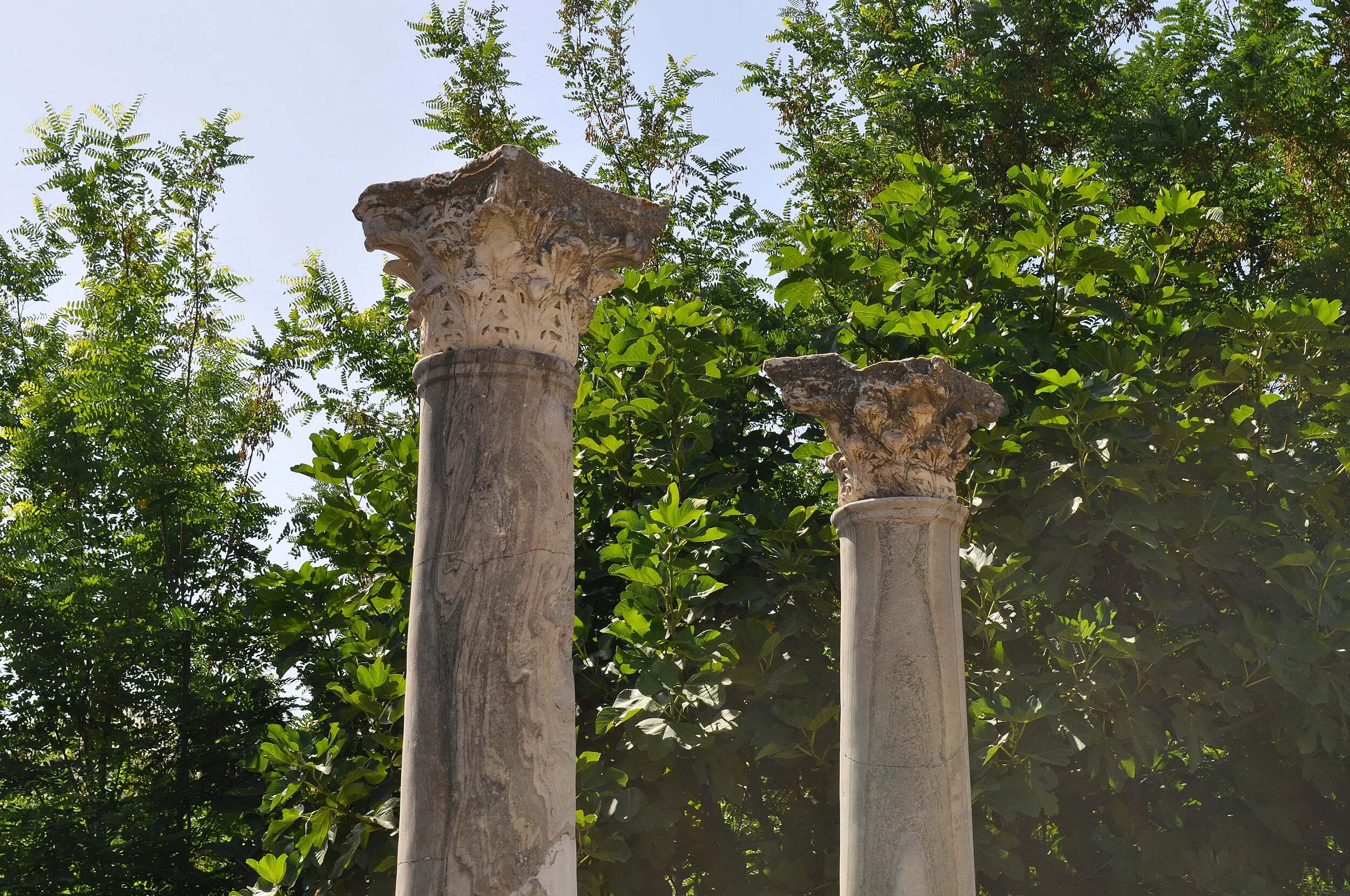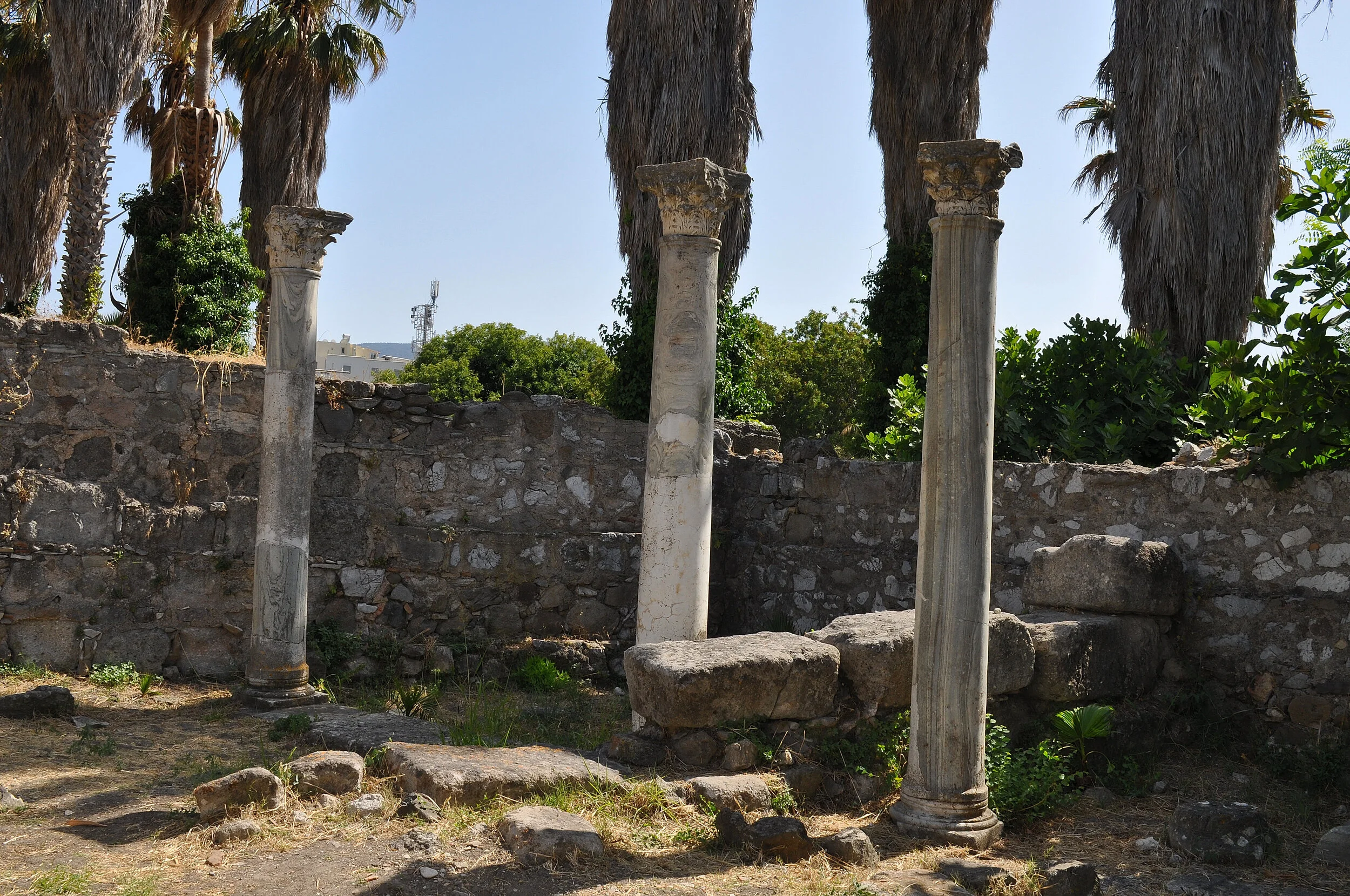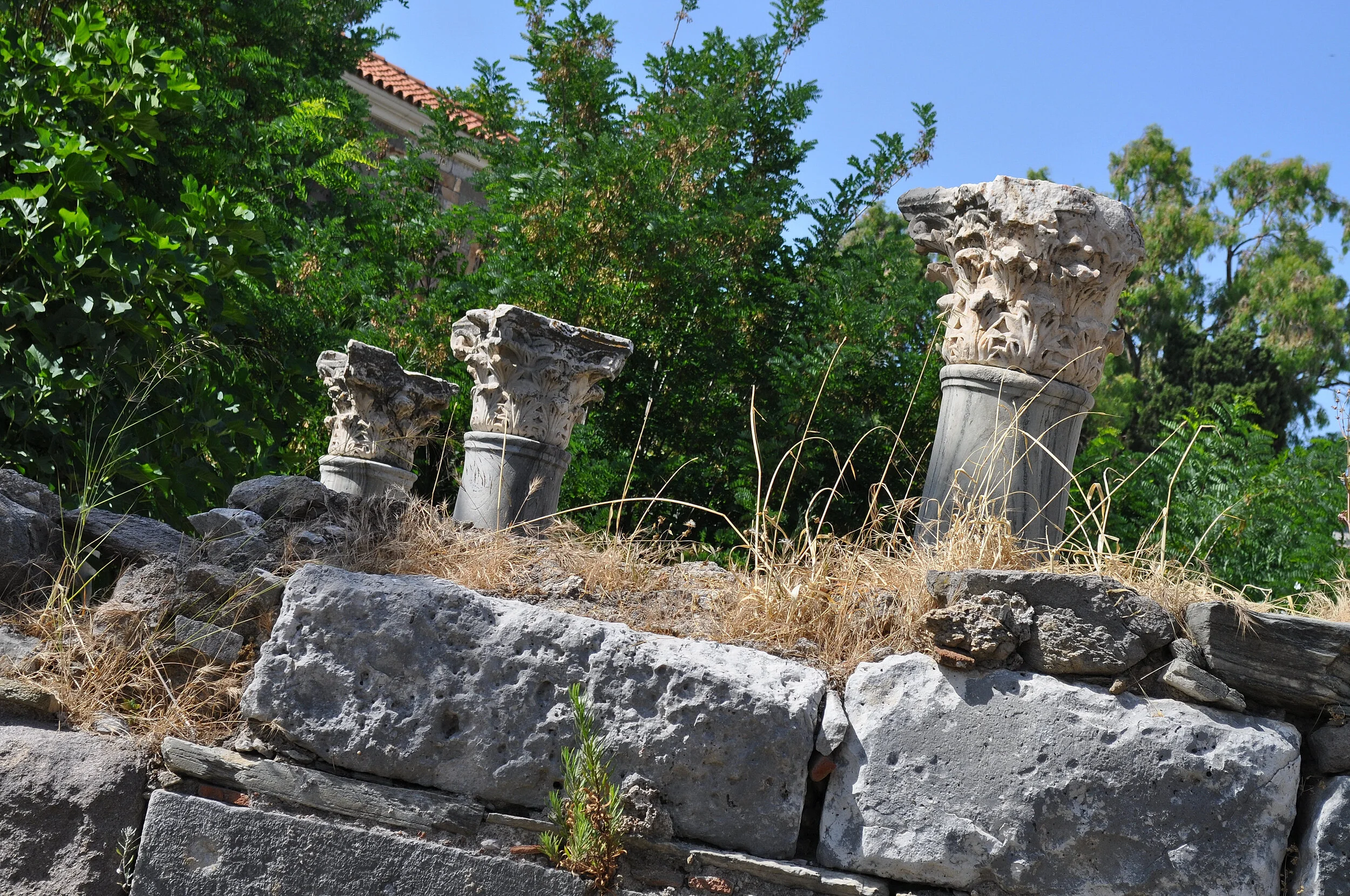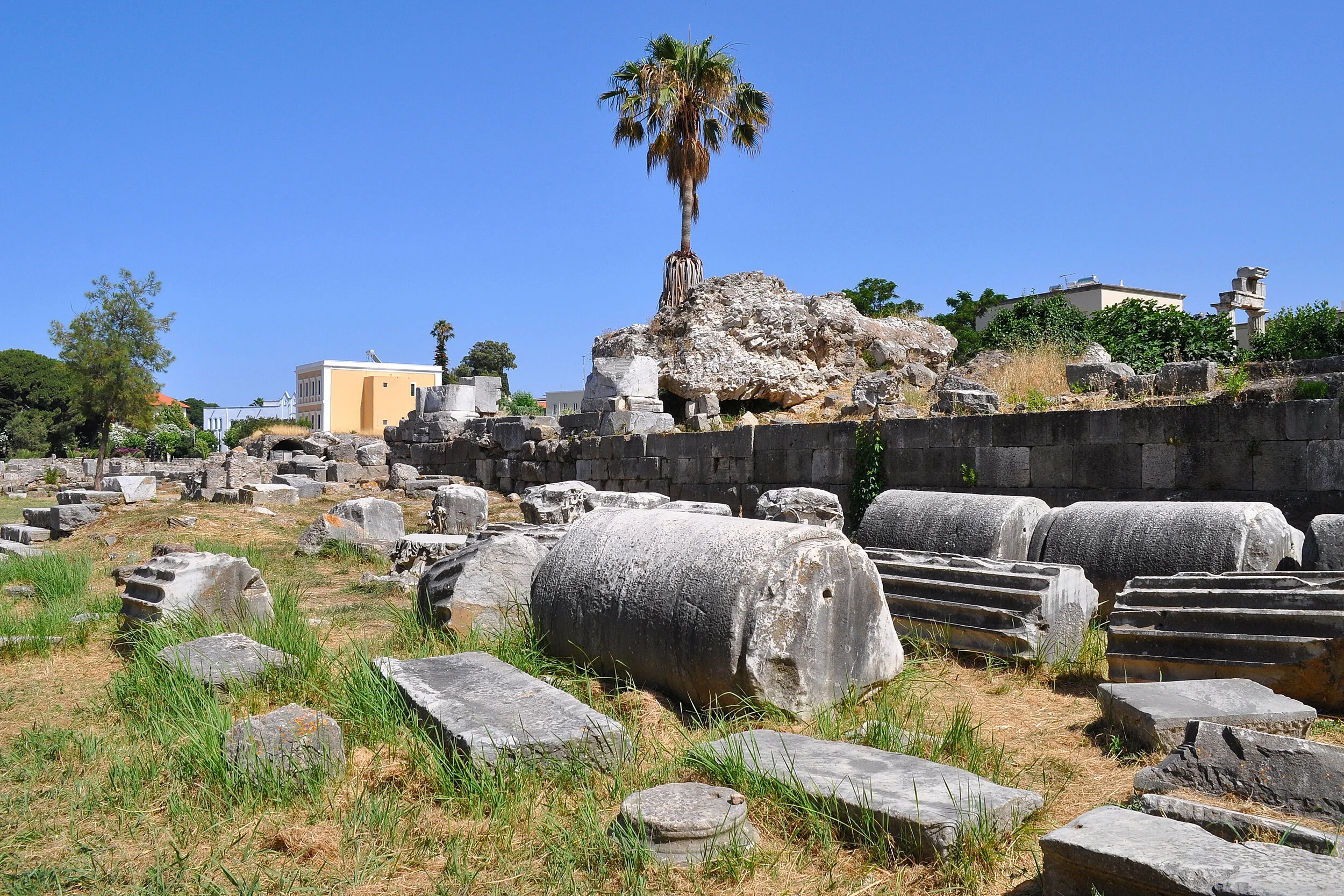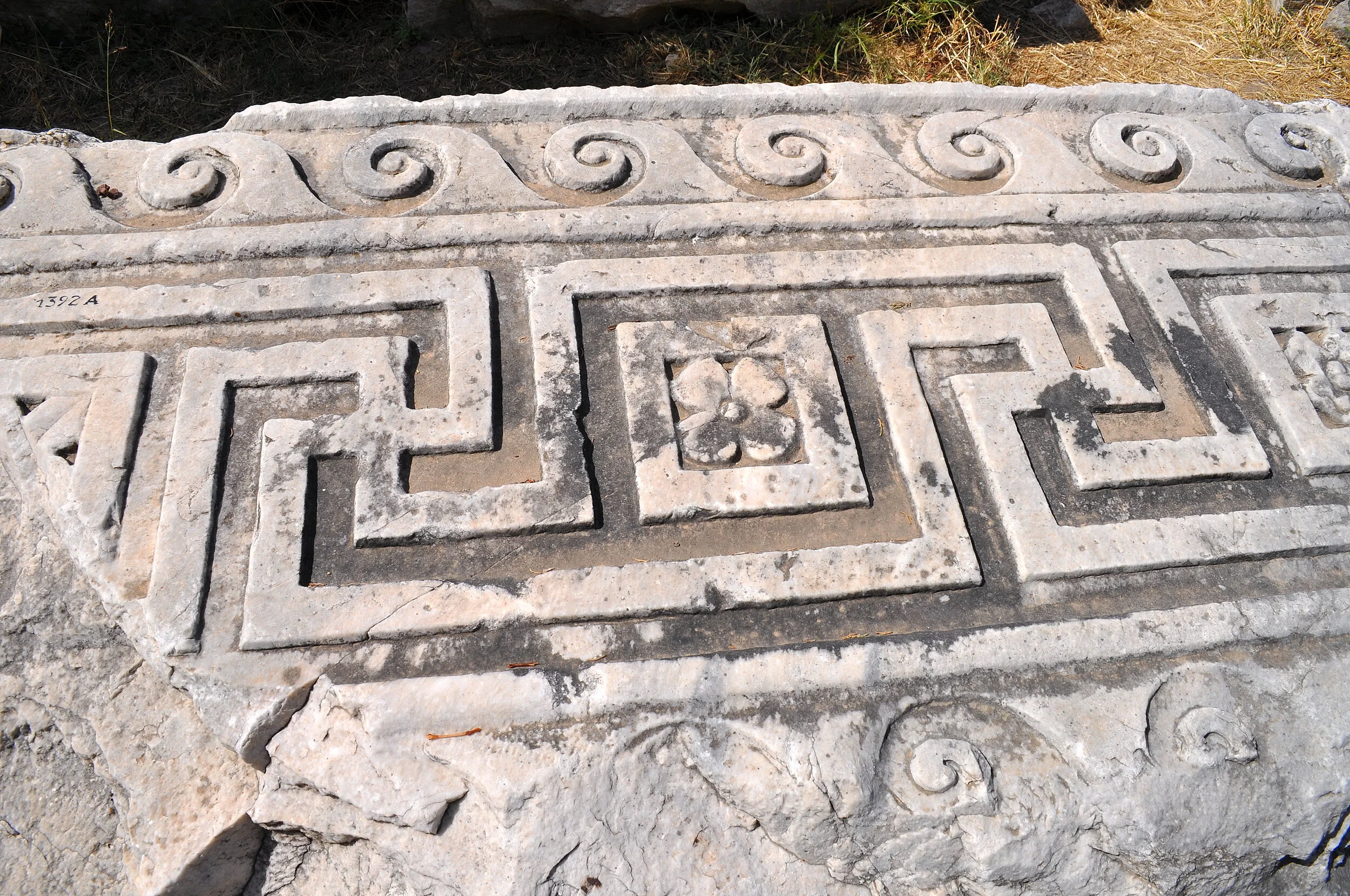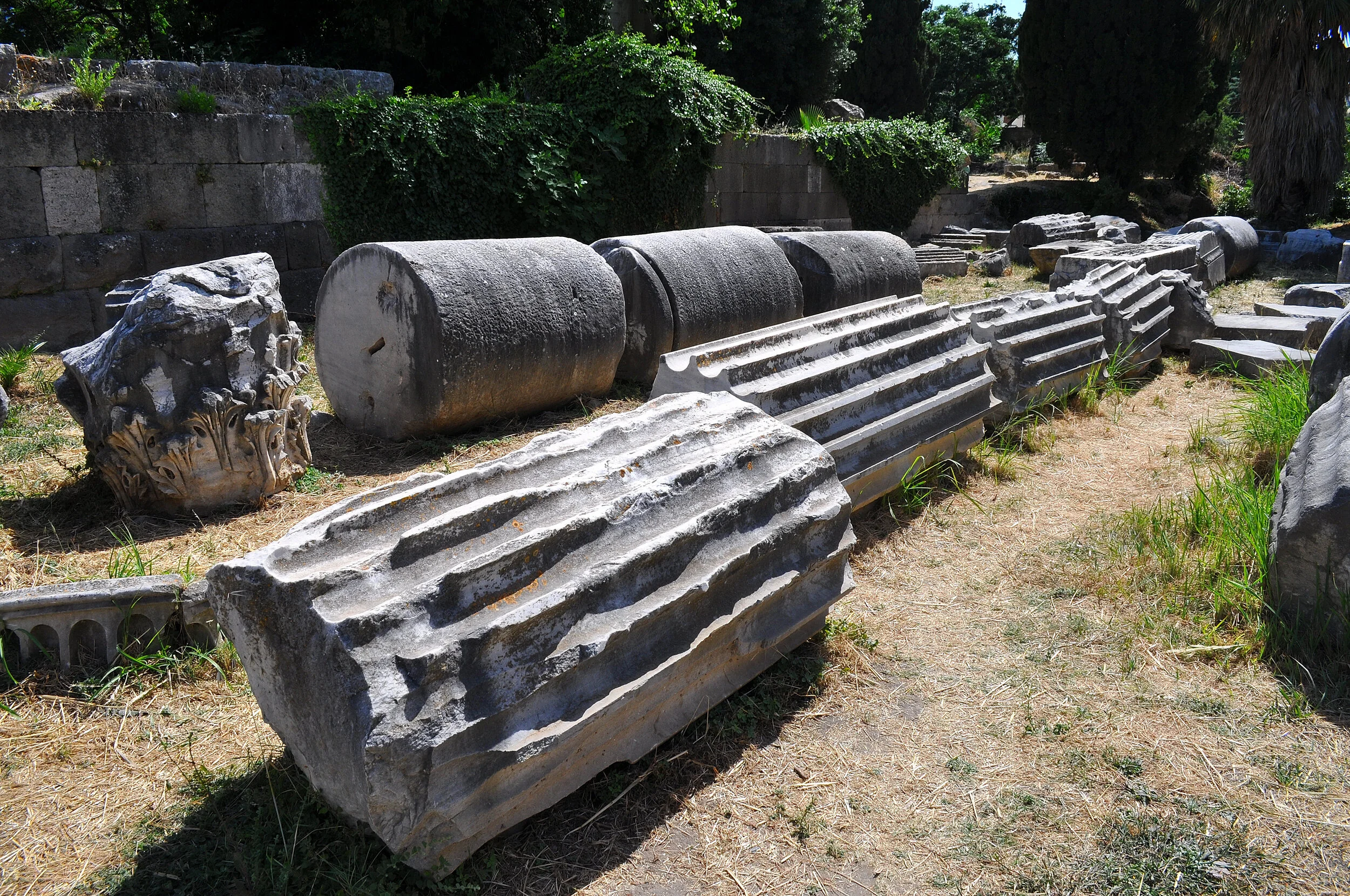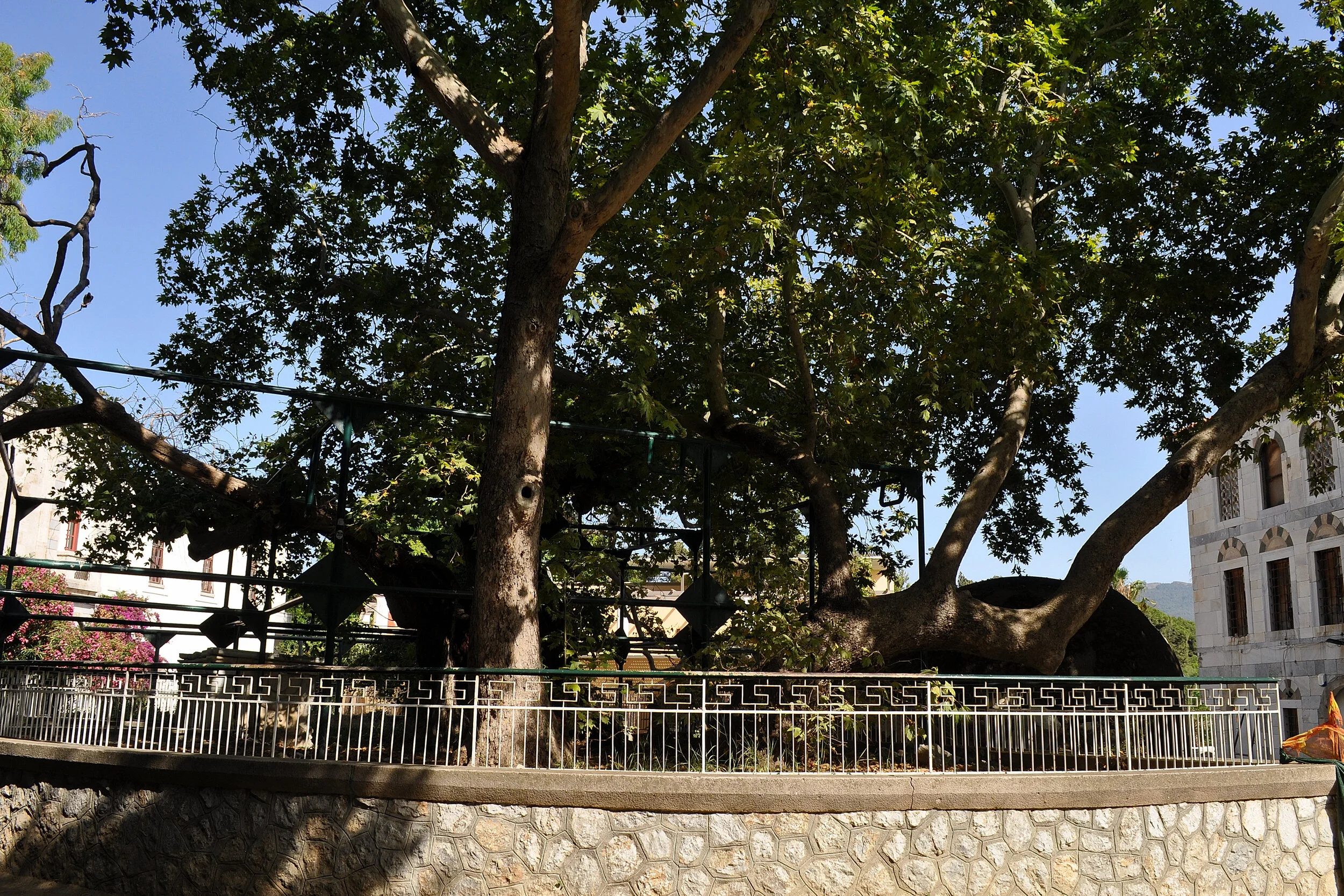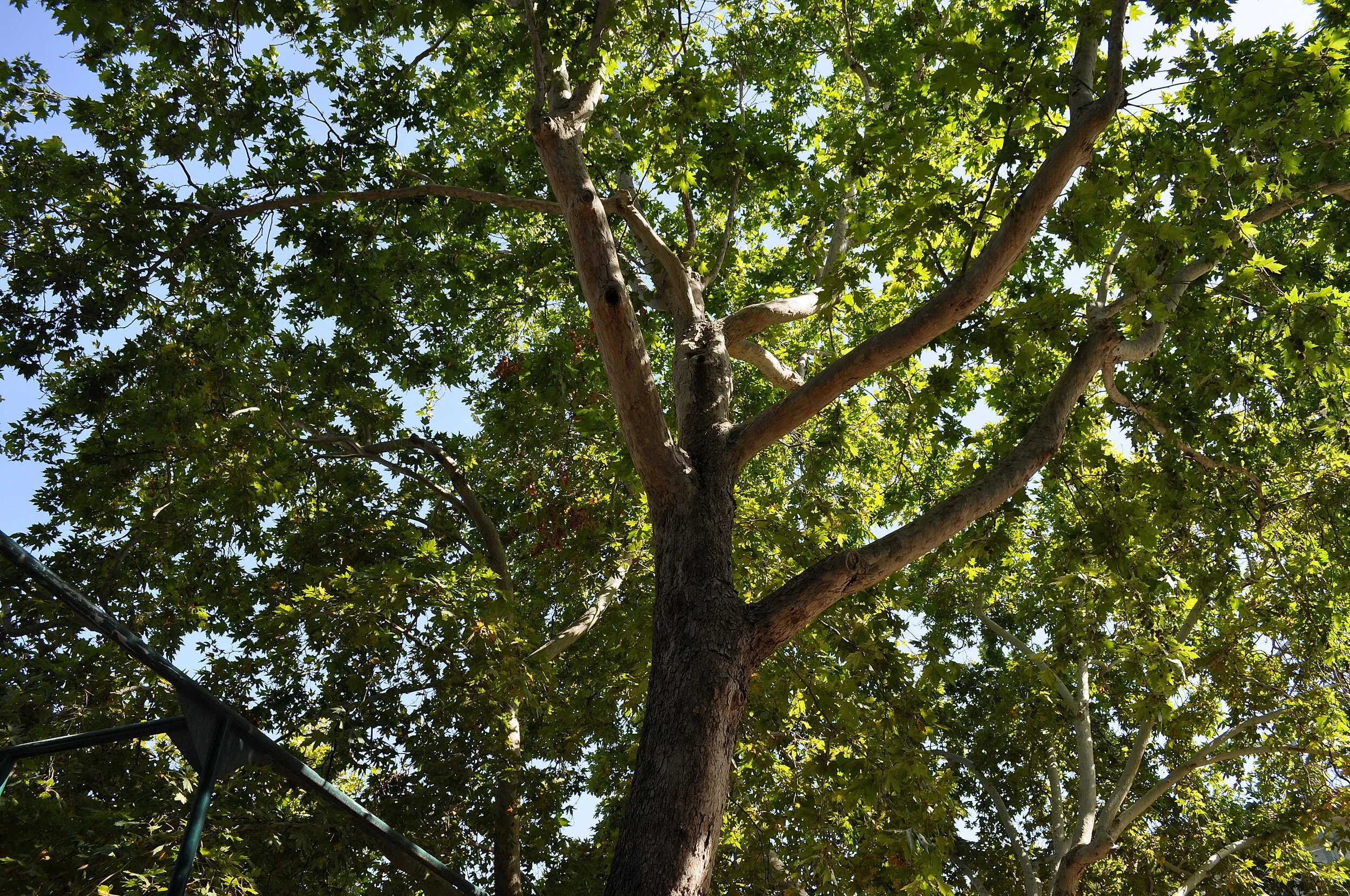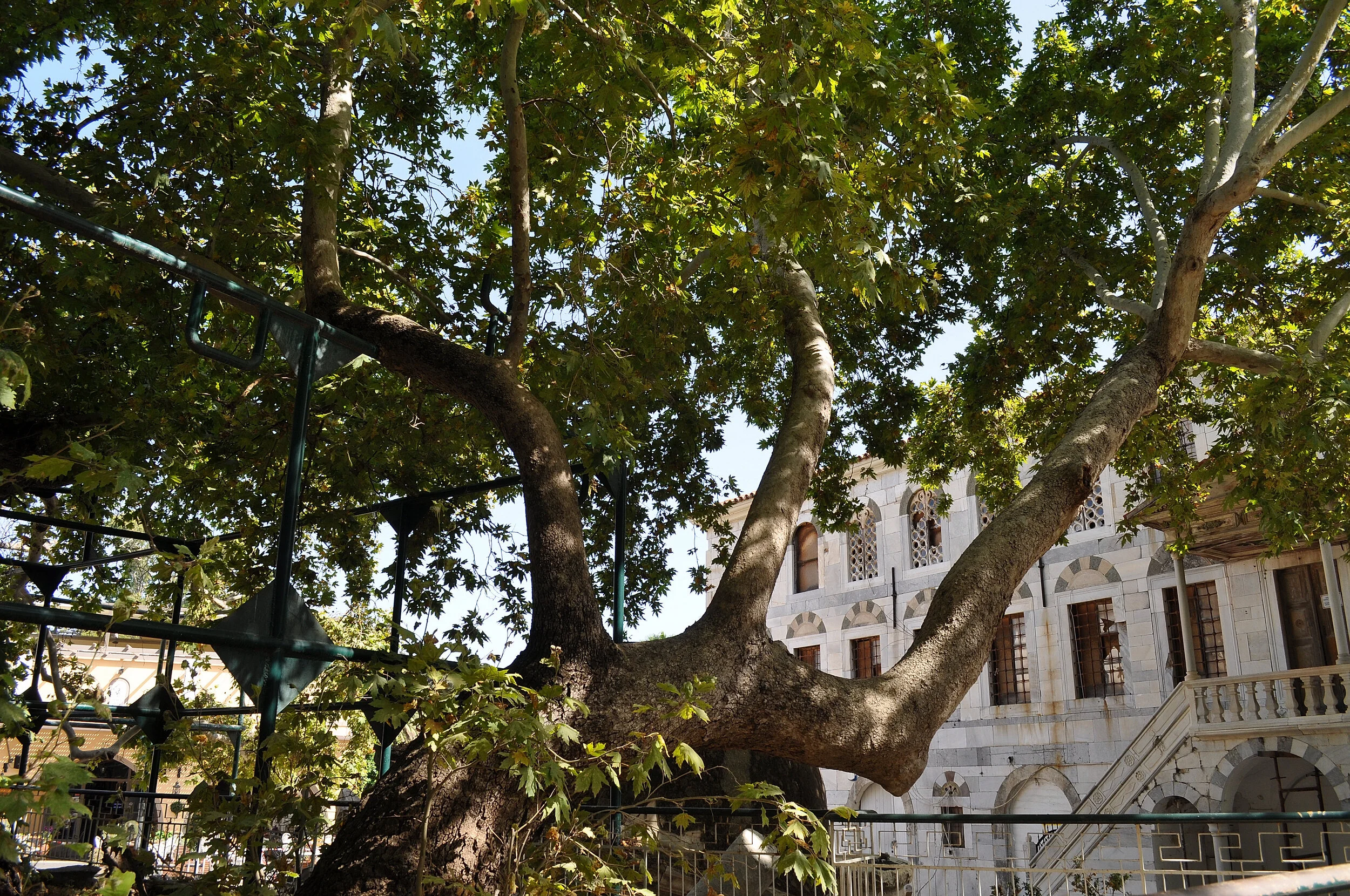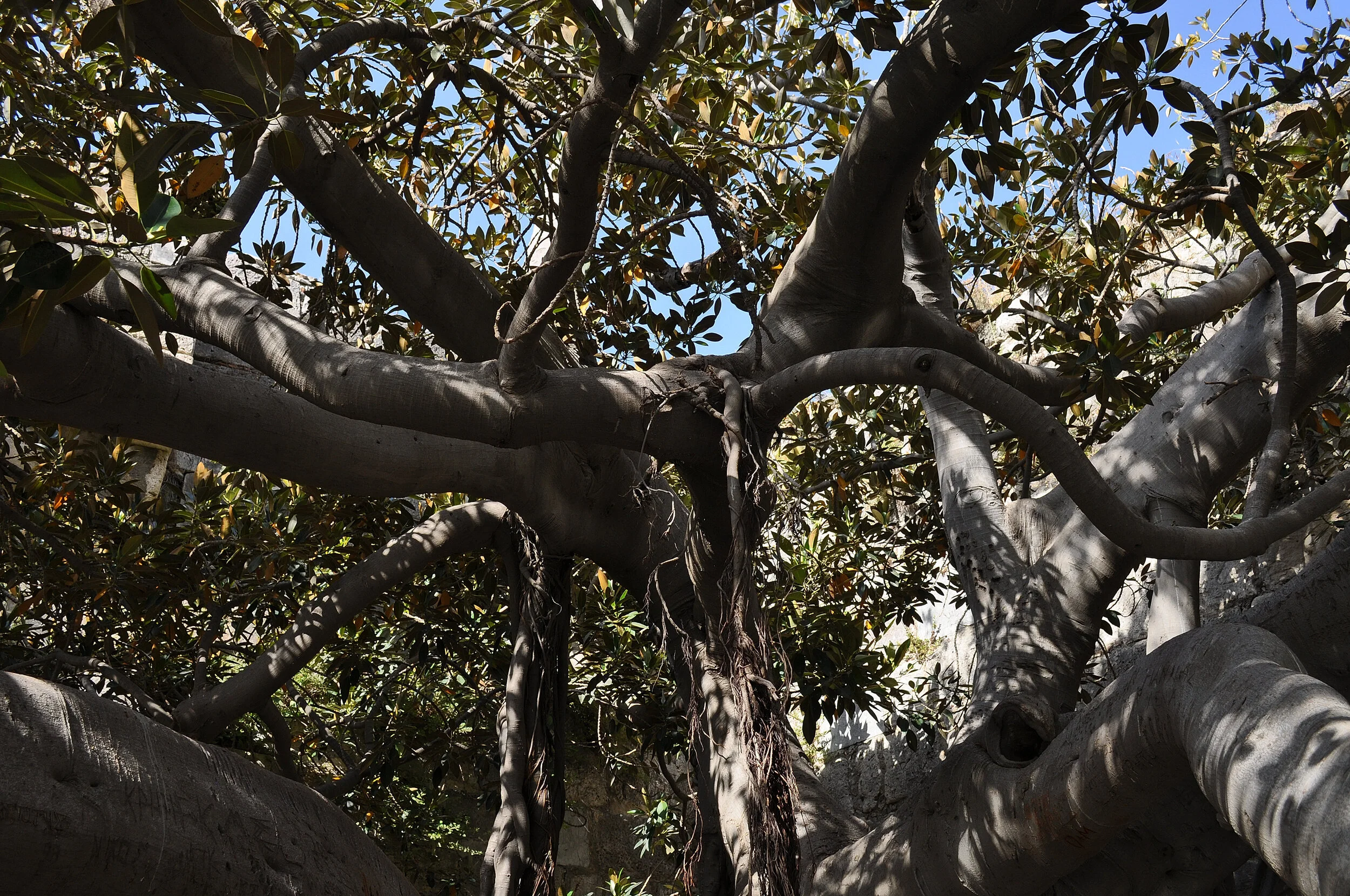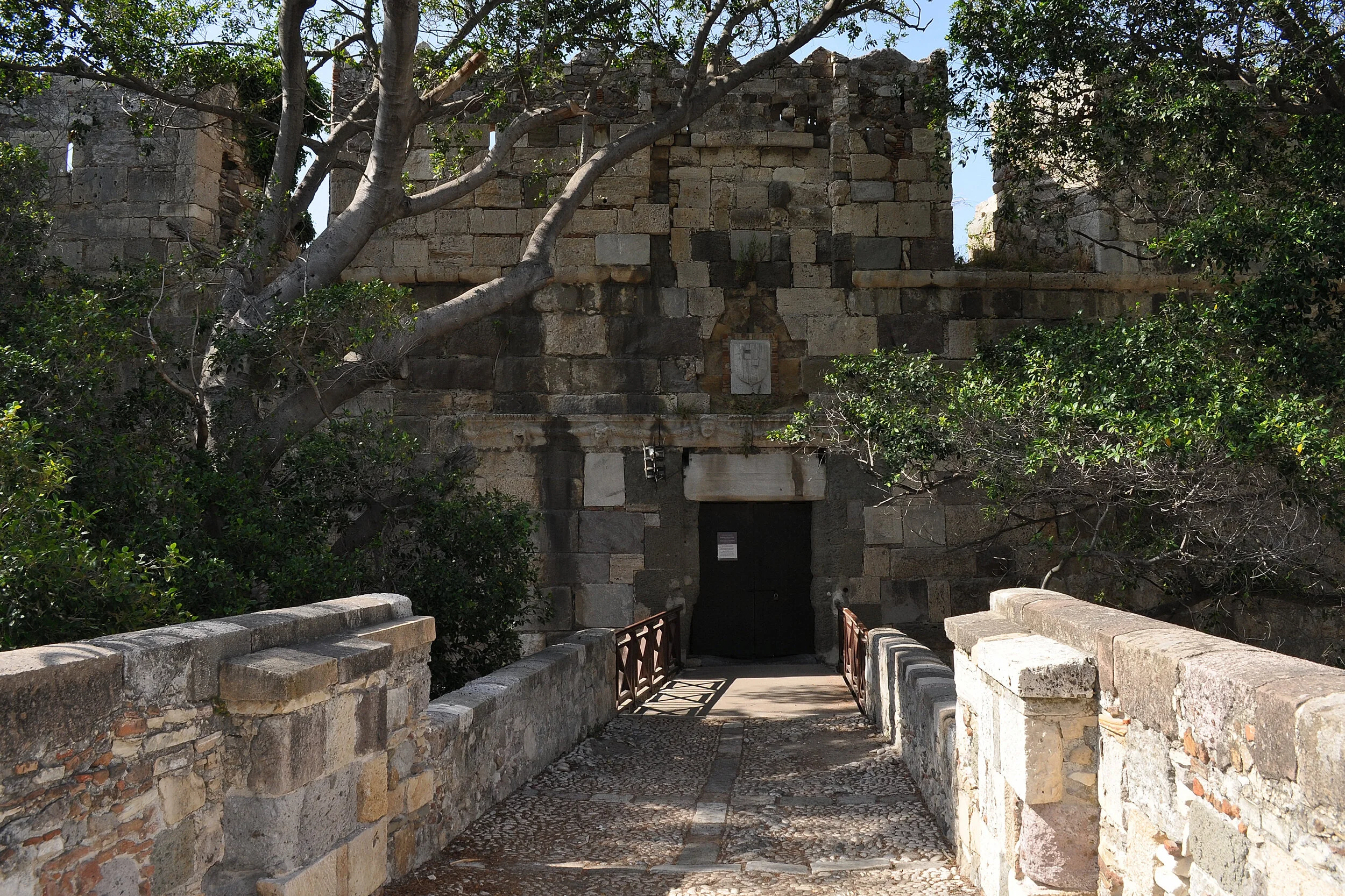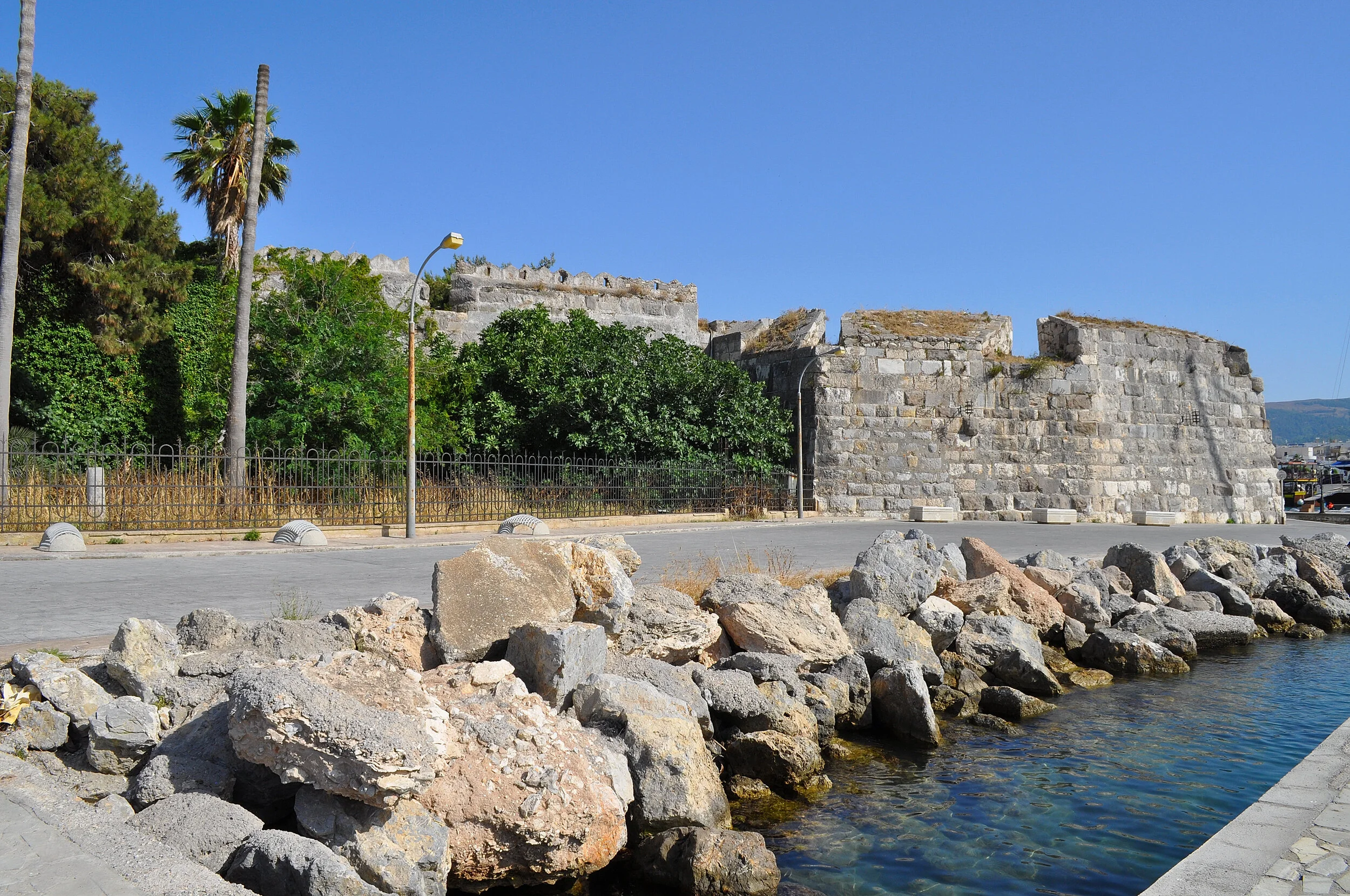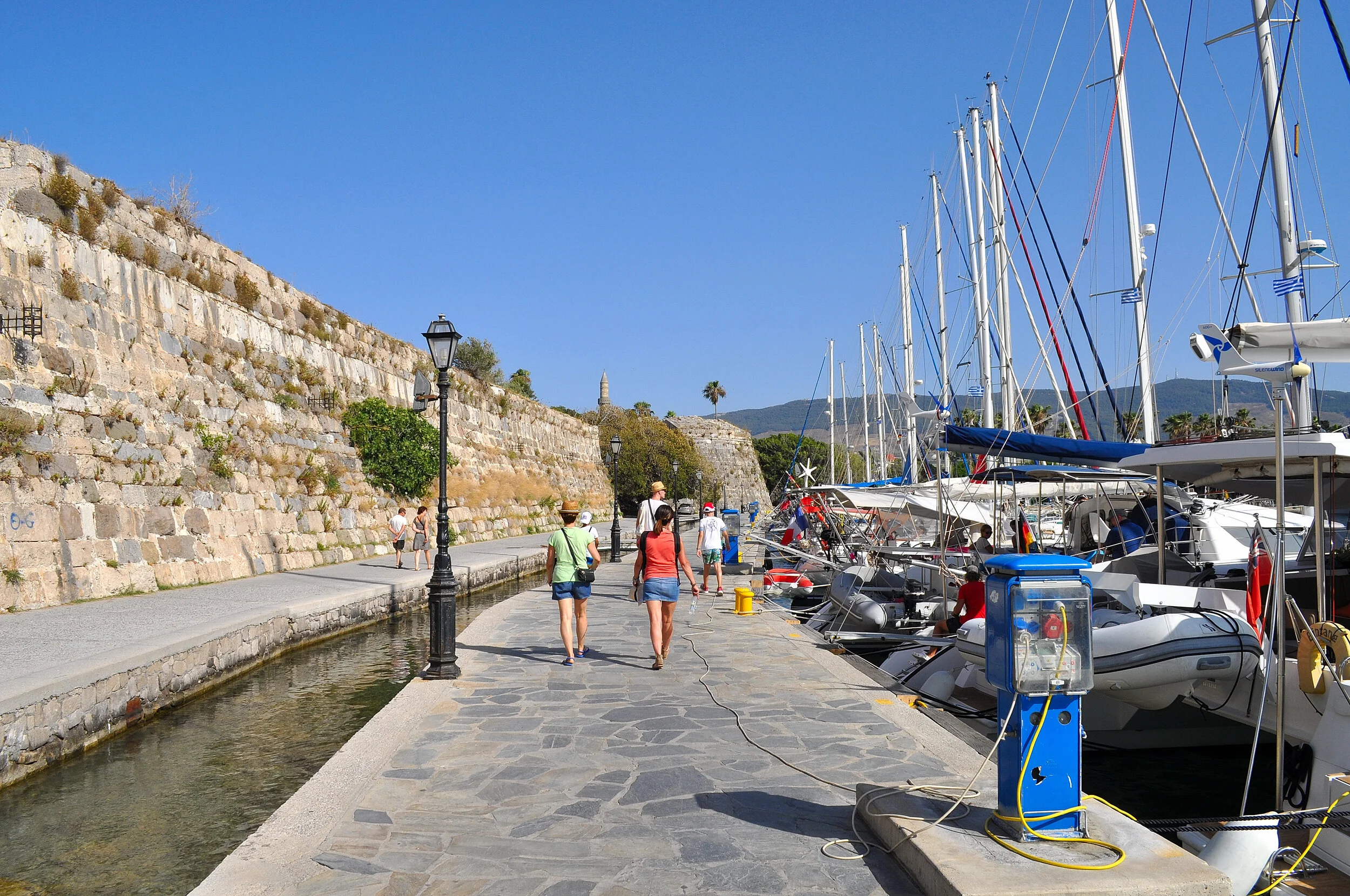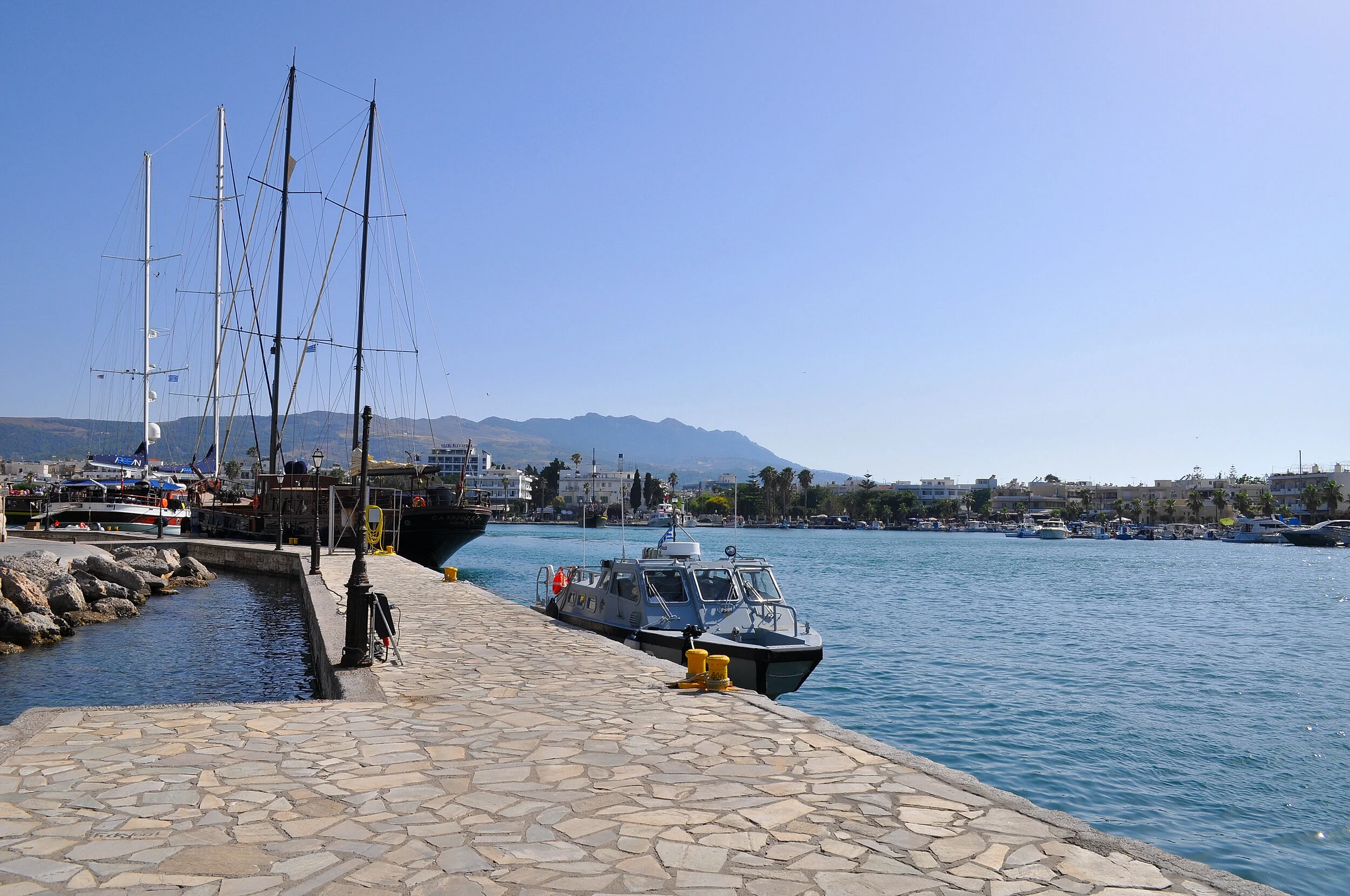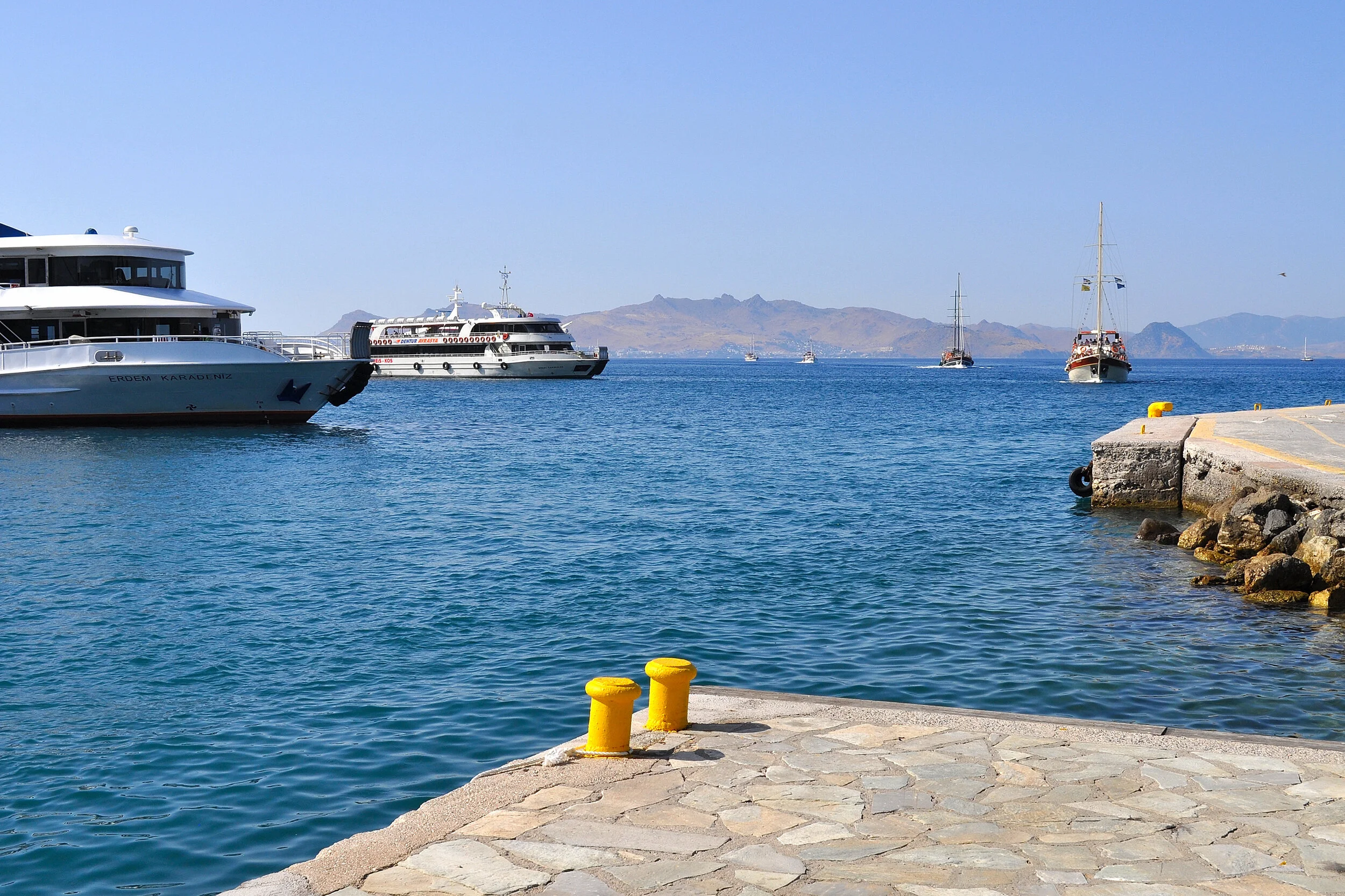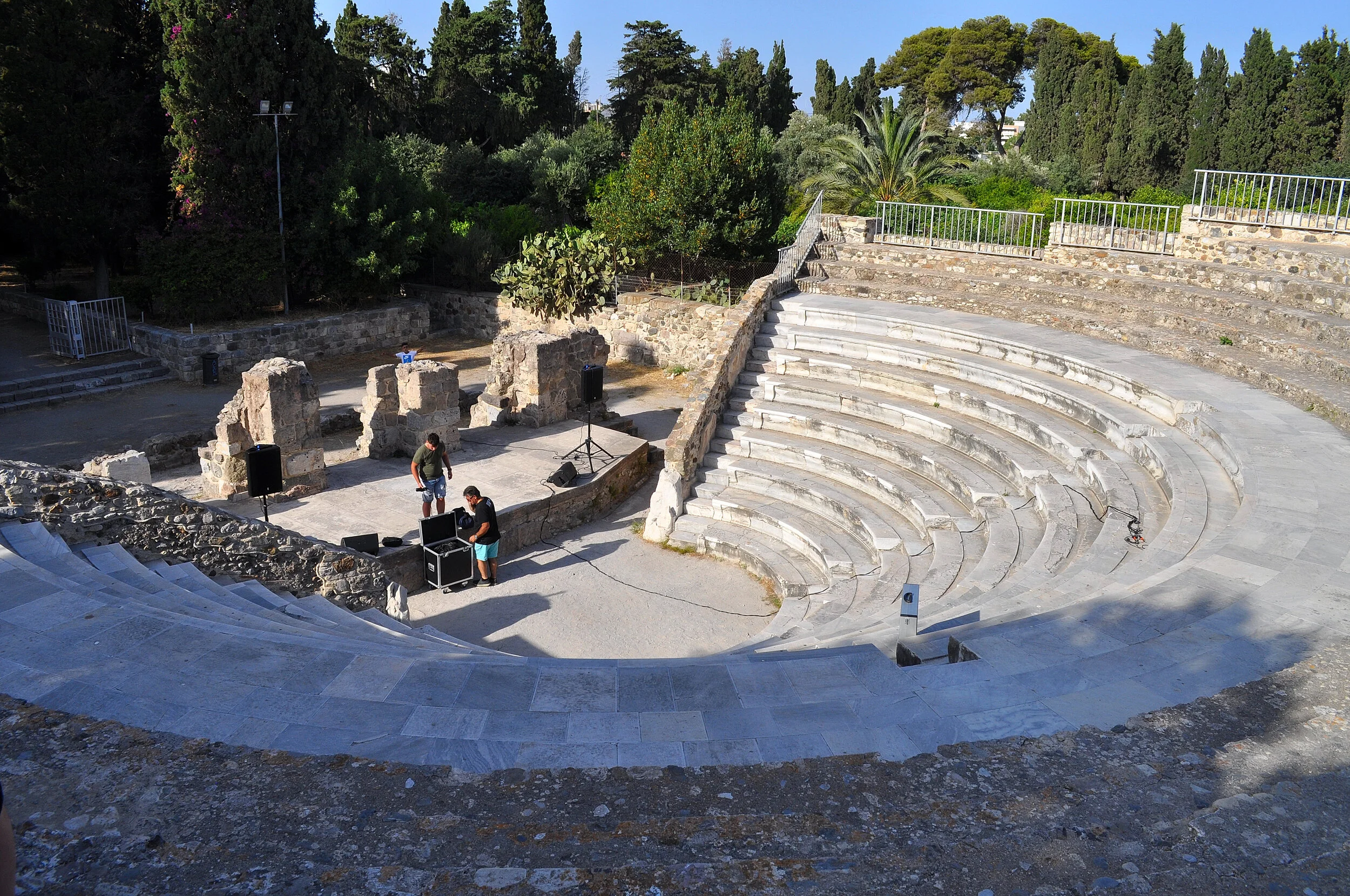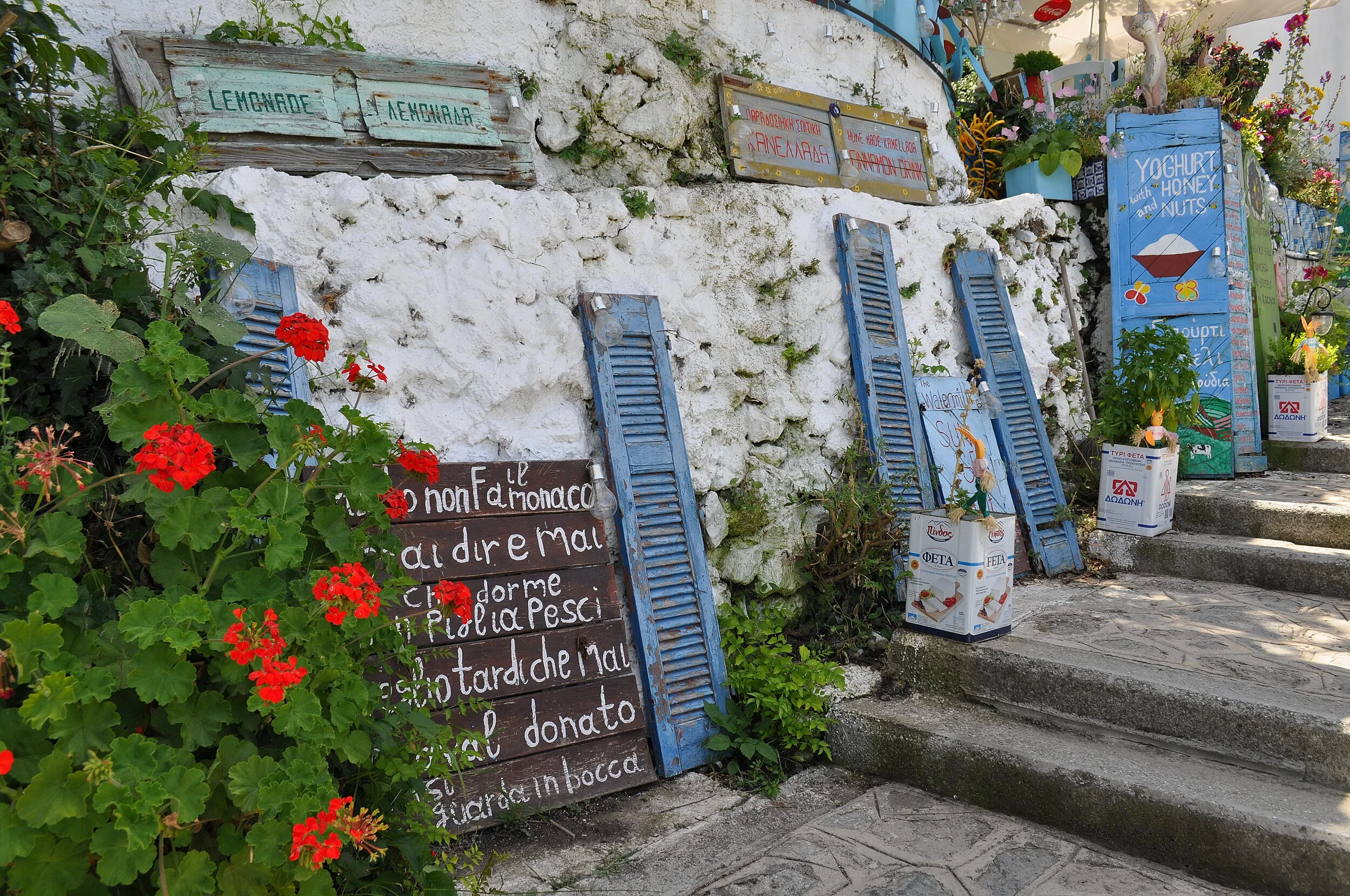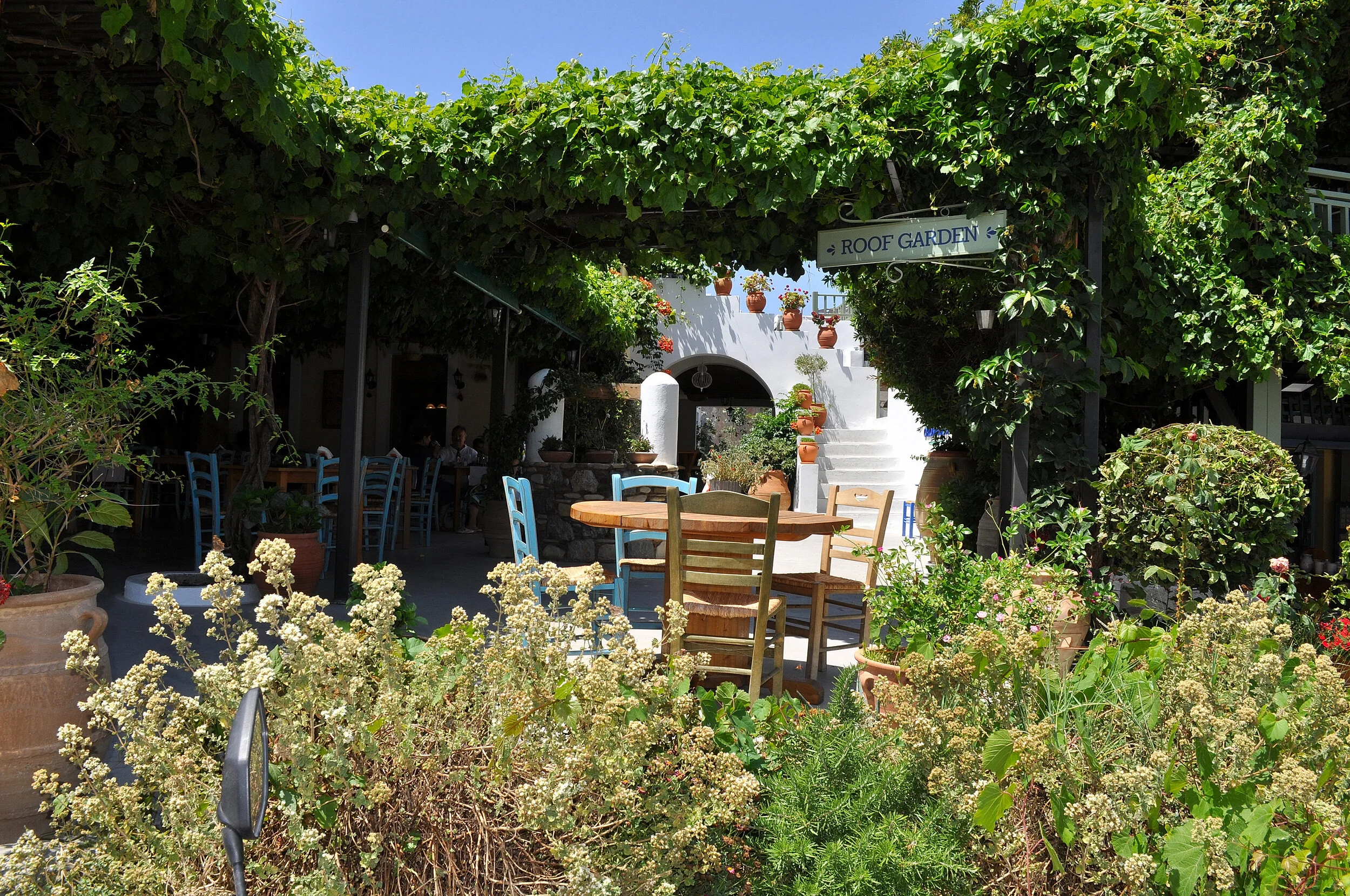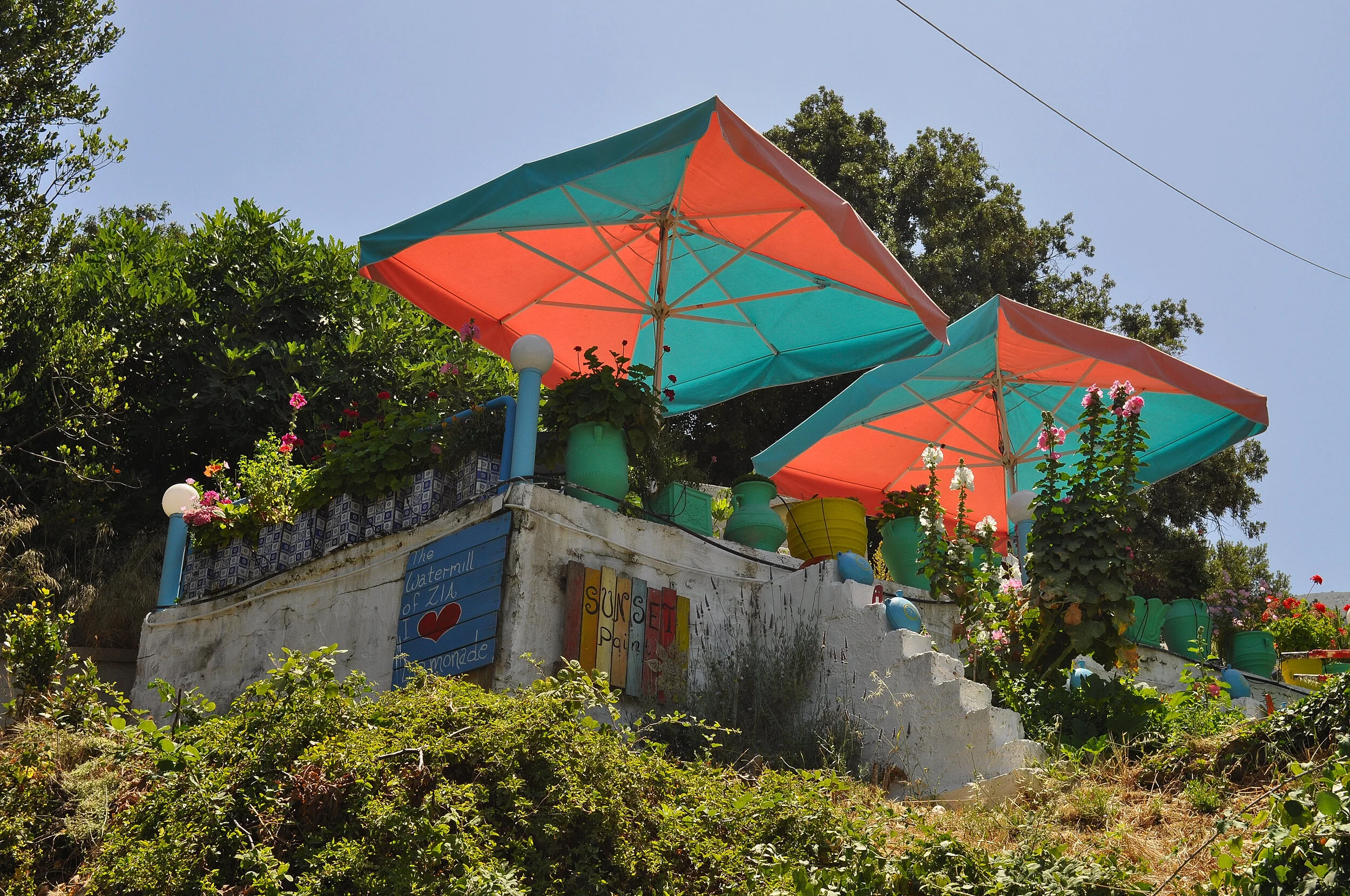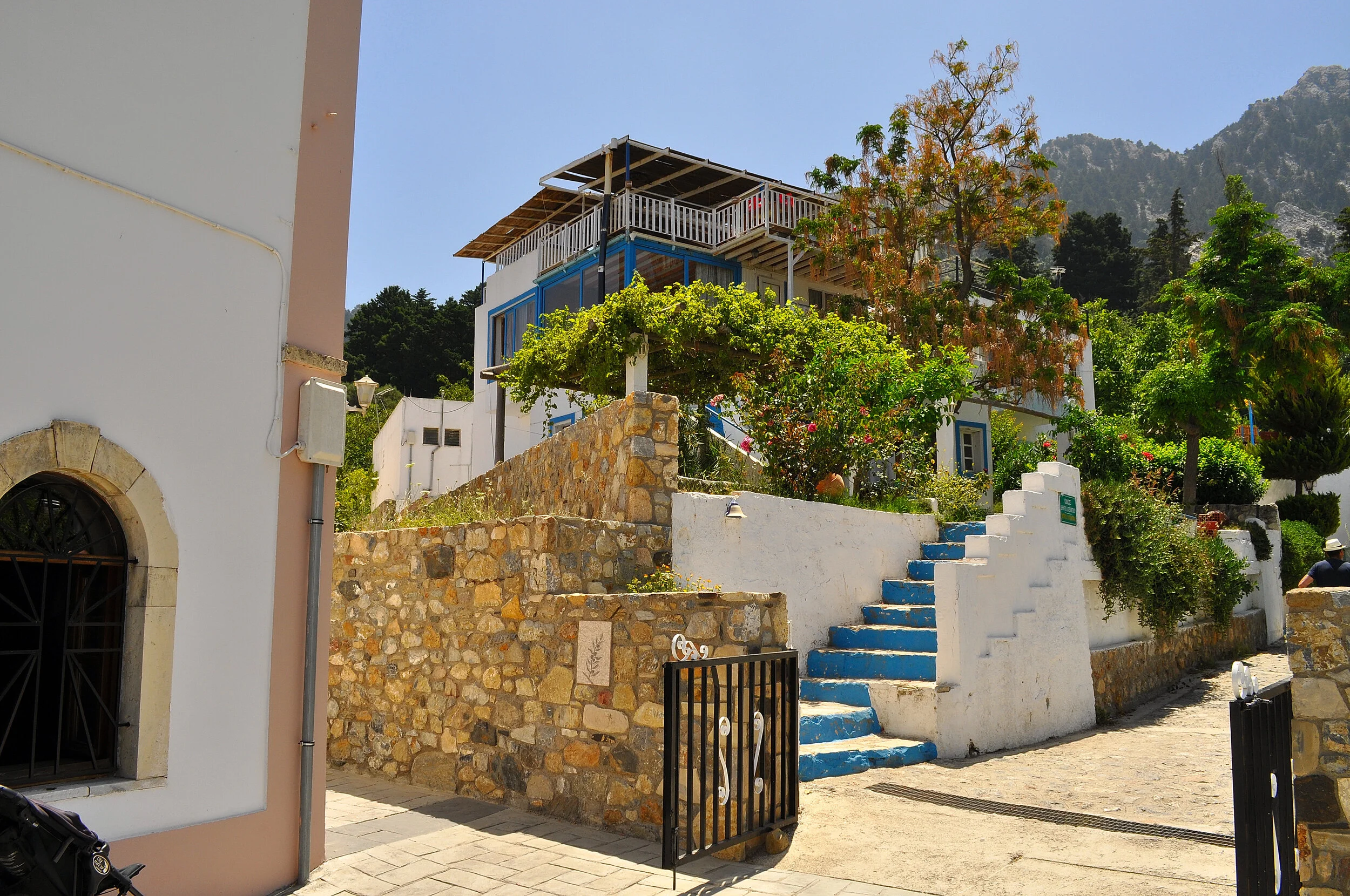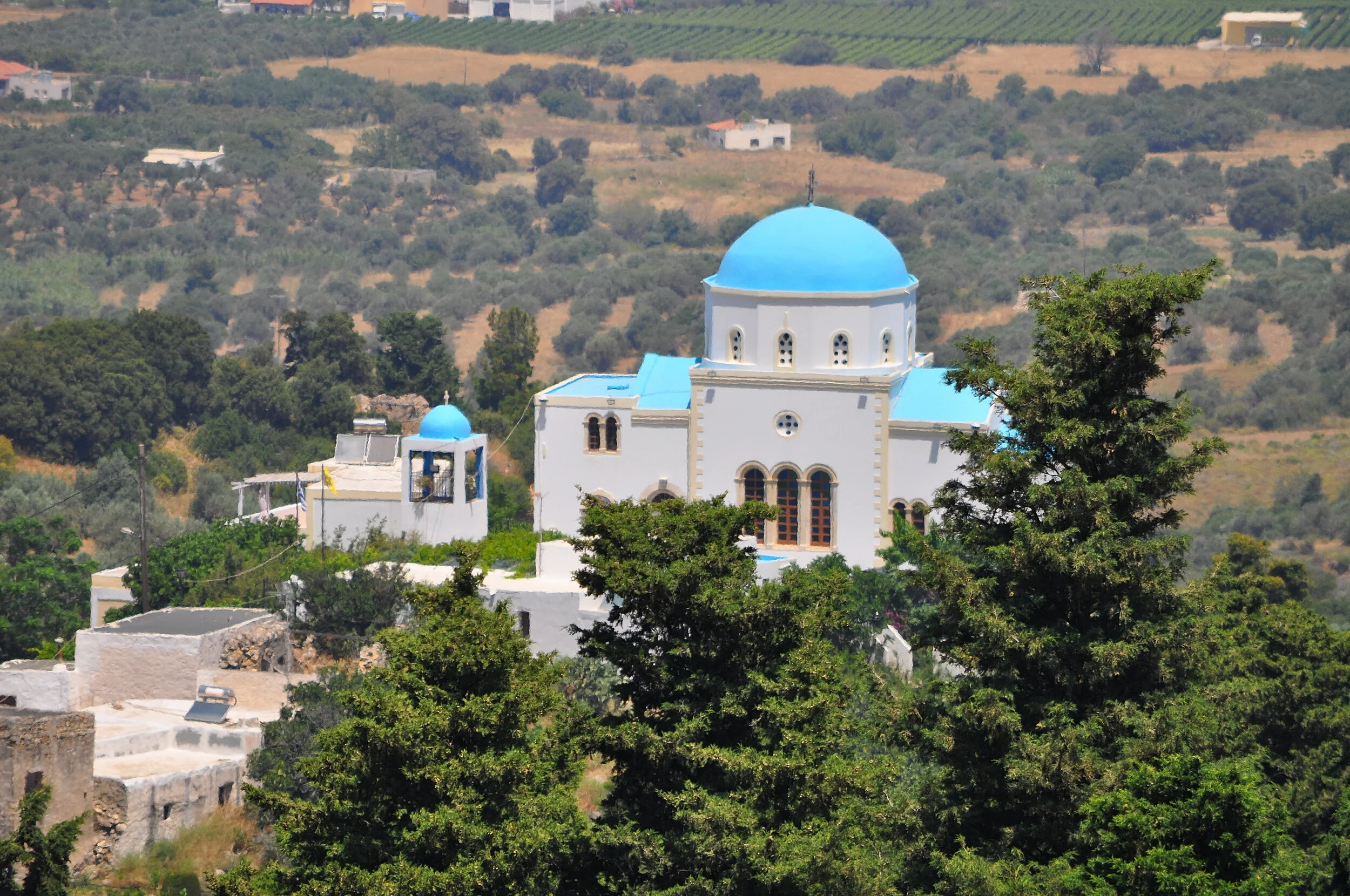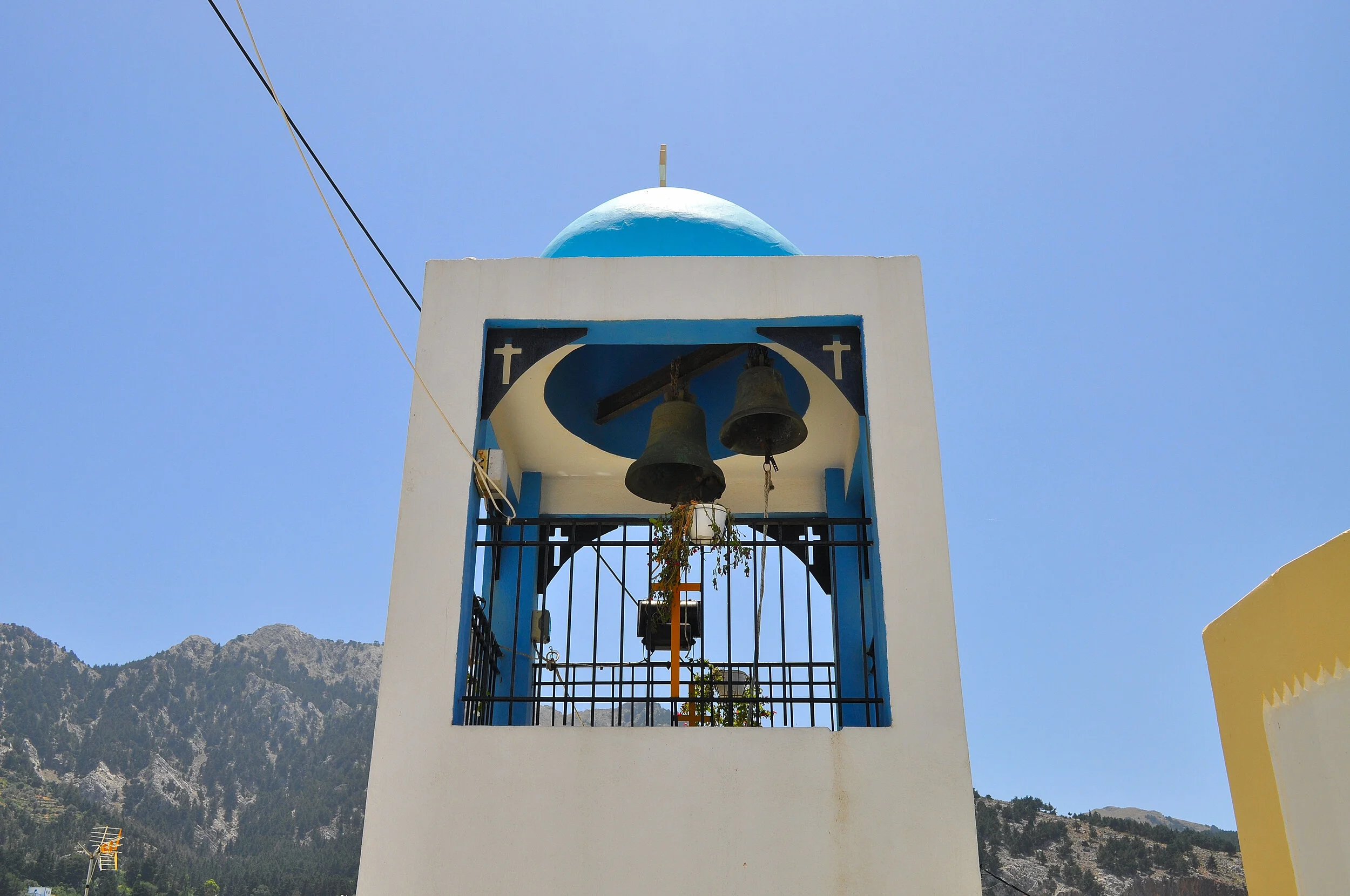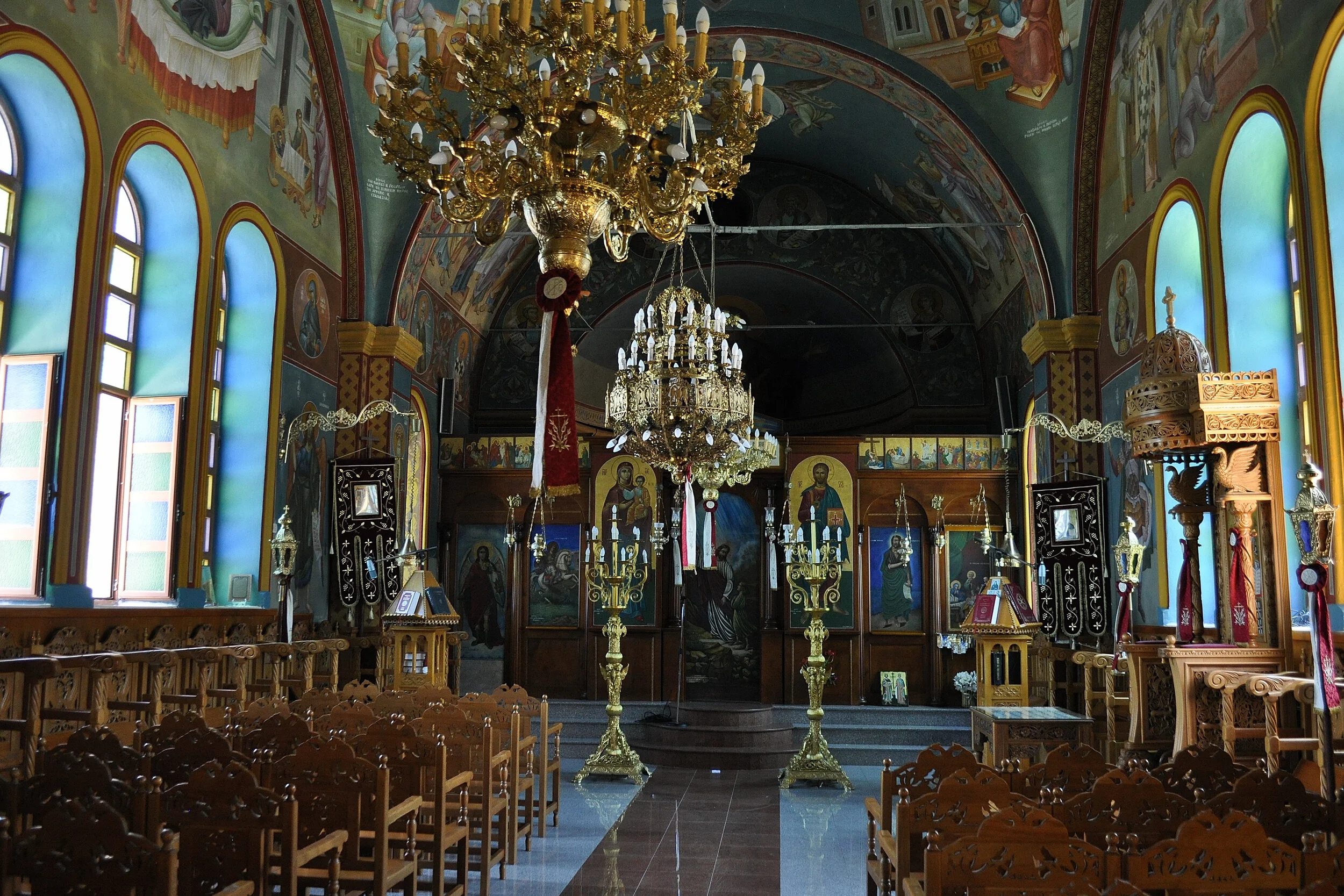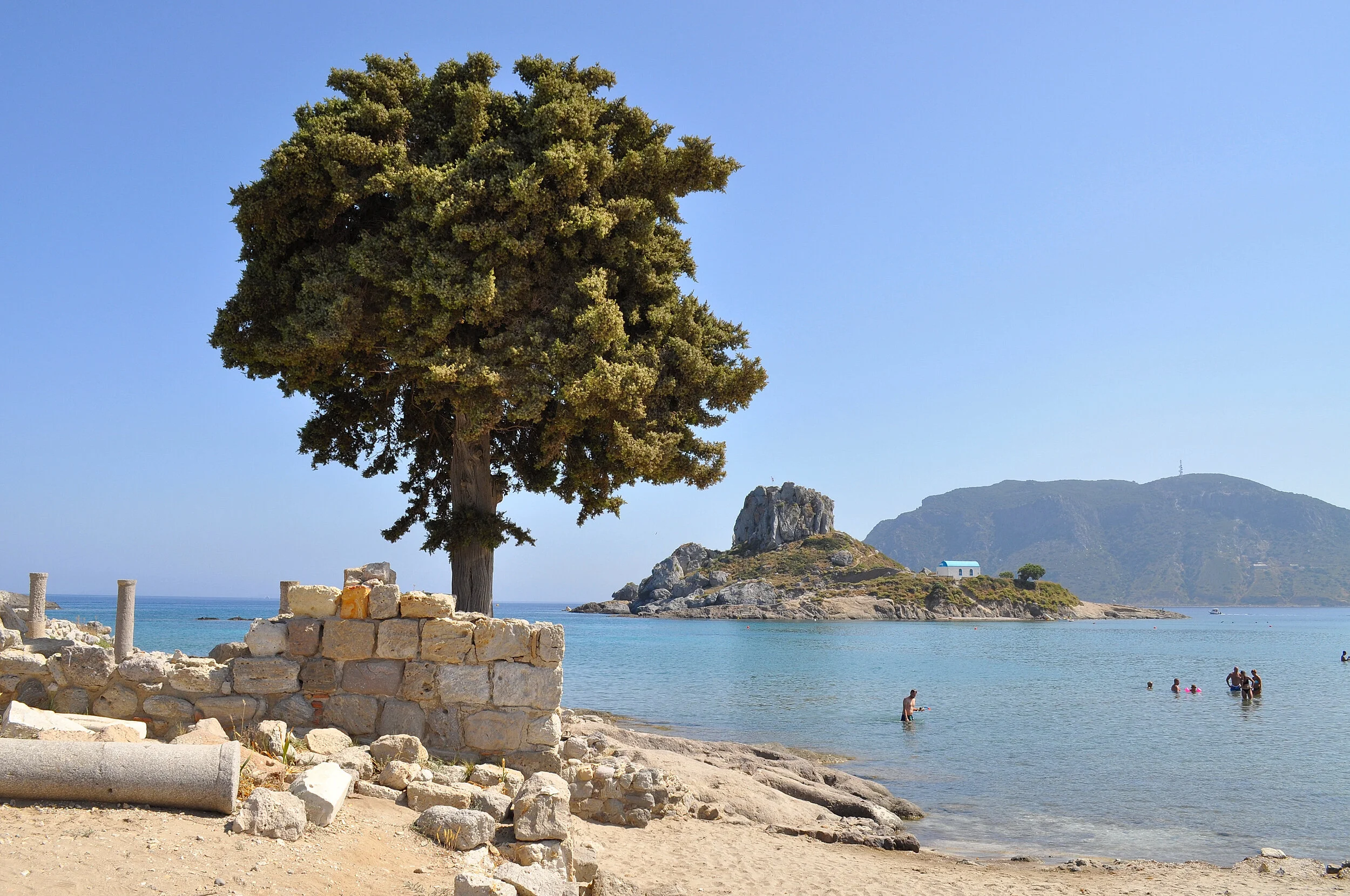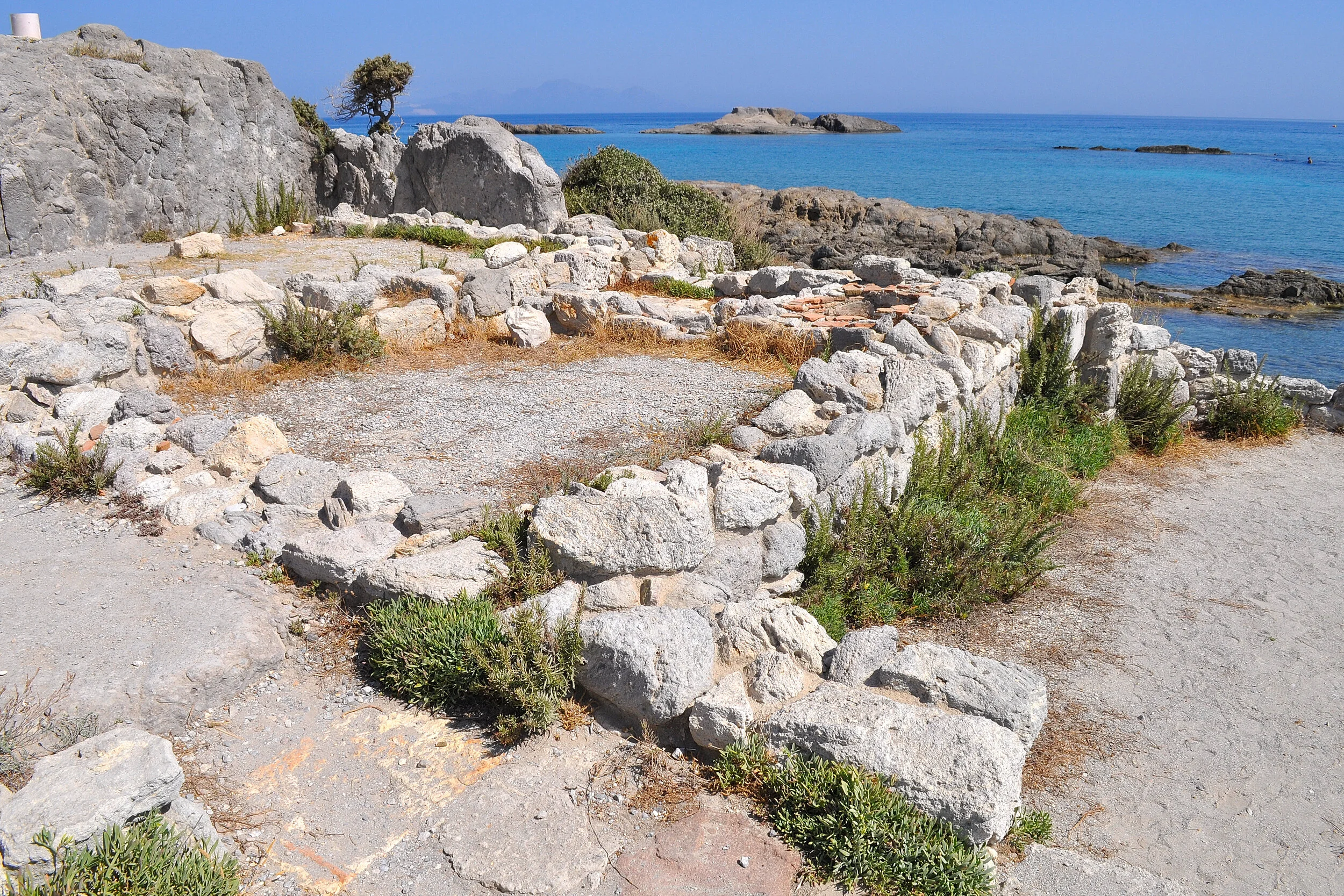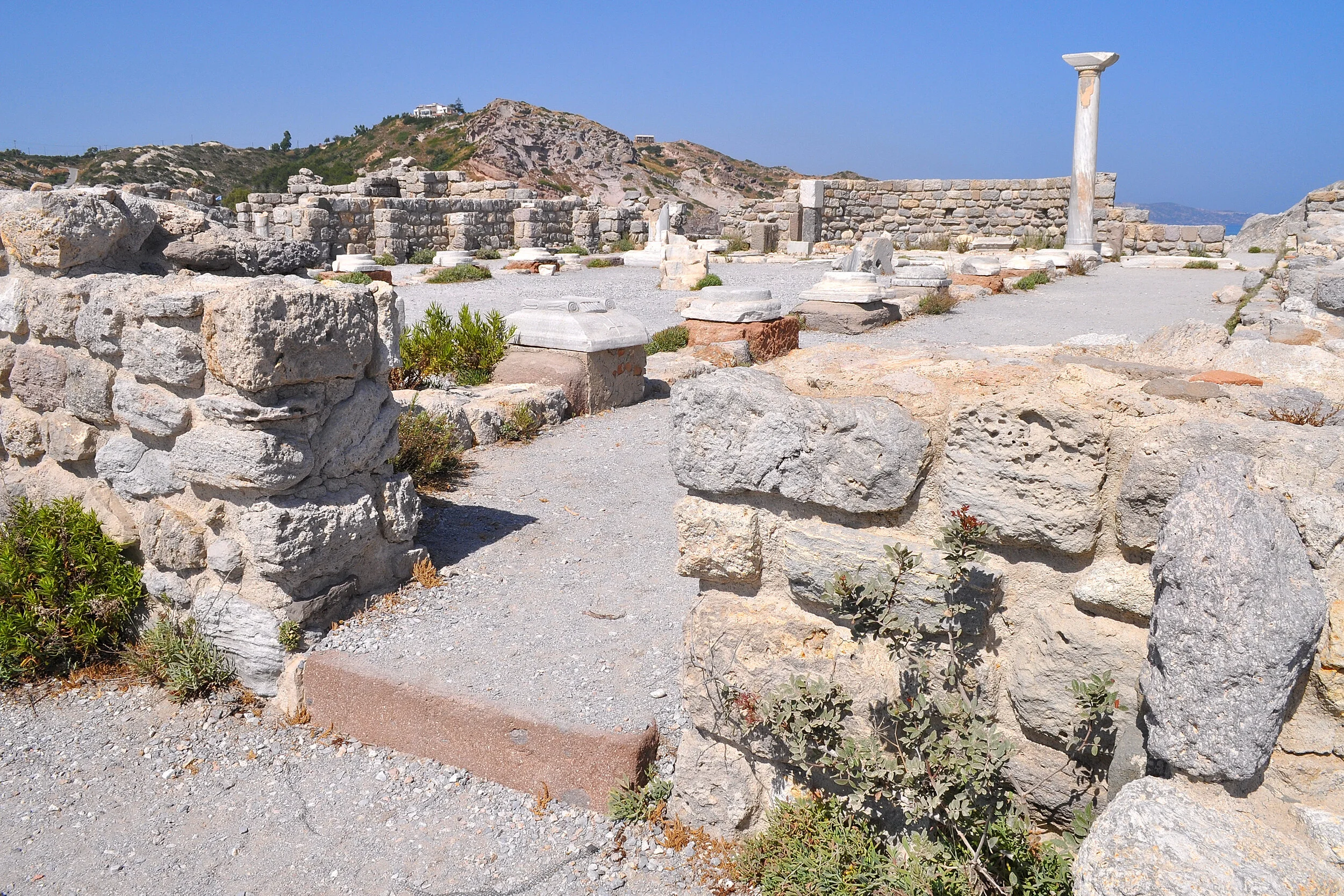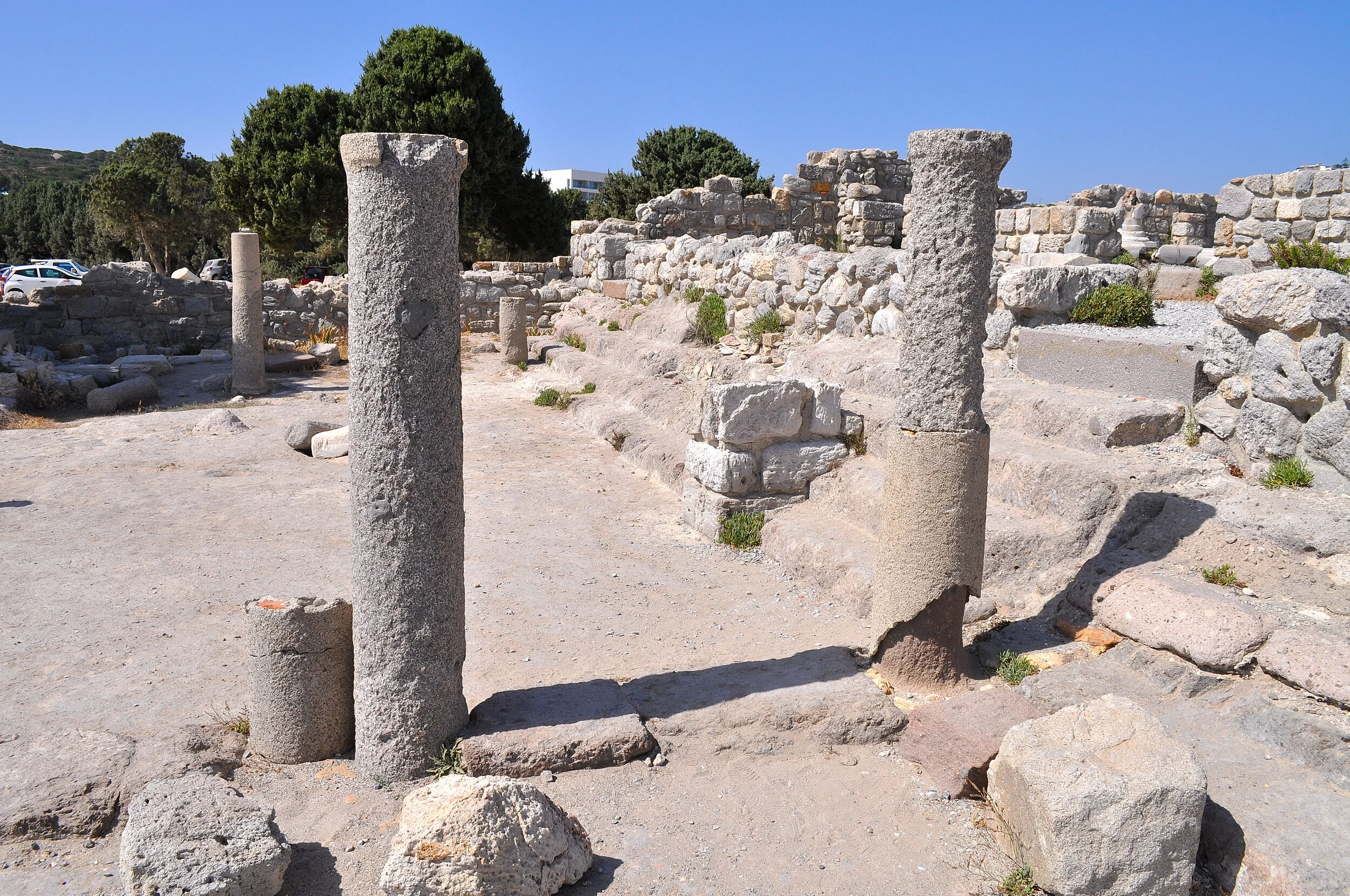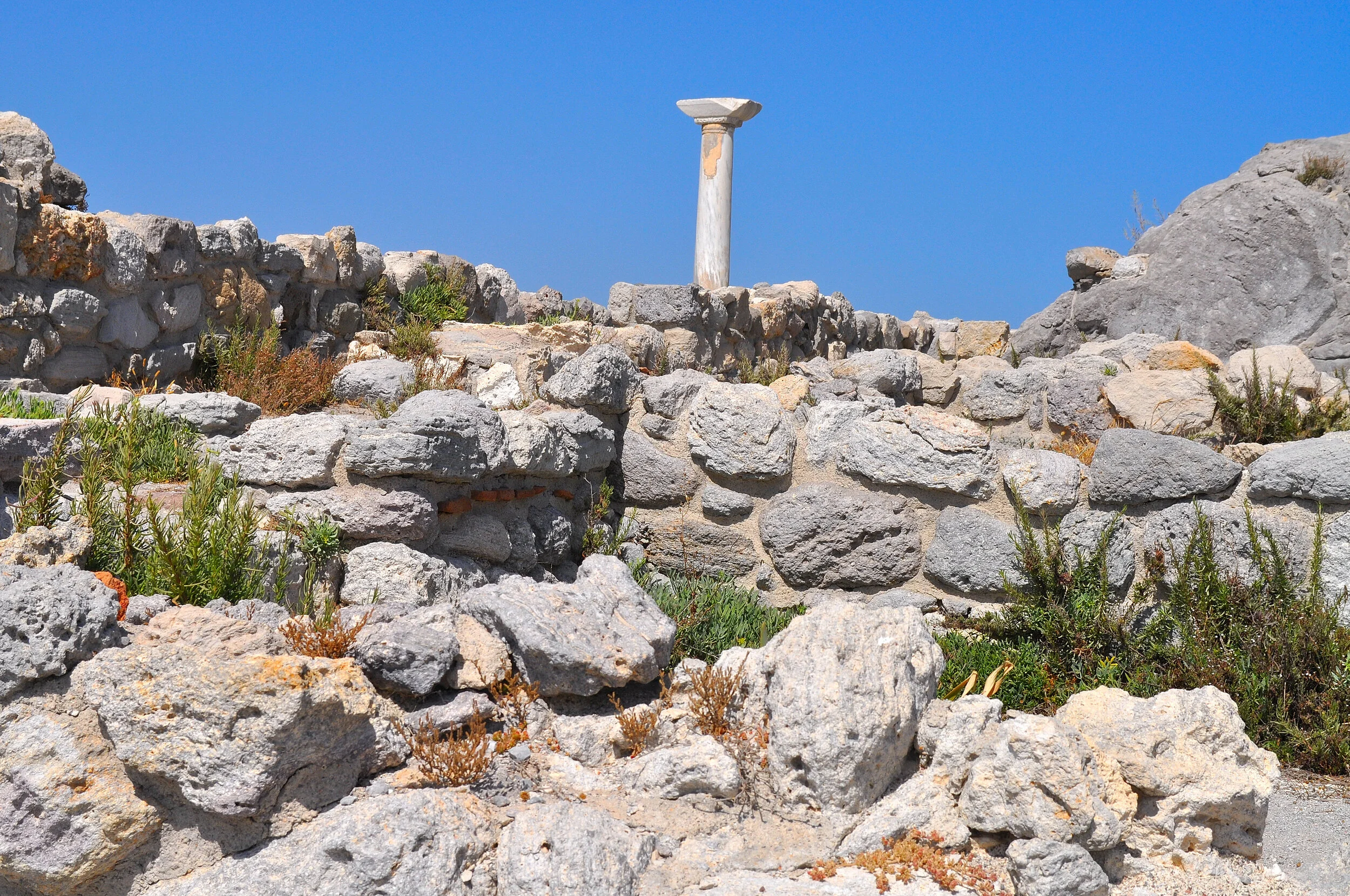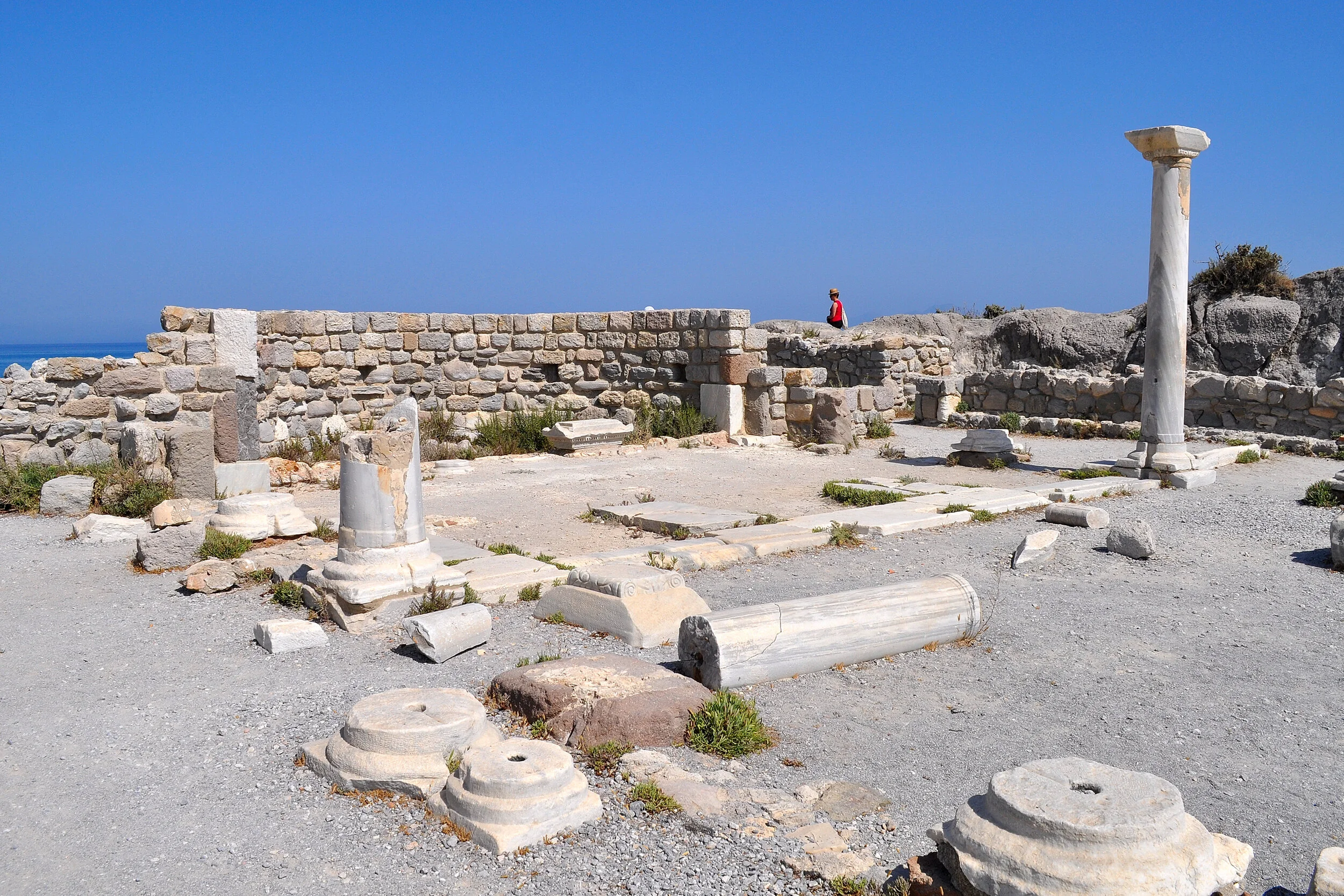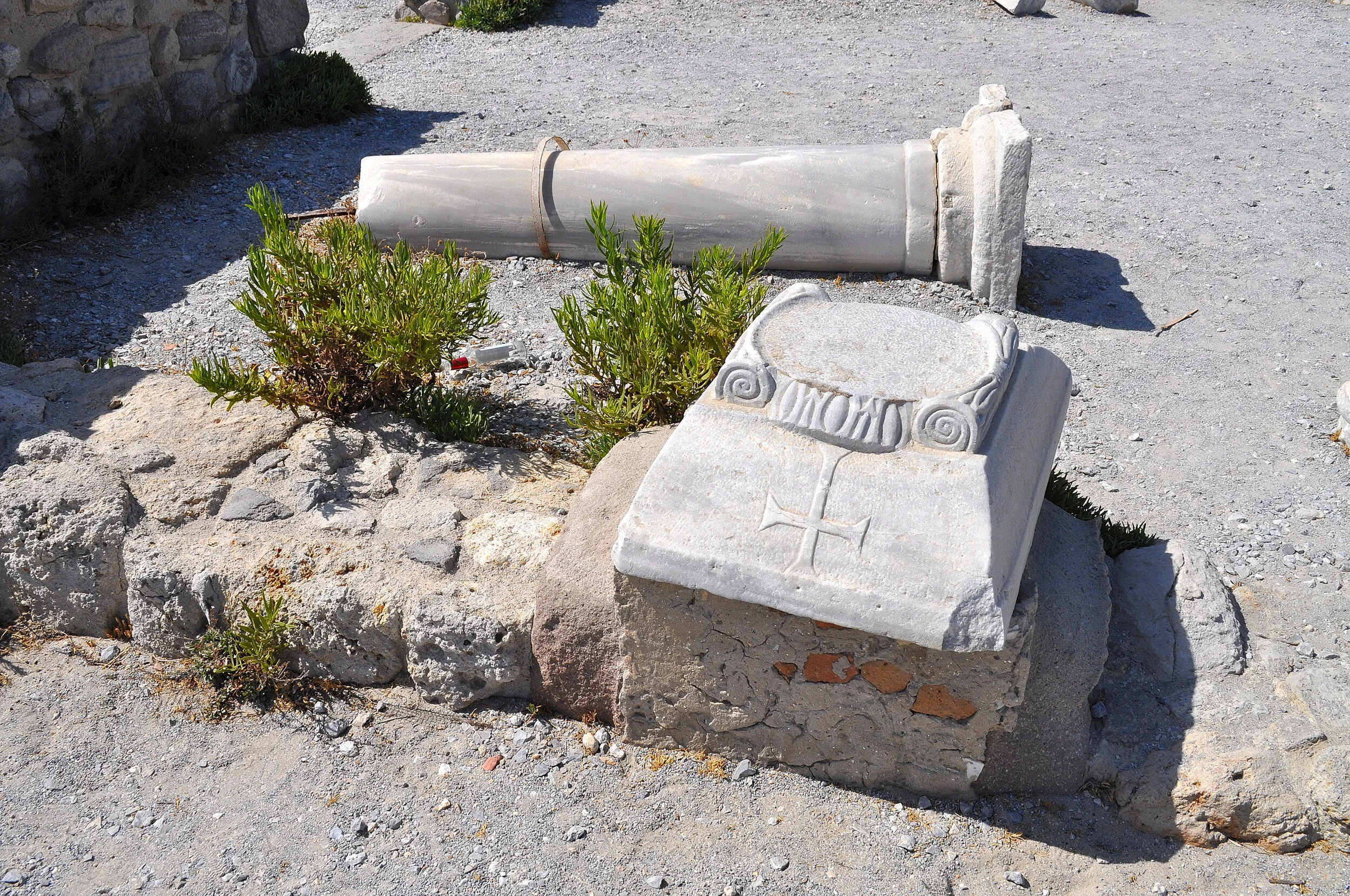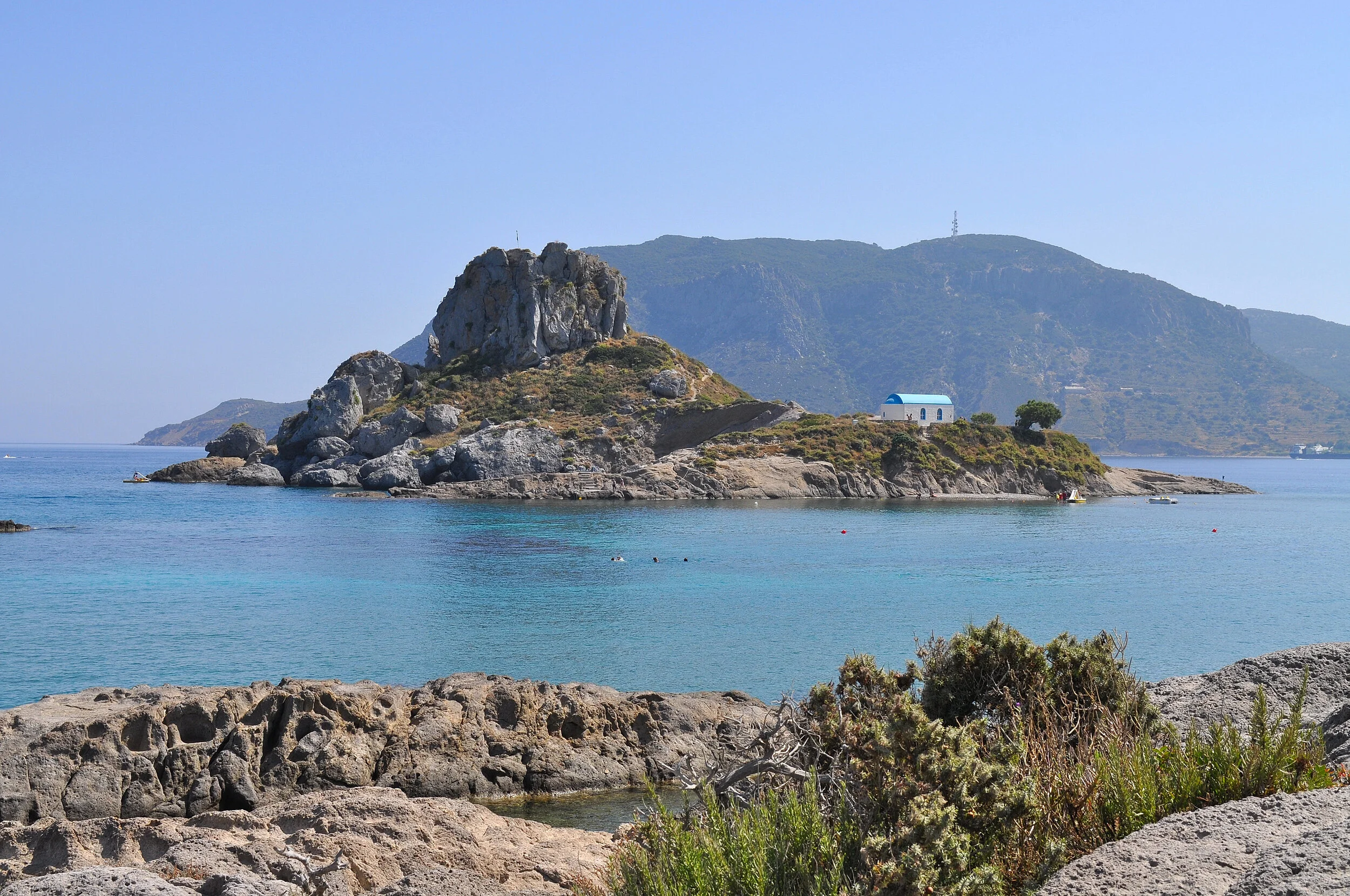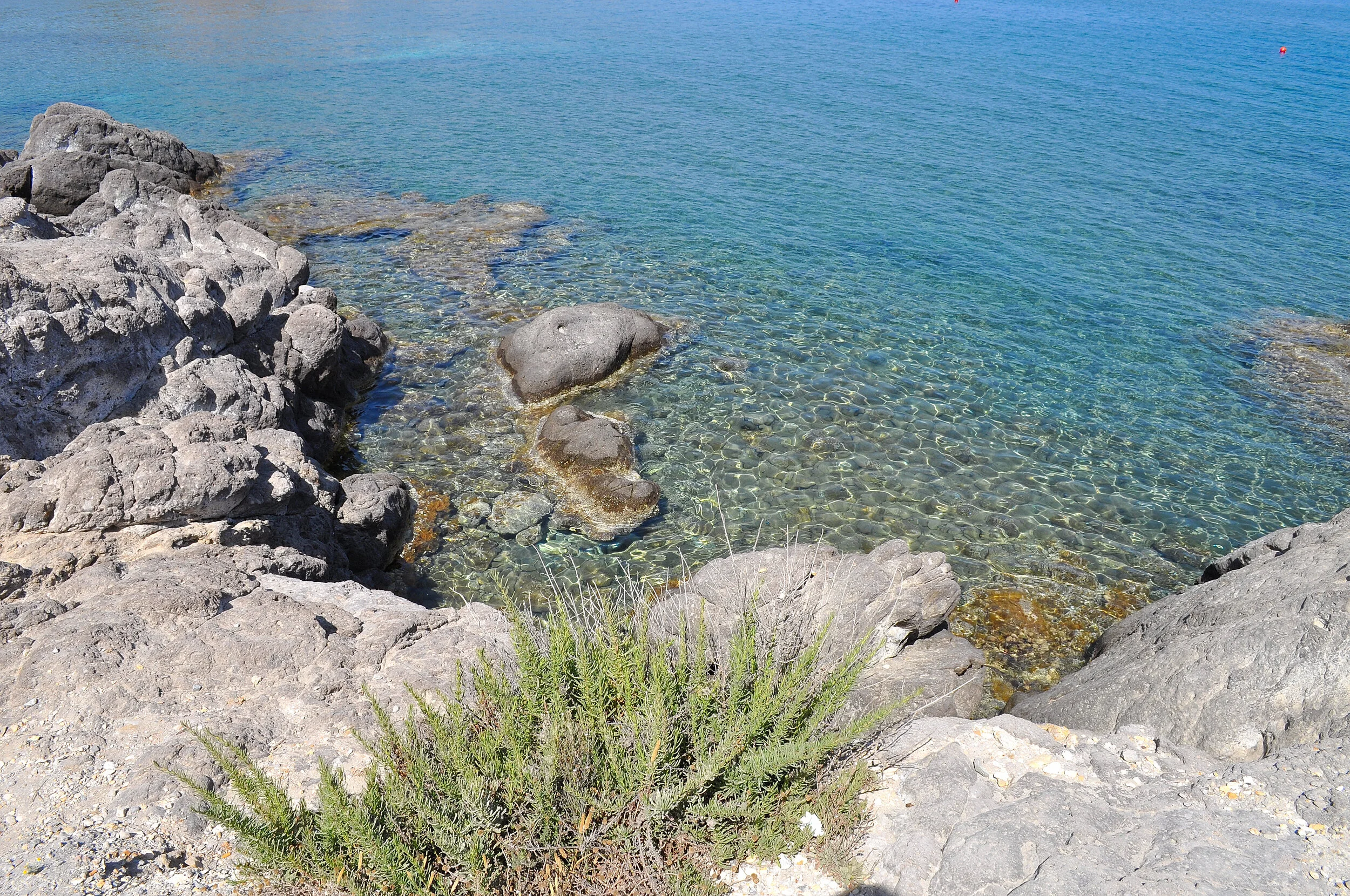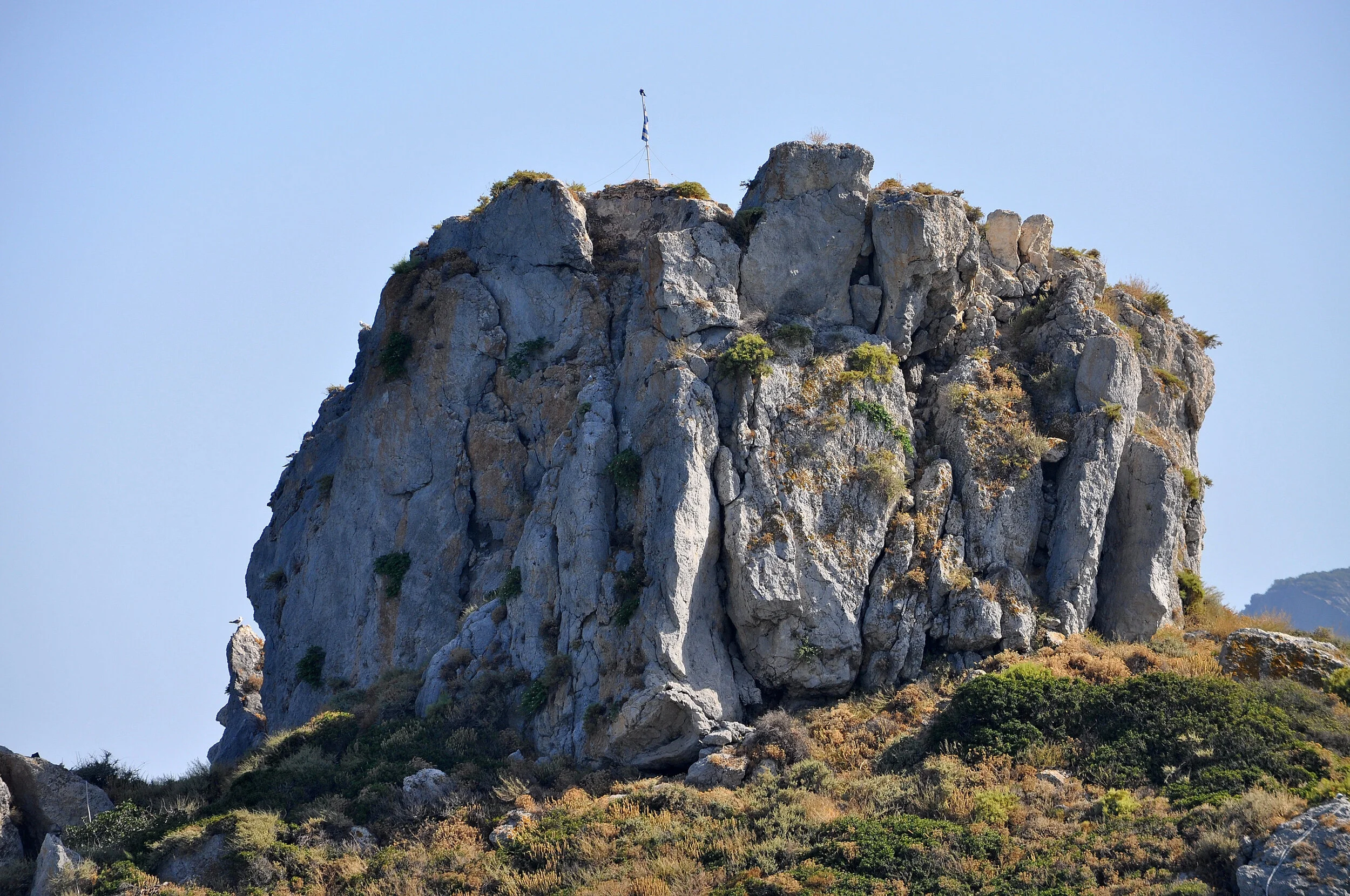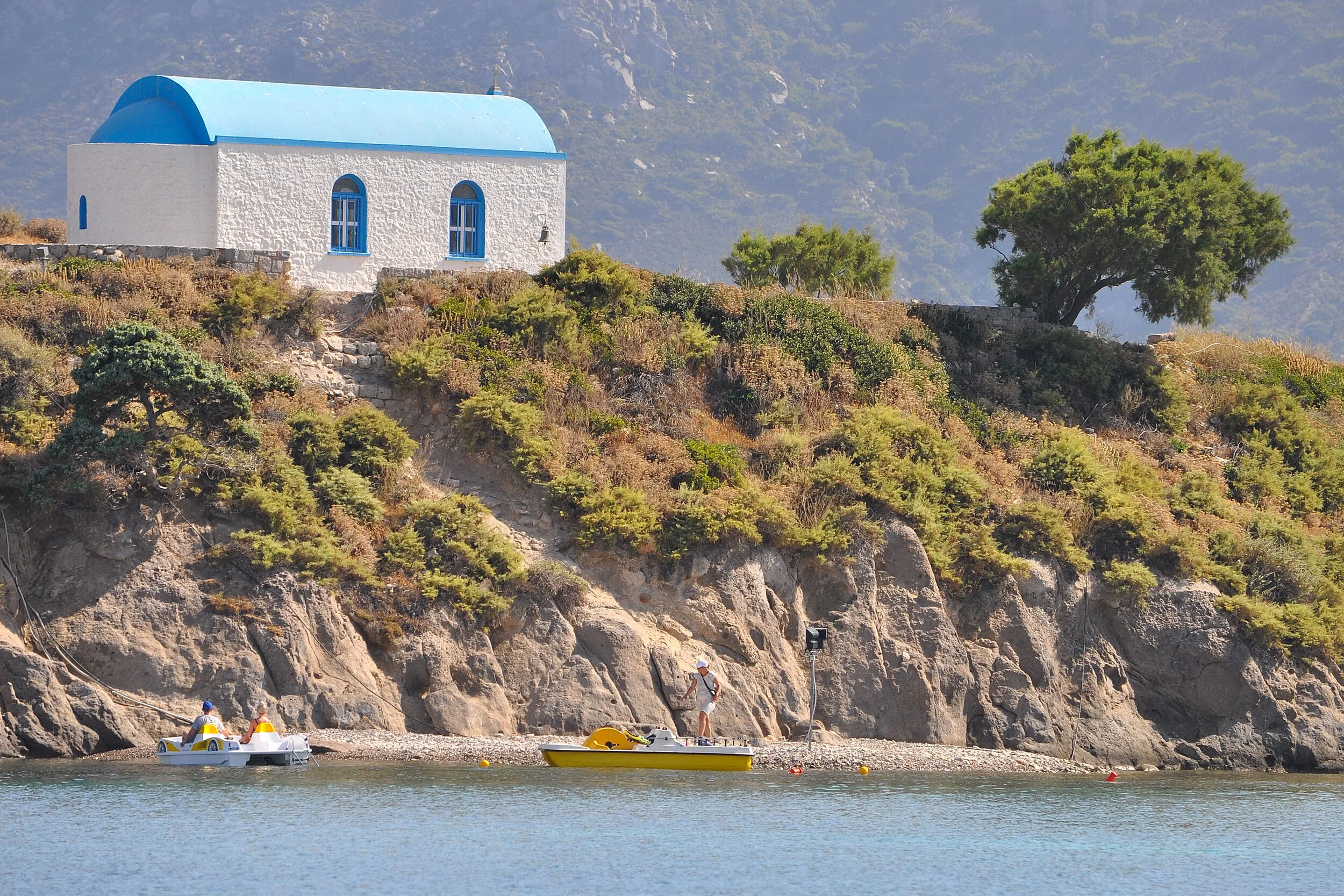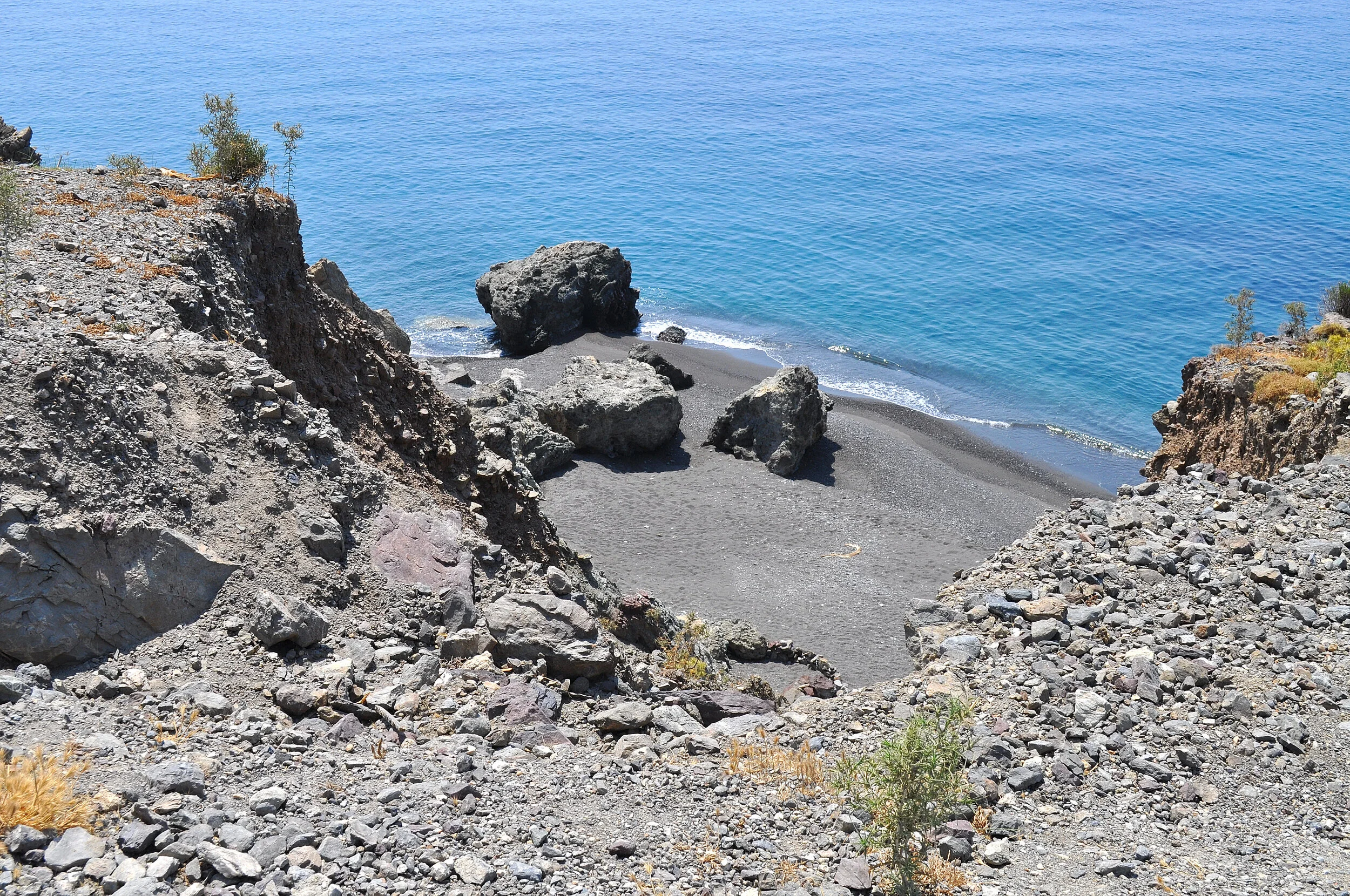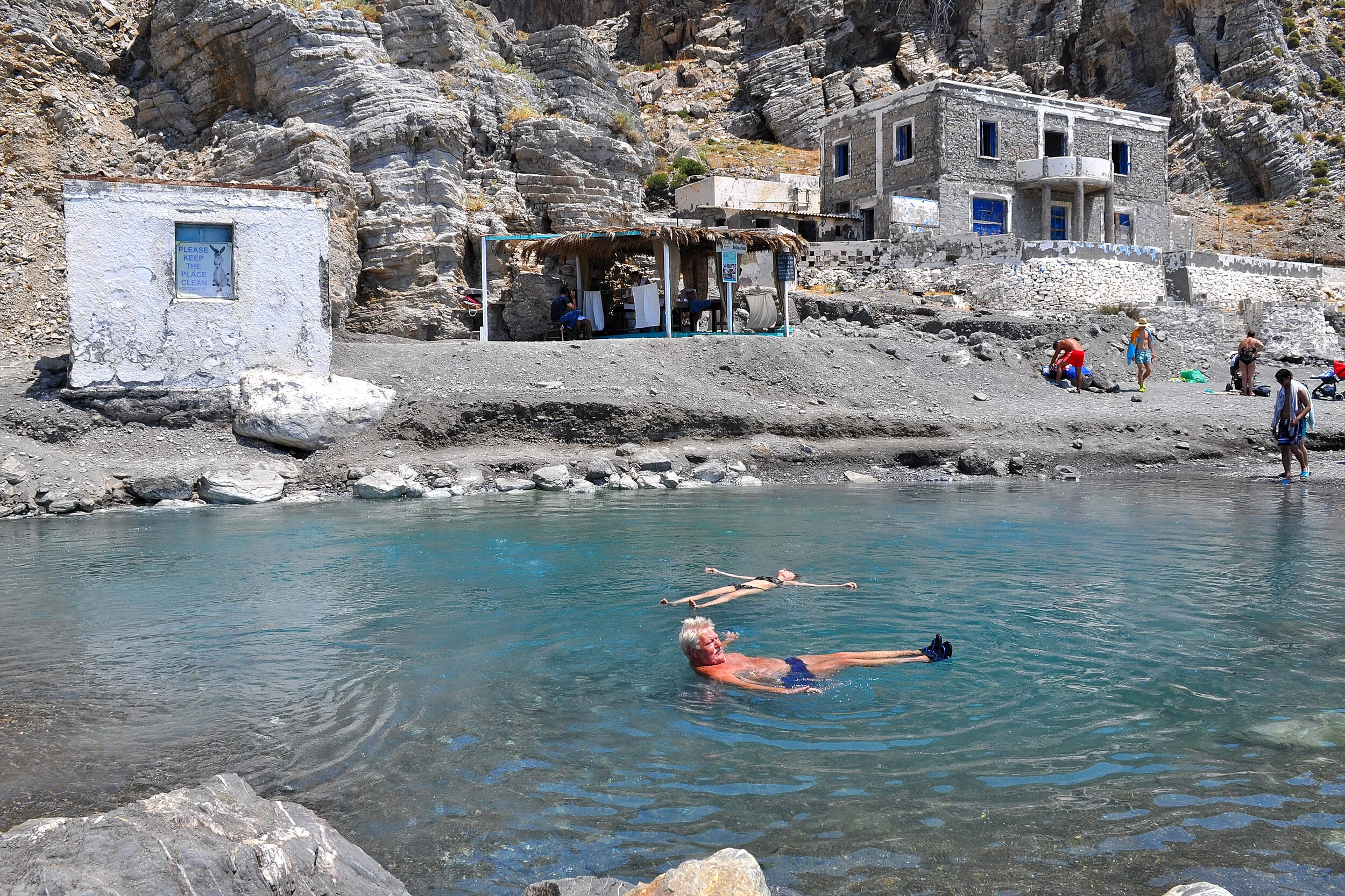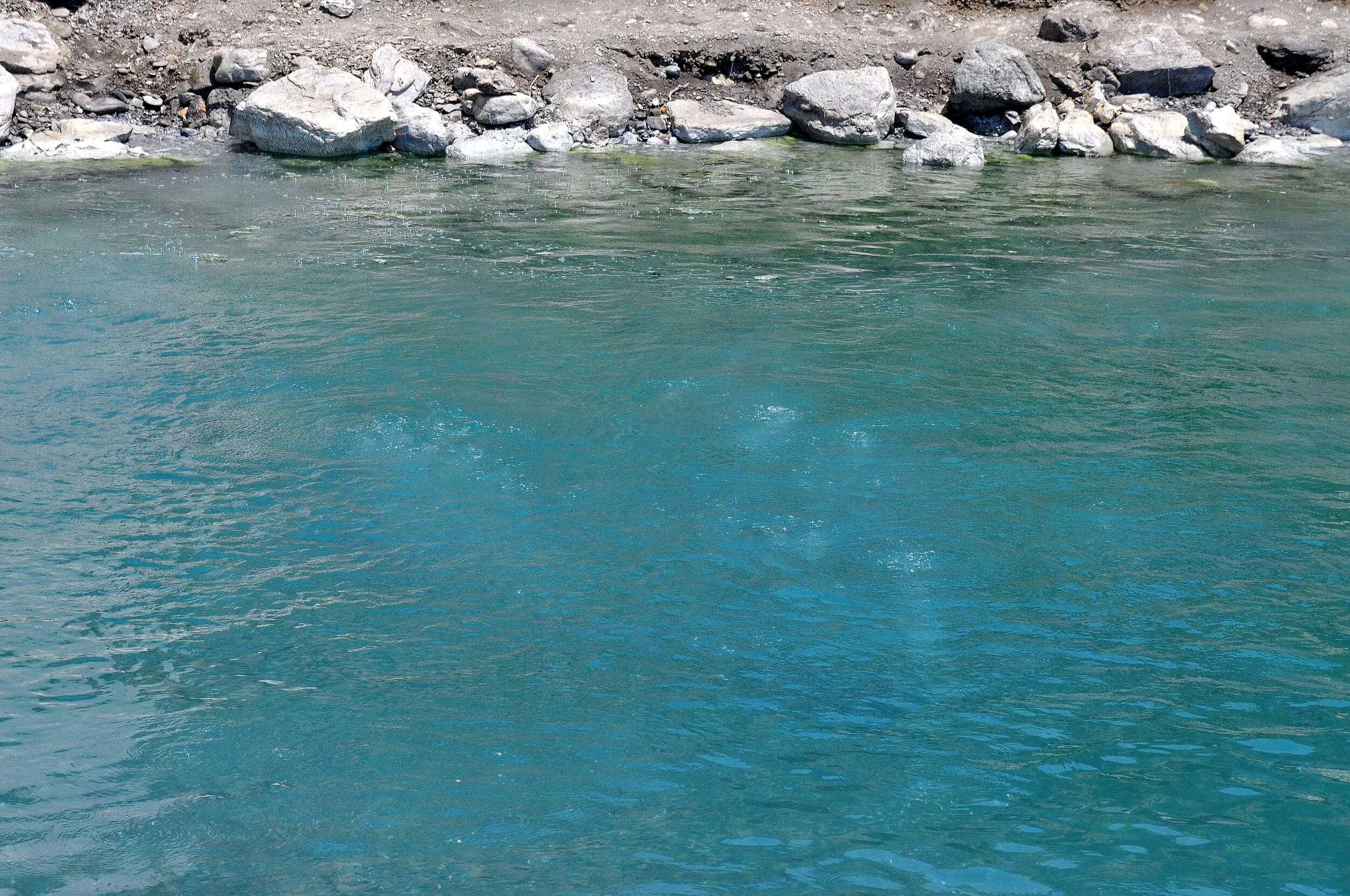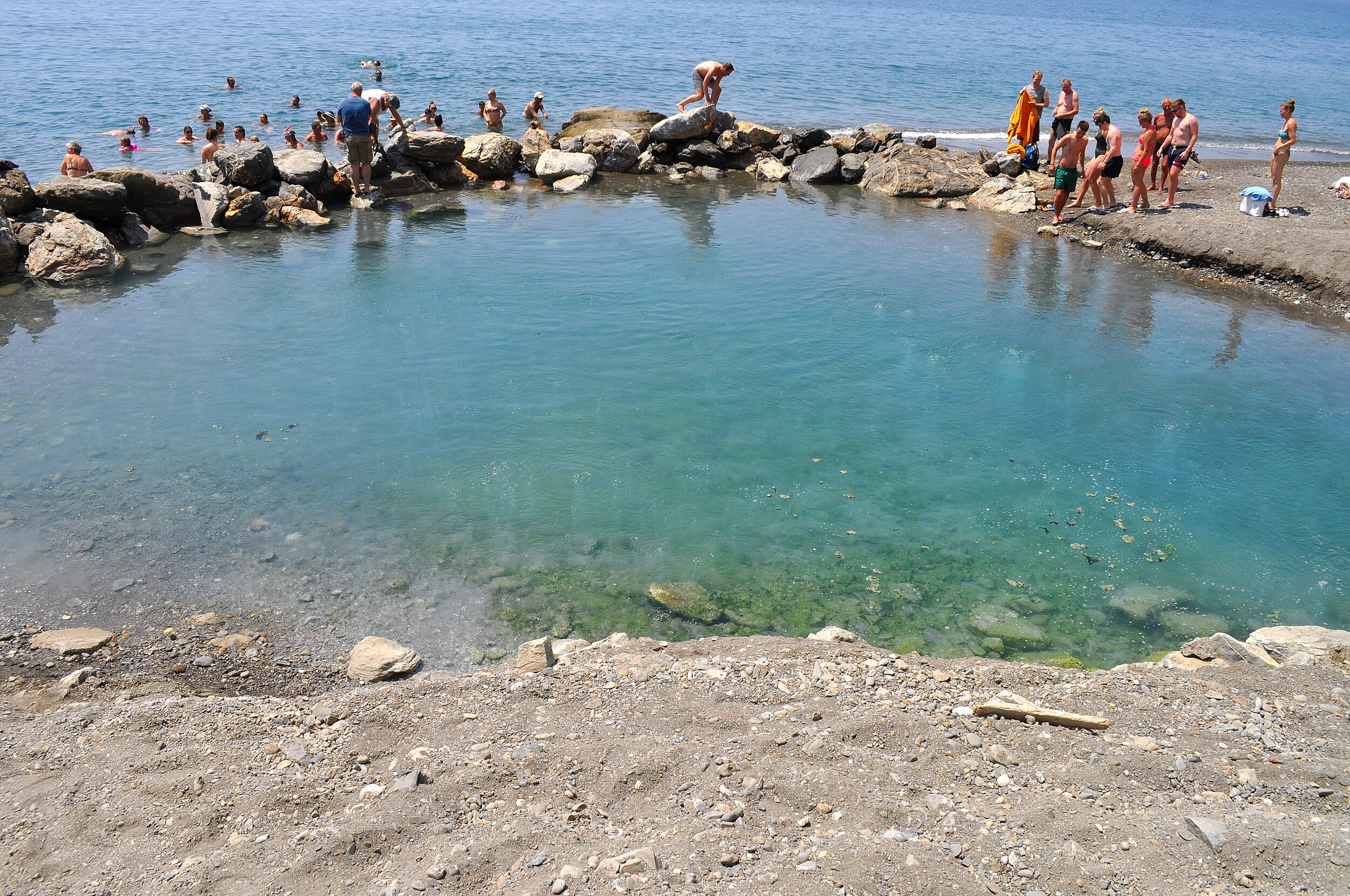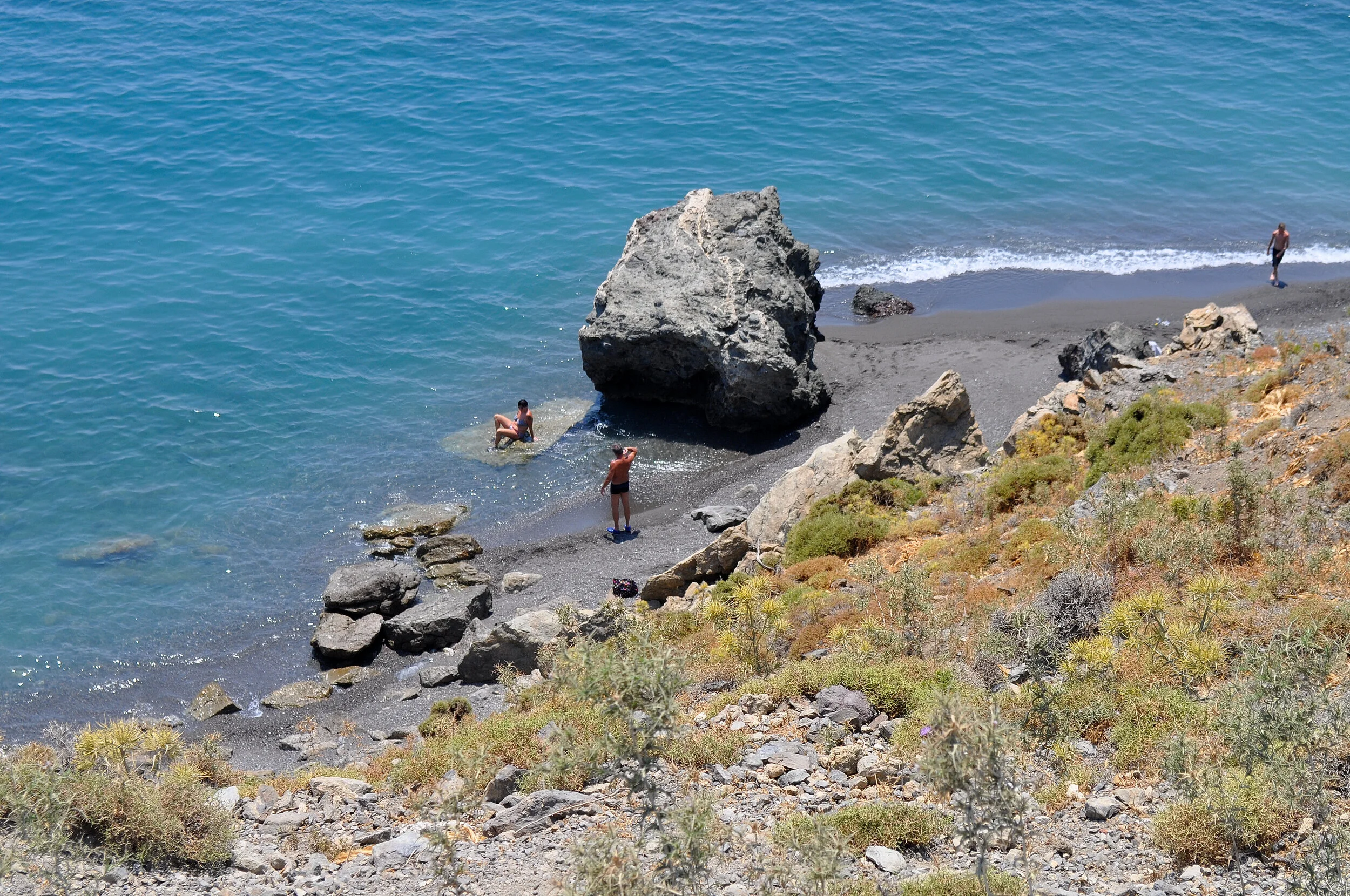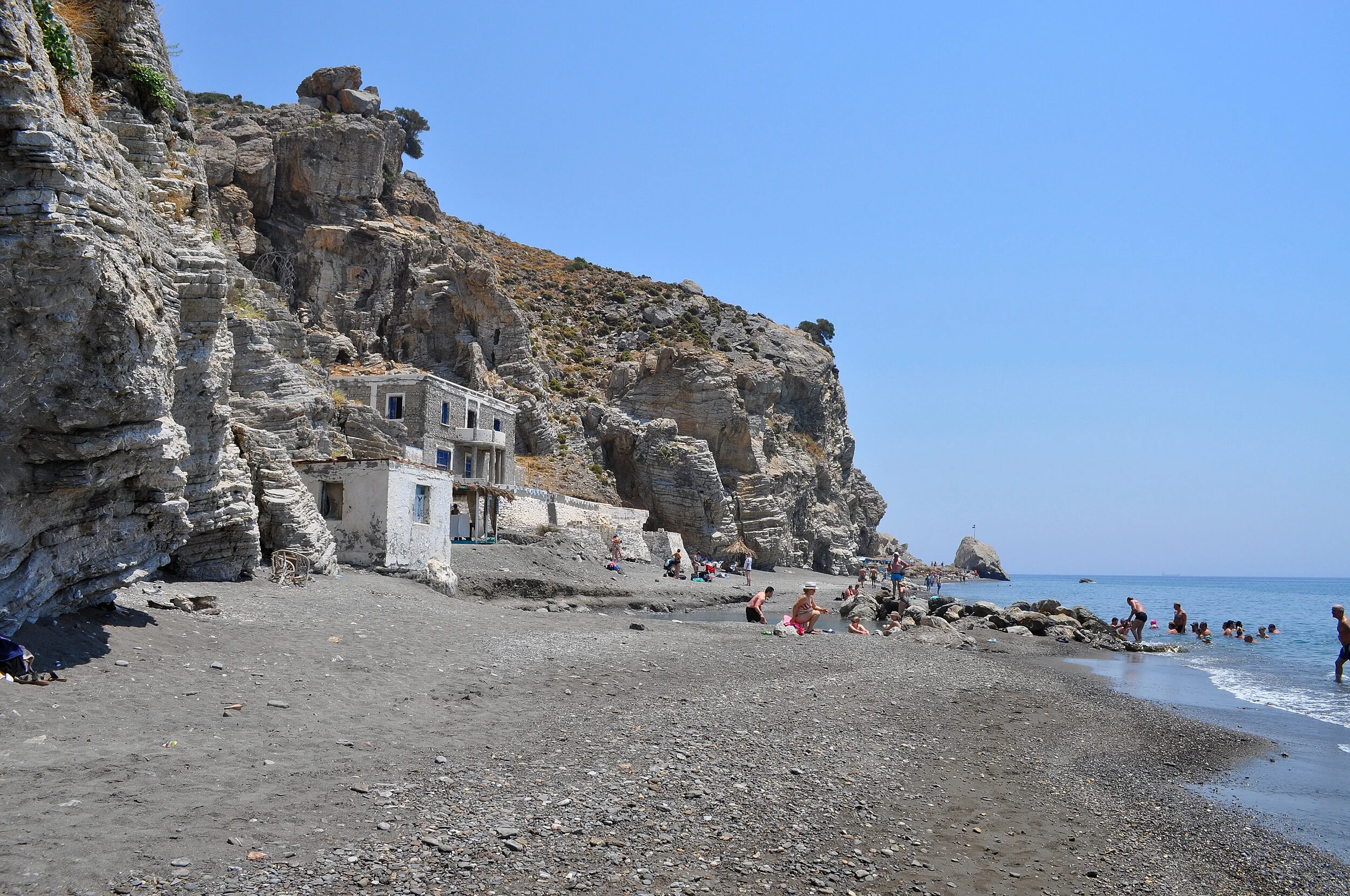Kos
A journey through Kos, in the heart of the Dodecanese: dream beaches like Agios Stefanos, ancient sites like the Asklepion, and the lively charm of Kos Town. From picturesque villages like Zia to natural hot springs and crystal-clear seas, Kos offers the perfect mix of relaxation, culture, and adventure. An unforgettable week in the magic of the Greek islands.
Back to Greece!
Piero: it's time to return to my beloved Greece!
Angela: another island? Are we going back to the Cyclades?
Piero: definitely another wonderful island, but this time we’re leaving the Cyclades behind and heading to the Dodecanese!
Angela: so we’re going further east compared to the Cyclades, toward the Turkish coast.
Piero: exactly. This Aegean archipelago is called the Dodecanese because it consists of twelve main islands; but in reality, it includes a multitude of smaller ones—about two hundred in total. Unlike the Cyclades, these islands don’t share a clear and specific geographic identity: each one is beautiful in its own unique way, with crystal-clear waters, stunning beaches, and breathtaking nature. And then there’s the history: all these islands have in common the legacy of the Crusaders, as well as periods of Ottoman and Italian rule. From the lesser-known Leros to Karpathos, which is becoming an increasingly popular destination; Kalymnos, famous among rock-climbing enthusiasts; Tilos, known for its ecological park; and Patmos, a major pilgrimage site because Saint John, one of Jesus’ disciples, lived in a cave there. Then there’s Astypalea, the westernmost island of the archipelago, which resembles the Cyclades most; and other gems like Kassos, Kastellorizo, Nisyros, Patmos, Symi, and above all, the two largest—Rhodes and Kos.
Angela: so which one did you choose to start our journey through the Dodecanese?
Piero: I picked Kos!
Here we are in Kos…
Angela: It may not be the most charming island in the archipelago, and it’s certainly a well-trodden tourist route. But if you choose the right time of year, Kos rewards you with crystal-clear waters and countless things to see and do.
Piero: Kos has its own airport, and the flight from Italy takes just under three hours. The airport is located right in the heart of the island, not too close to the main town, Kos Town. The island offers hotels and resorts to suit all tastes.
Angela: for our one-week stay, we picked a resort near Kardamena, on the southern side of the island. It faces the island of Nisyros, is only ten minutes from the airport, and about thirty minutes from Kos Town. This southern coast is also more sheltered from the wind than the northern side.
Piero: Kos lies less than 5 kilometers from the Turkish coast and has a distinctive crescent shape. It’s 45 kilometers long, so it’s very easy to explore the whole island.
Angela: aside from Kos Town, there are only a handful of small towns: Kardamena, Kefalos, Tigaki, Antimachia, Mastichari, Marmari, and Pili.
Piero: the island is famous as the birthplace of Hippocrates, considered the father of modern medicine. Here you’ll find the ruins of the Asklepion, the first known hospital in history.
Angela: the history of Kos dates back to the Bronze Age. Archaeological traces show that small communities lived off fishing and farming. The first major civilizations to settle here were the Minoans, followed by the Mycenaeans. Later came the Carians, who gave the island its ancient name, Caria—later transformed into Kos (or Coos), even mentioned by Homer in the Iliad: according to legend, the island sent thirty ships to the Trojan War. During the Dorian period, Kos became part of the Athenian League.
Piero: the island reached its peak during the Hellenistic era, starting with the founding of the ancient city of Kos in 366 BC. Many marble monuments and temples were built at that time. In the 1st century BC, the Romans took over, turning the island into an important trading port. It became incredibly wealthy, and life was luxurious—as seen in the remains of the Roman Villa and its thermal baths, filled with mosaics and fine objects. When the Roman Empire split, Kos entered the Byzantine era and continued to prosper through commerce.
Angela: but around 400 AD, a devastating earthquake followed by a tsunami destroyed the island. Kos didn’t fully recover for centuries. During the Middle Ages, it was nearly abandoned until the Genoese and Venetians arrived to capitalize on its strategic location. Just before the Ottomans took over, the Knights of Malta ruled Kos for a short time, aiming to protect pilgrims en route to the Holy Land.
Piero: in 1912, Kos entered its Italian era, which brought modernization to the island. However, a major earthquake in 1933 led to reconstruction in a distinctly fascist architectural style—traces of which can still be seen today. That same period allowed the Italian Archaeological School to uncover many ruins of the ancient city. During World War II, the island was occupied by the Germans, and the local Jewish population was exterminated. A tragic episode occurred here in October 1943: similar to what happened in Kefalonia, the Nazis executed 103 Italian officers. After the war, Kos became a British military protectorate—along with the rest of the Dodecanese—and was officially unified with Greece on March 7, 1948.
Angela: from that fairly recent date begins Kos’s modern story—one of tourism. Today, the island offers exactly what you'd expect from a Greek island: stunning beaches, turquoise waters, lively nightlife, great food, lush nature, and of course, plenty of culture and archaeology.
Discovering Kos
Piero: now we’re ready to explore this beautiful island.
Angela: as soon as we arrive, to settle in and recover from the journey, we enjoy the beach and sea at Kardamena. Perfect for those traveling with children like us, the beach has fine, light-colored sand and some rocks that make the snorkeling really interesting. As mentioned, this southern area is less windy, well-equipped, and still offers plenty of open spaces—it’s one of the locals’ favorite beaches. There are also great spots for an aperitif with the sea as a backdrop, and many tavernas where you can enjoy delicious seafood dishes.
Piero: a tip: don’t miss an amazing ride on a large inflatable banana boat pulled at full speed by a motorboat—an unforgettable experience for both adults and kids!
Angela: on our second day, we immediately start exploring the island’s beauties: we decide to visit the Asklepion first, followed by the capital, Kos Town. So, we rent a car and we’re ready to go!
Piero: we begin with the Asklepion, located on the road to Kos Town just a few kilometers from the city, in a beautiful hilly area. It is the most important archaeological site on Kos—a complex of temples dedicated to Asclepius (Latin: Aesculapius), the god of medicine. According to myth, Asclepius was the son of Apollo and dared to challenge the gods by trying to resurrect Hippolytus with a magical herb given to him by a serpent. For this, he was punished and struck down by Zeus. Because of this story, Asclepius’ symbol is a serpent coiled around a staff—the same symbol still used today by pharmacists. The sanctuary also functioned as a hospital and wellness center, where sick people were treated by physician-priests. Its fame in the Greek world was linked to the physician Hippocrates, although it’s uncertain if he ever actually worked there, since the sanctuary was built in the 4th century BC—around the time of Hippocrates’ death. Nonetheless, thanks to many other renowned doctors, patients traveled from far and wide to be treated there.
Angela: built on the slope of a hill, the sanctuary consists of three terraces on different levels connected by stairways. On the first level, you can still see the foundations of the patients’ rooms and the baths; the second level houses the structures for the physician-priests and a temple dedicated to Apollo, while the highest level contains the remains of the temple and altar dedicated to Asclepius.
Piero: the archaeological site was uncovered only in 1902 and is not perfectly preserved, due to various occupations and especially the many earthquakes that have struck the island over time. Entrance is paid for adults but the fee is very modest. It’s best to visit early in the morning to avoid the heat. A full visit takes about an hour.
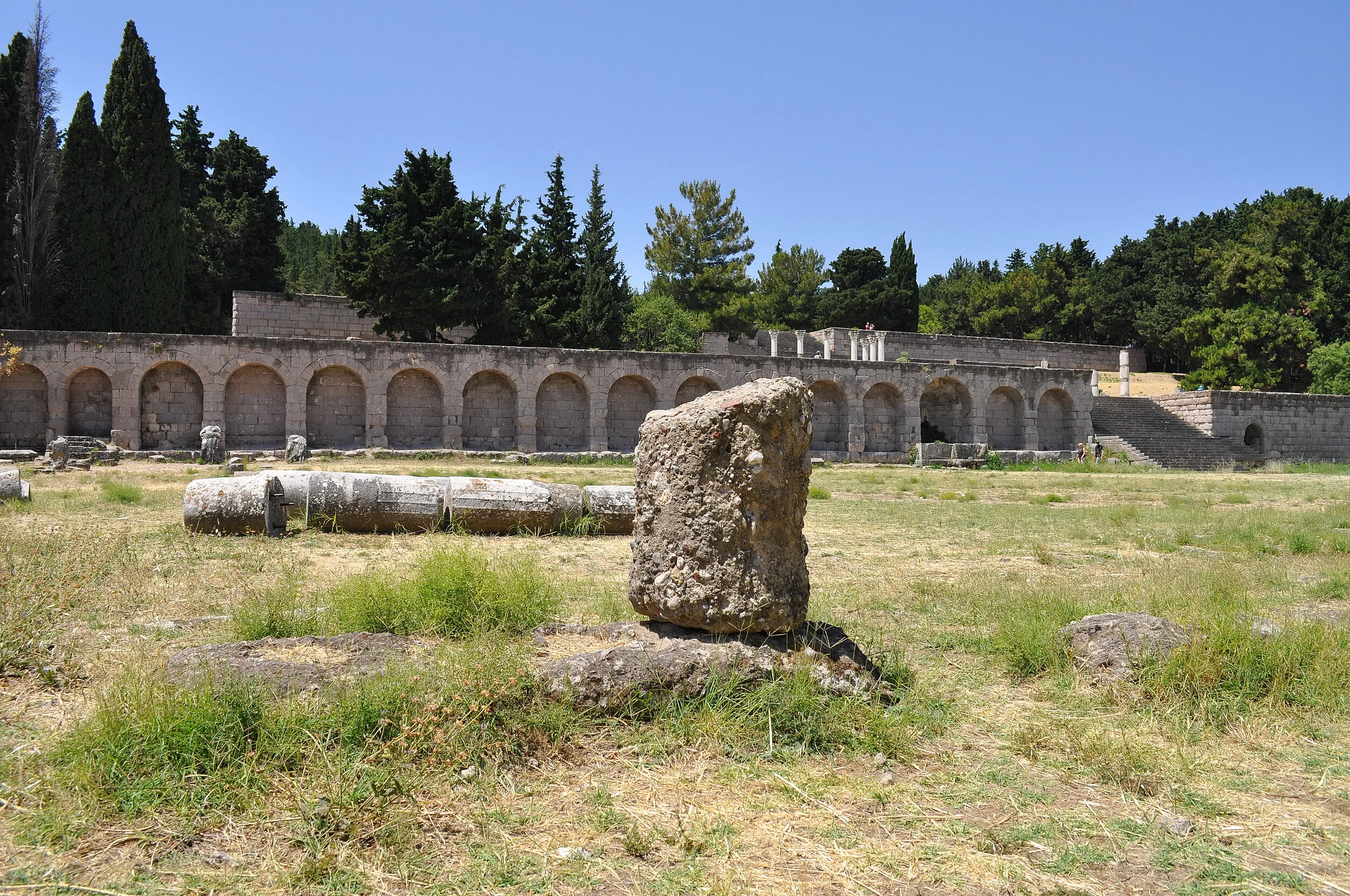
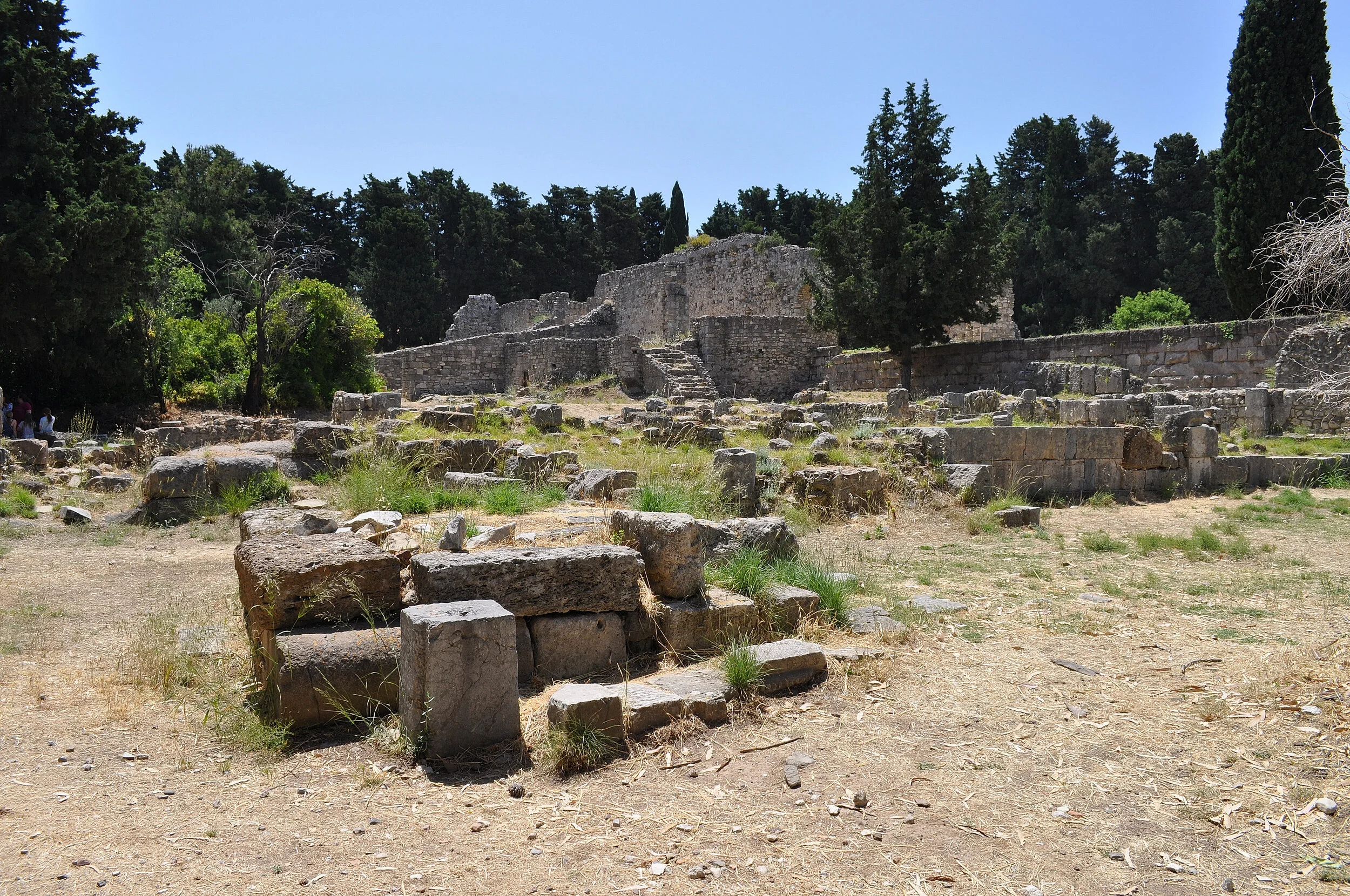
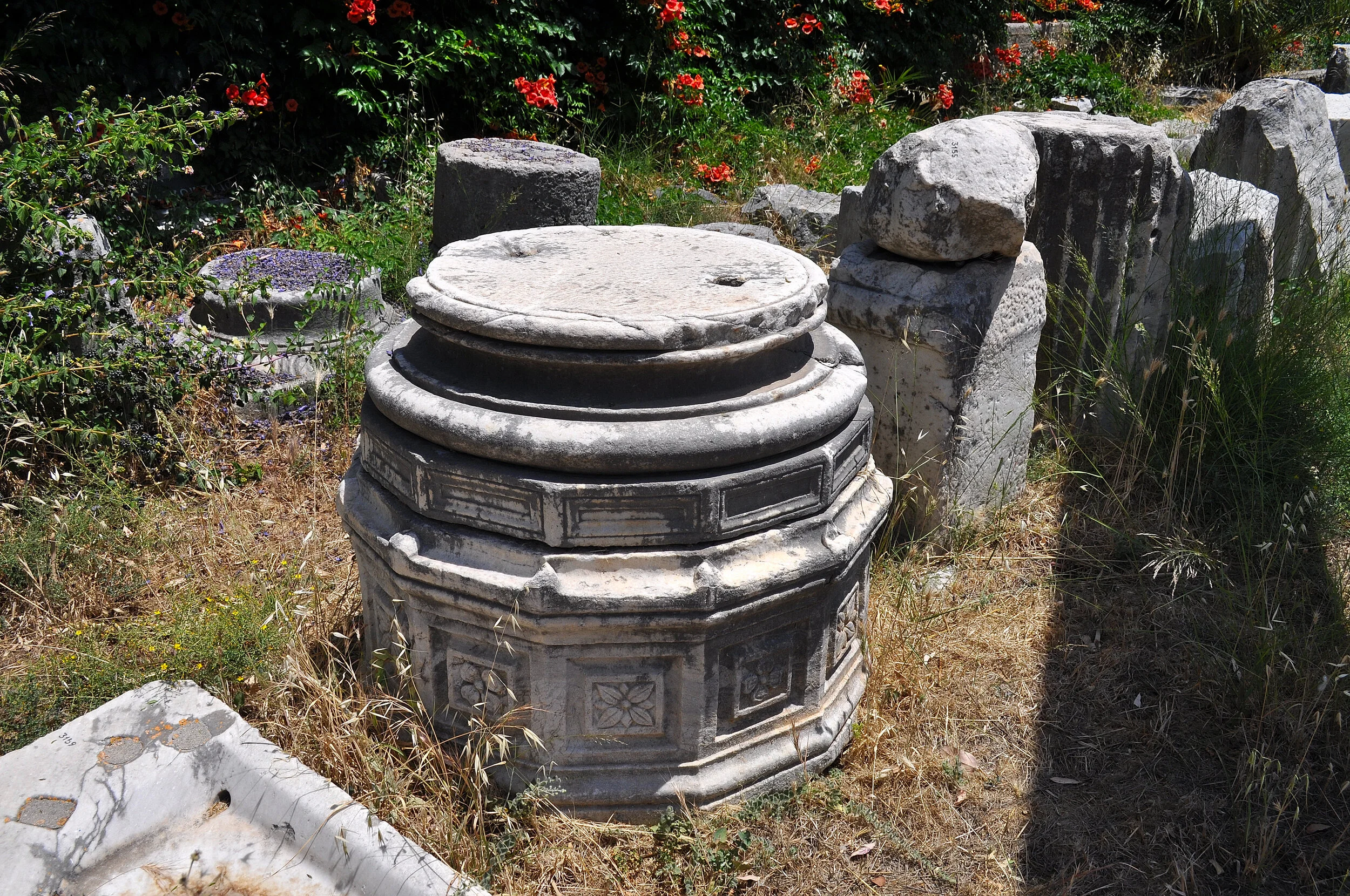

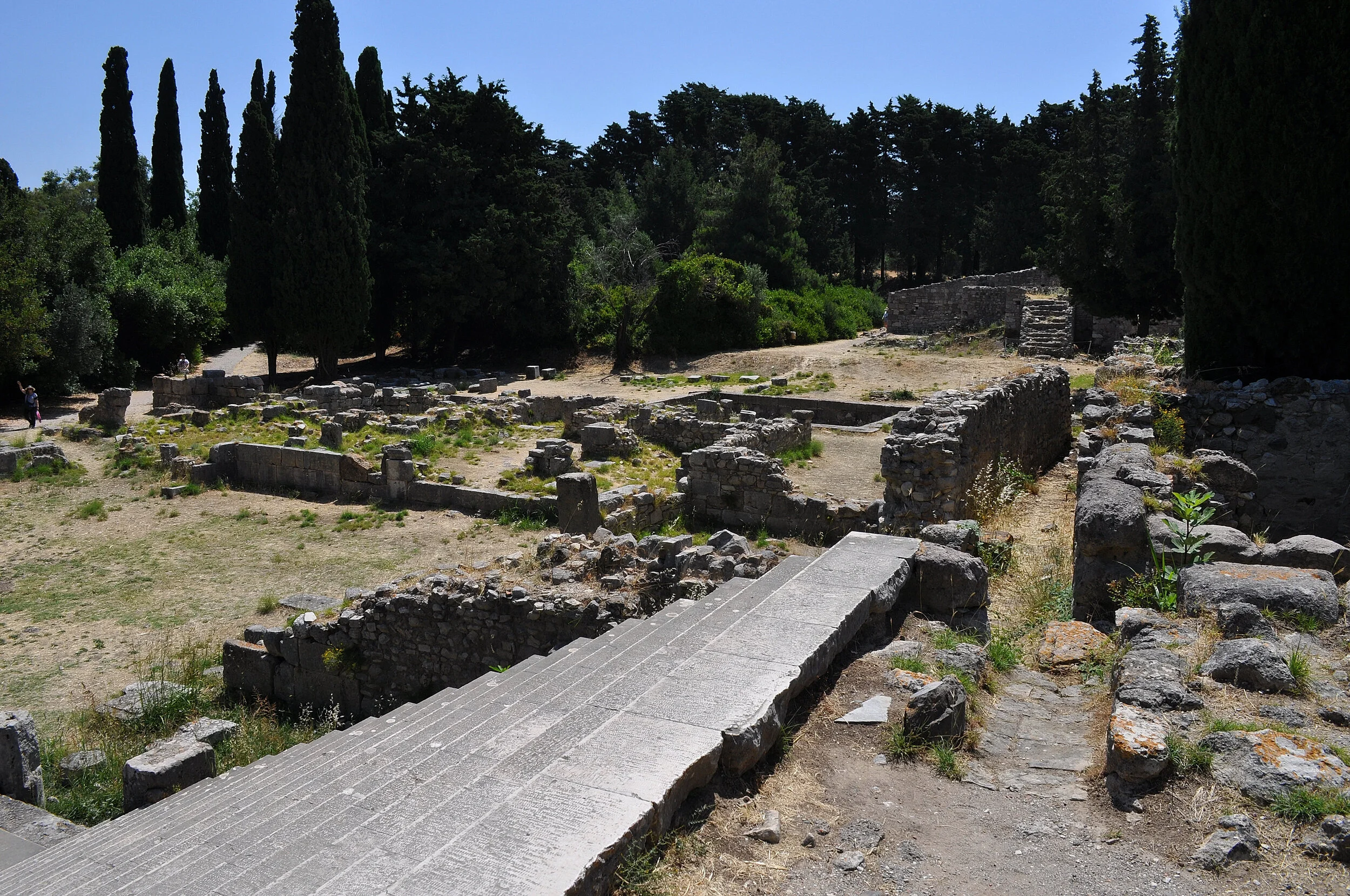
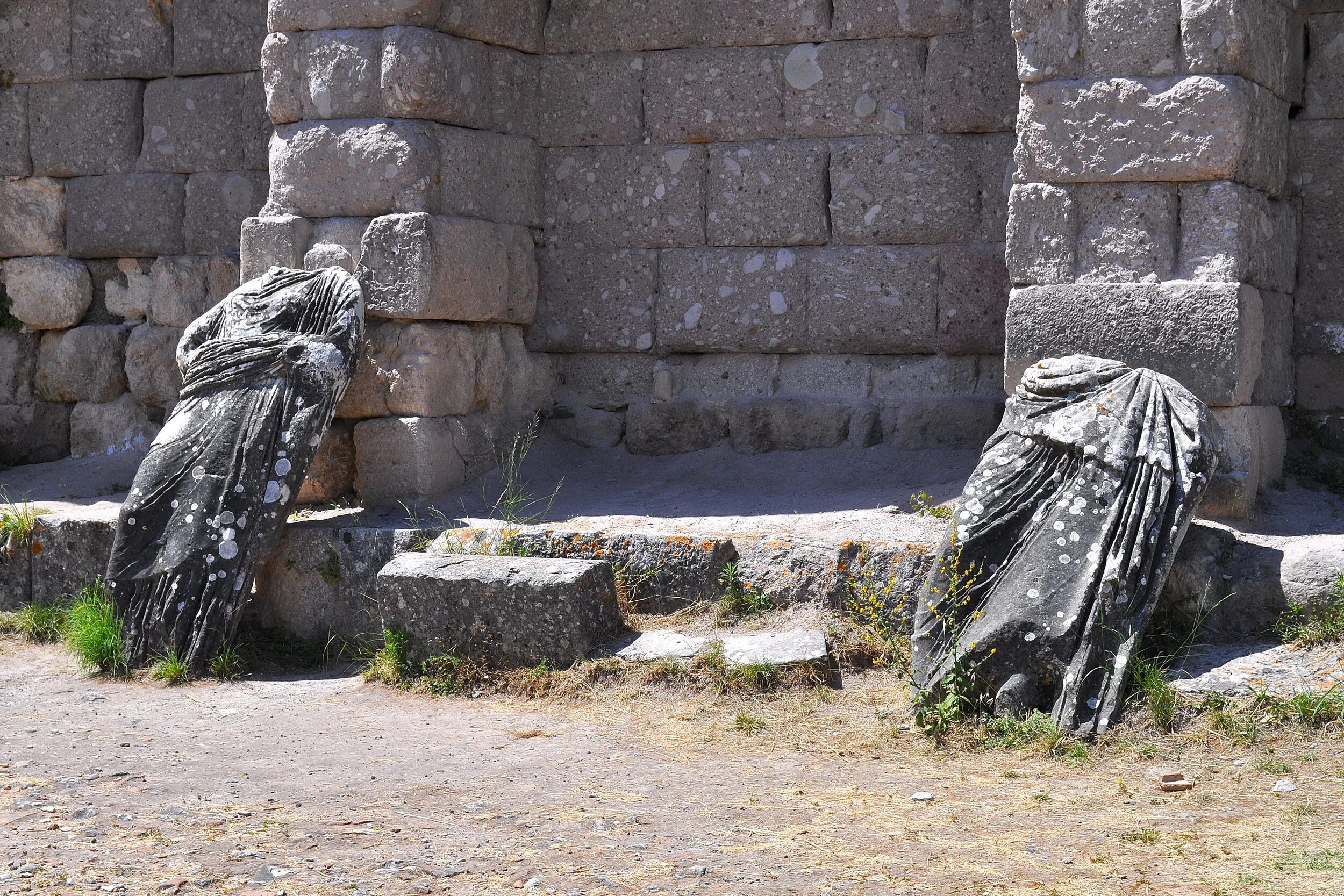

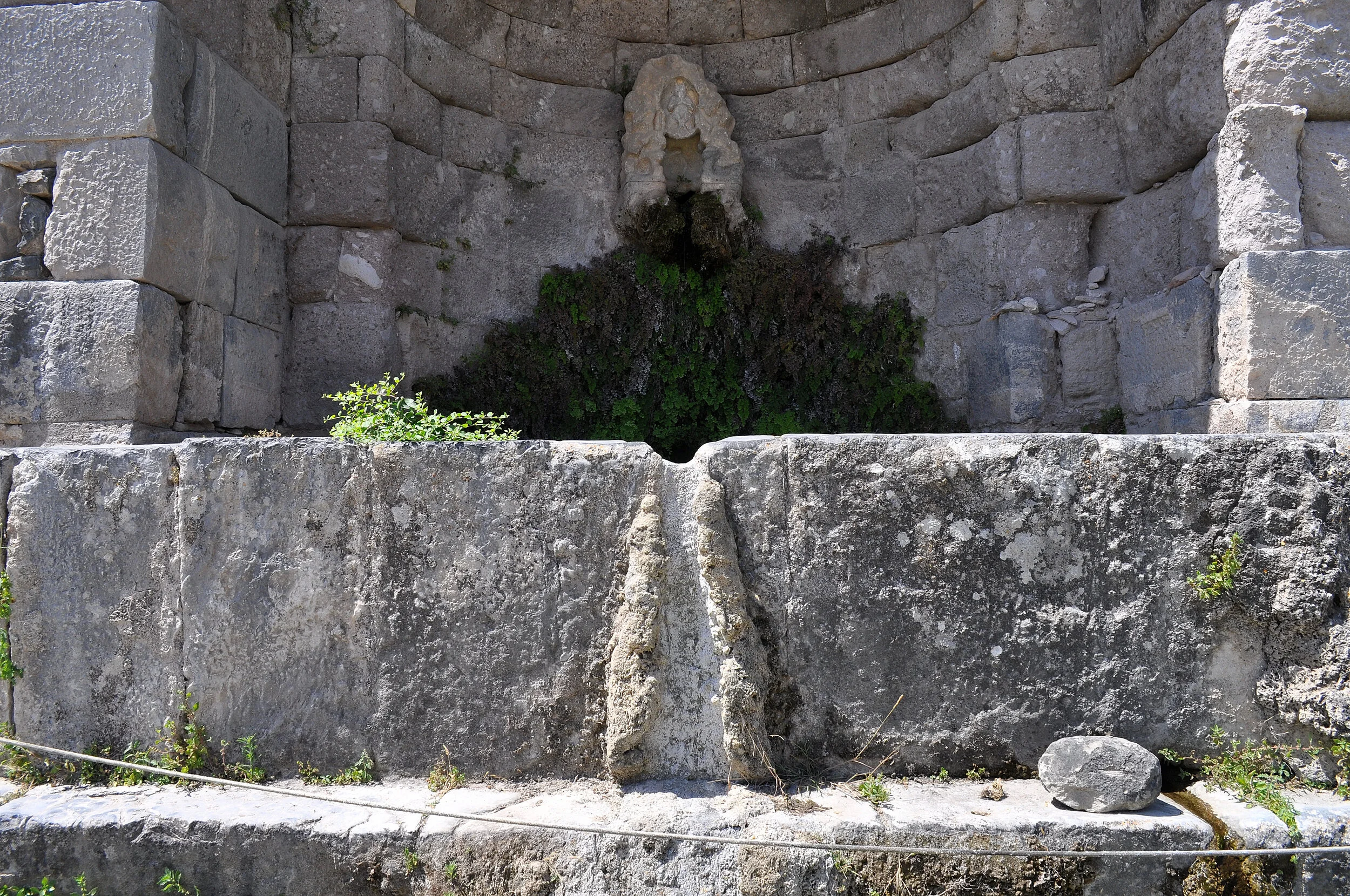
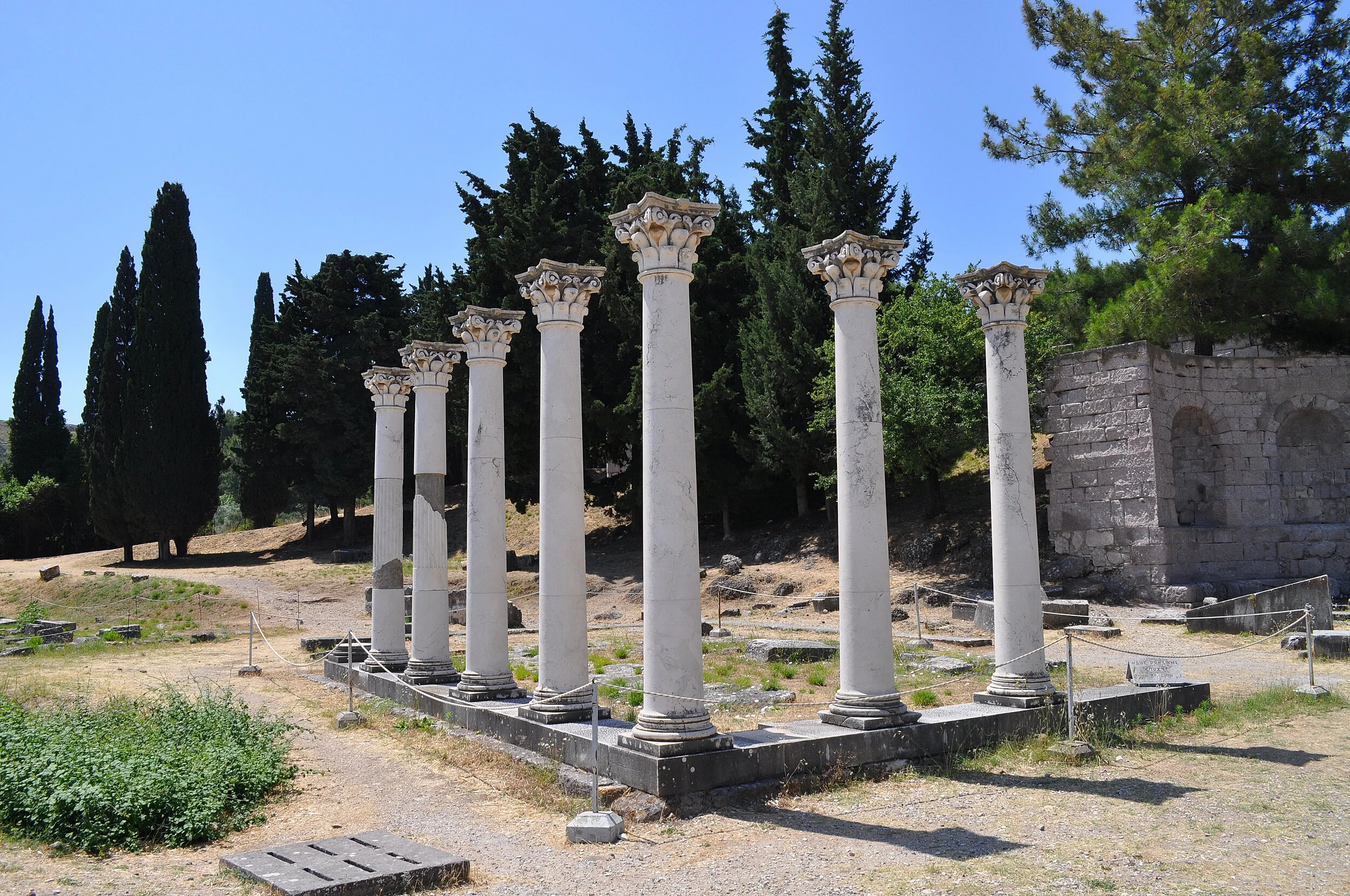
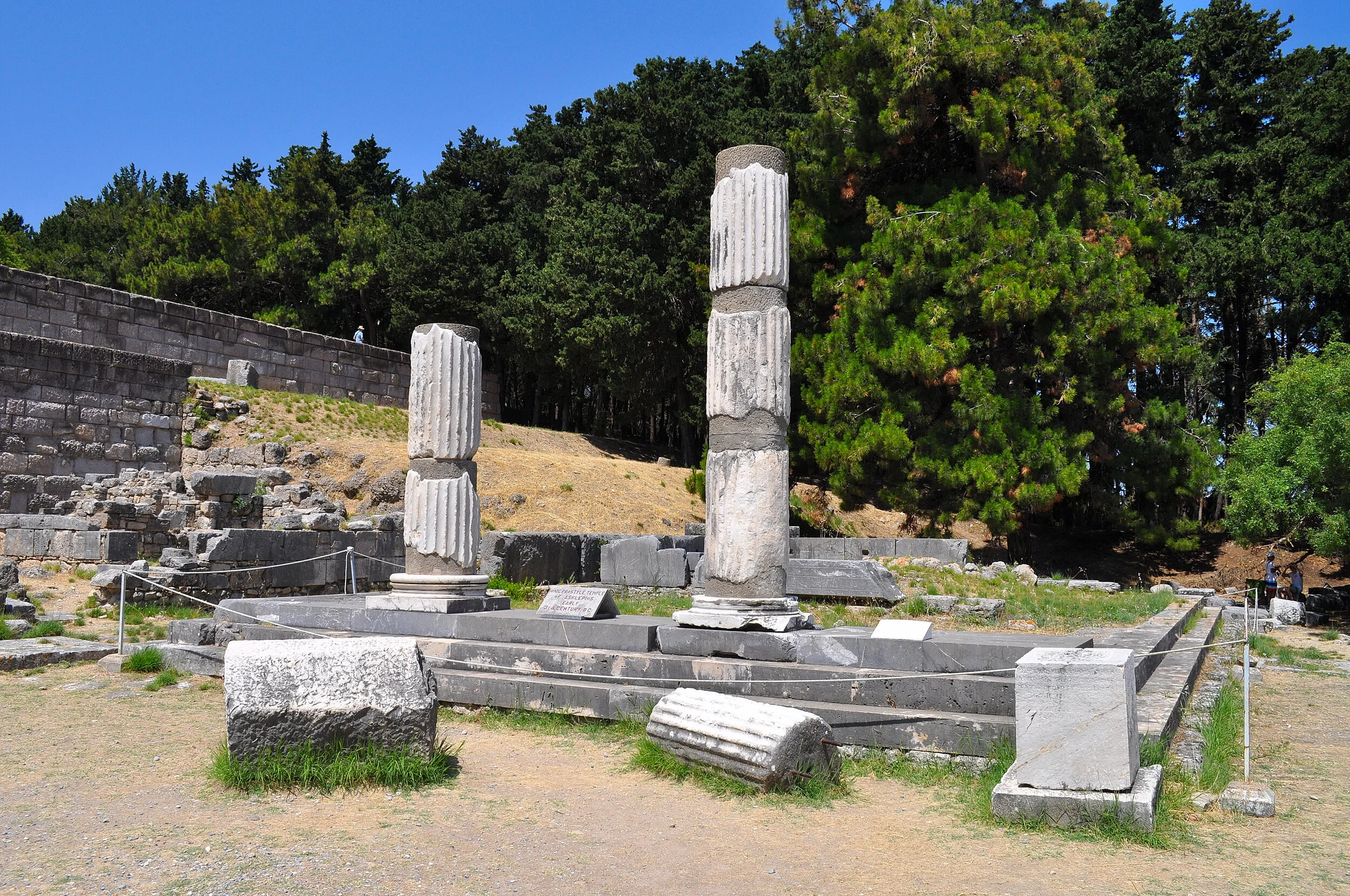
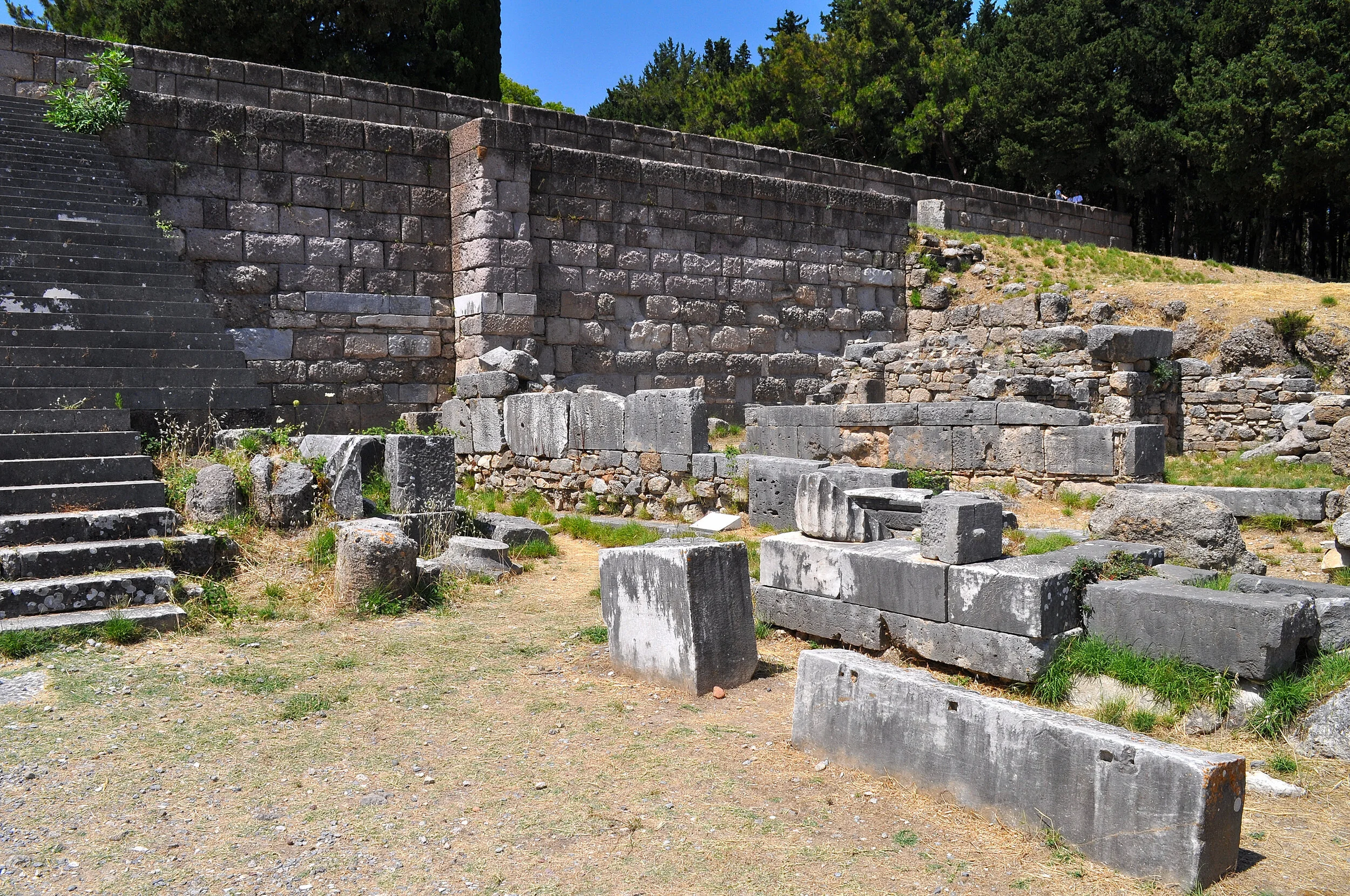
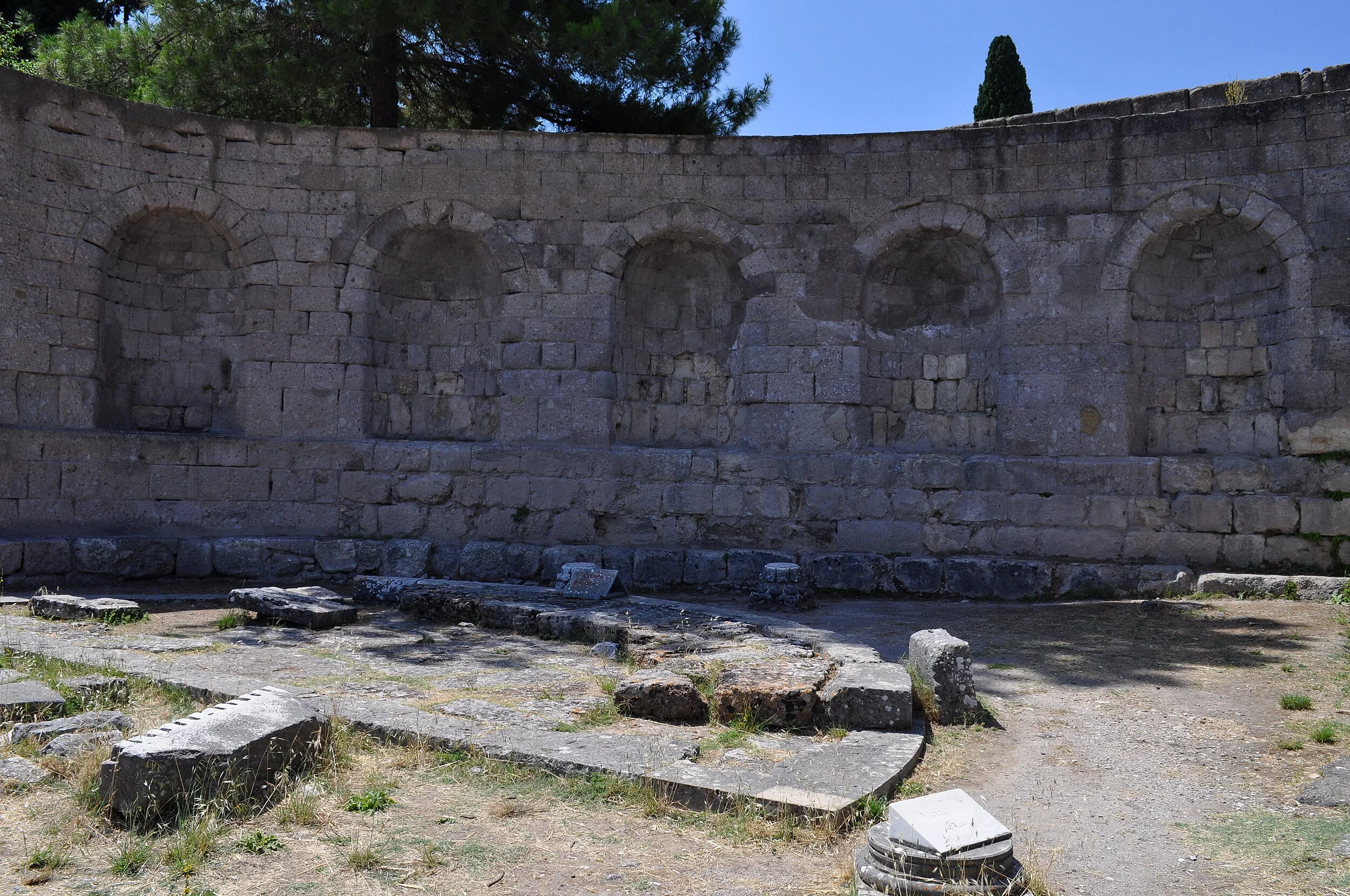
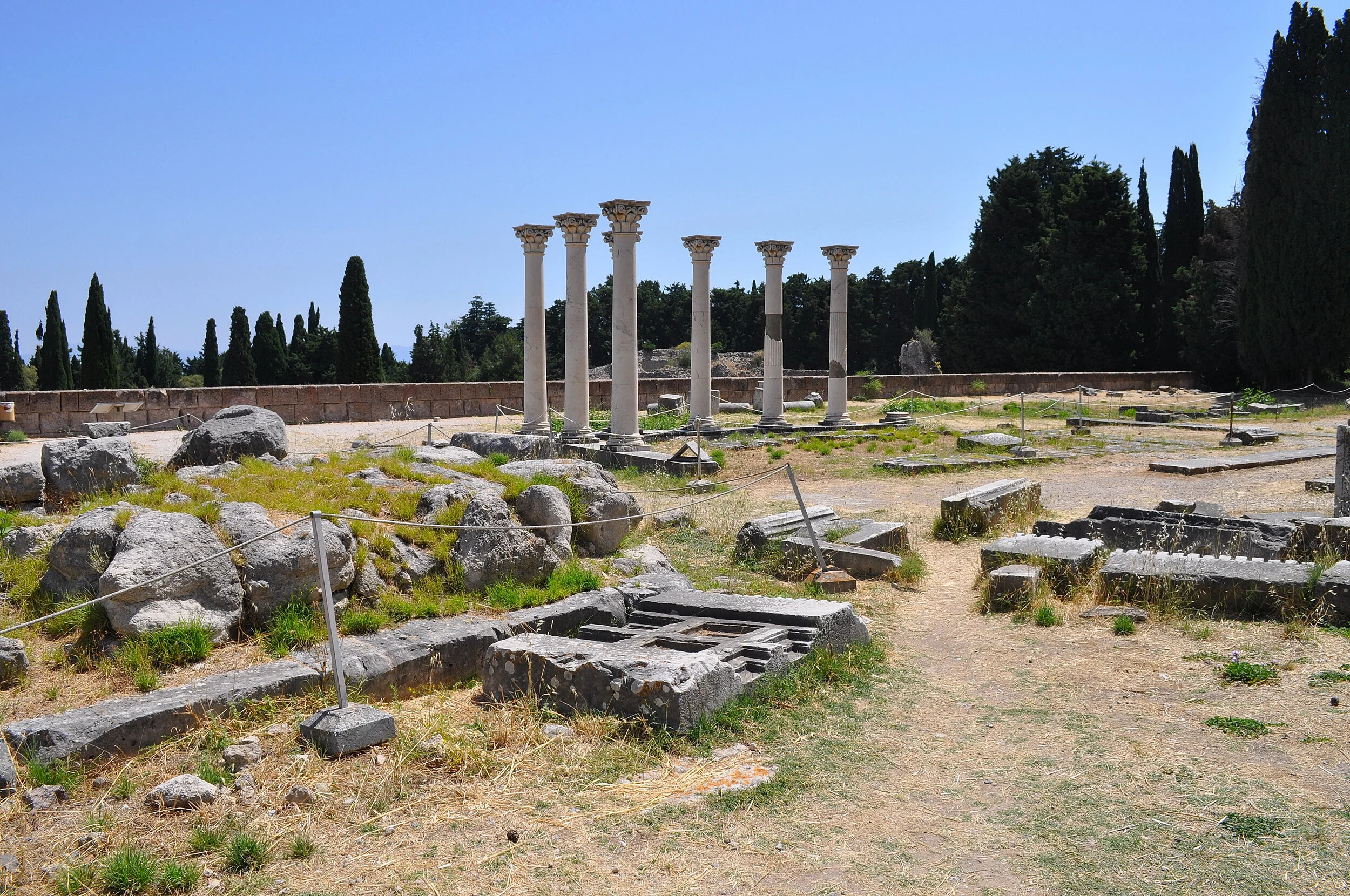
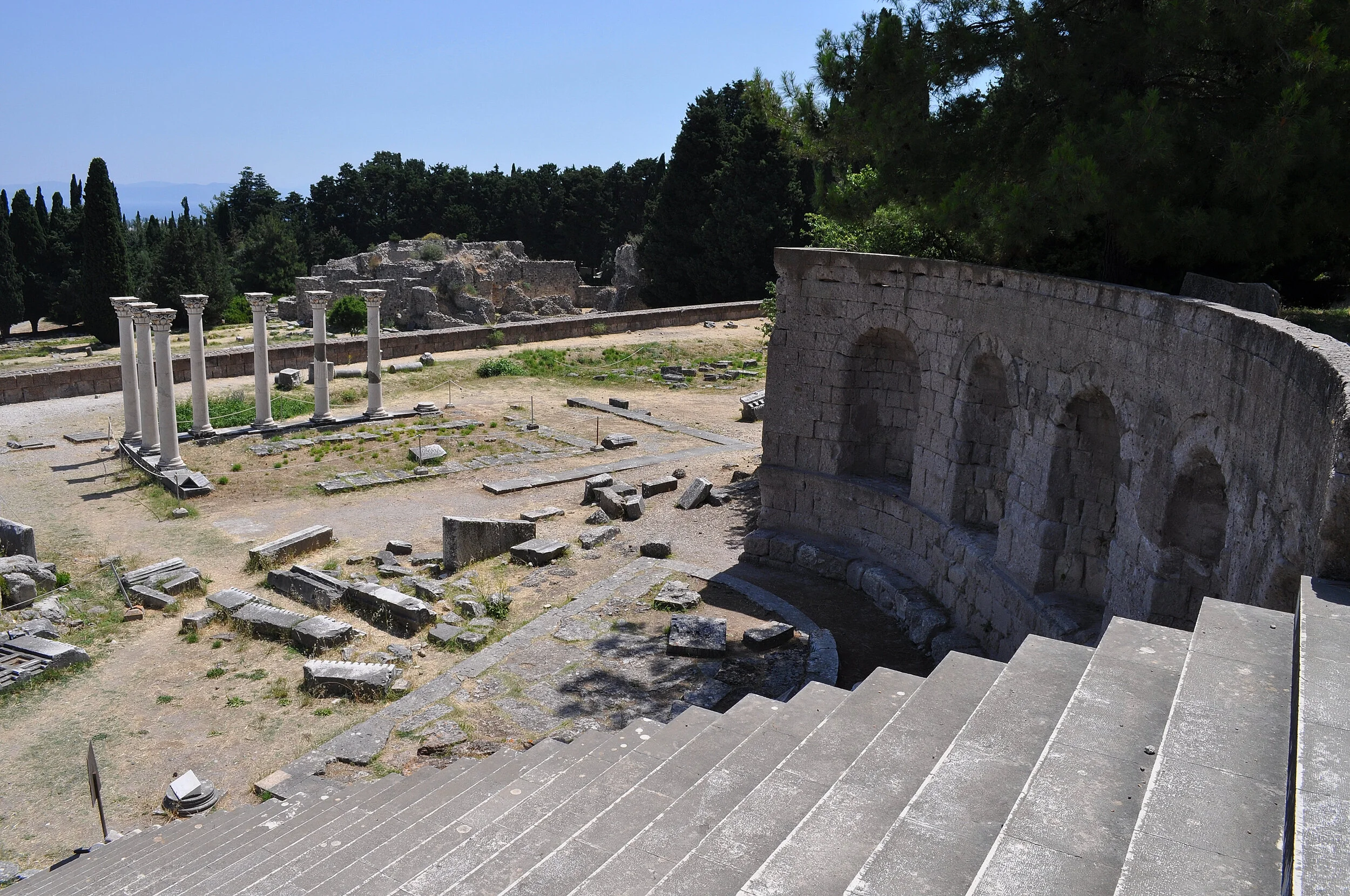
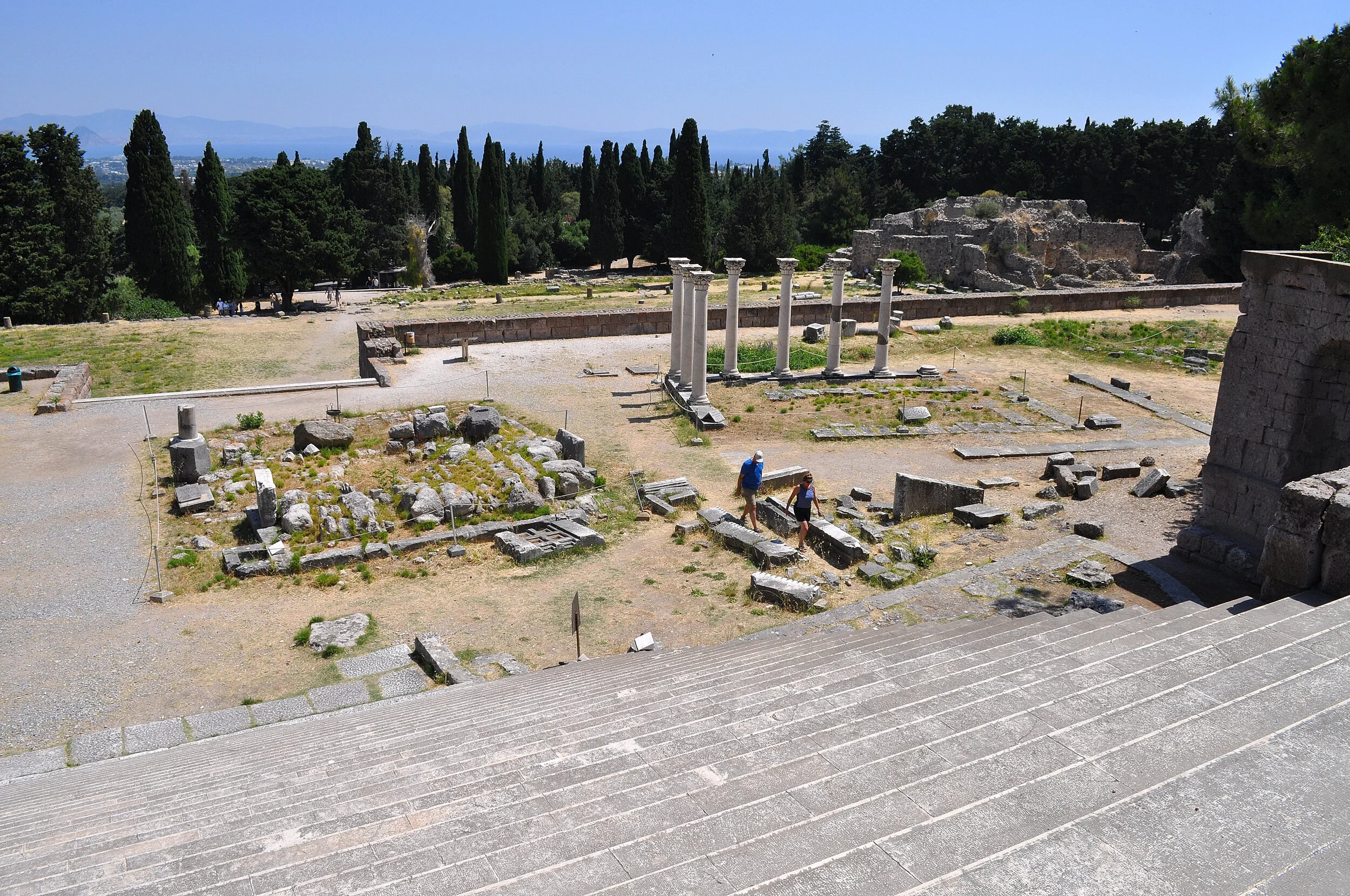
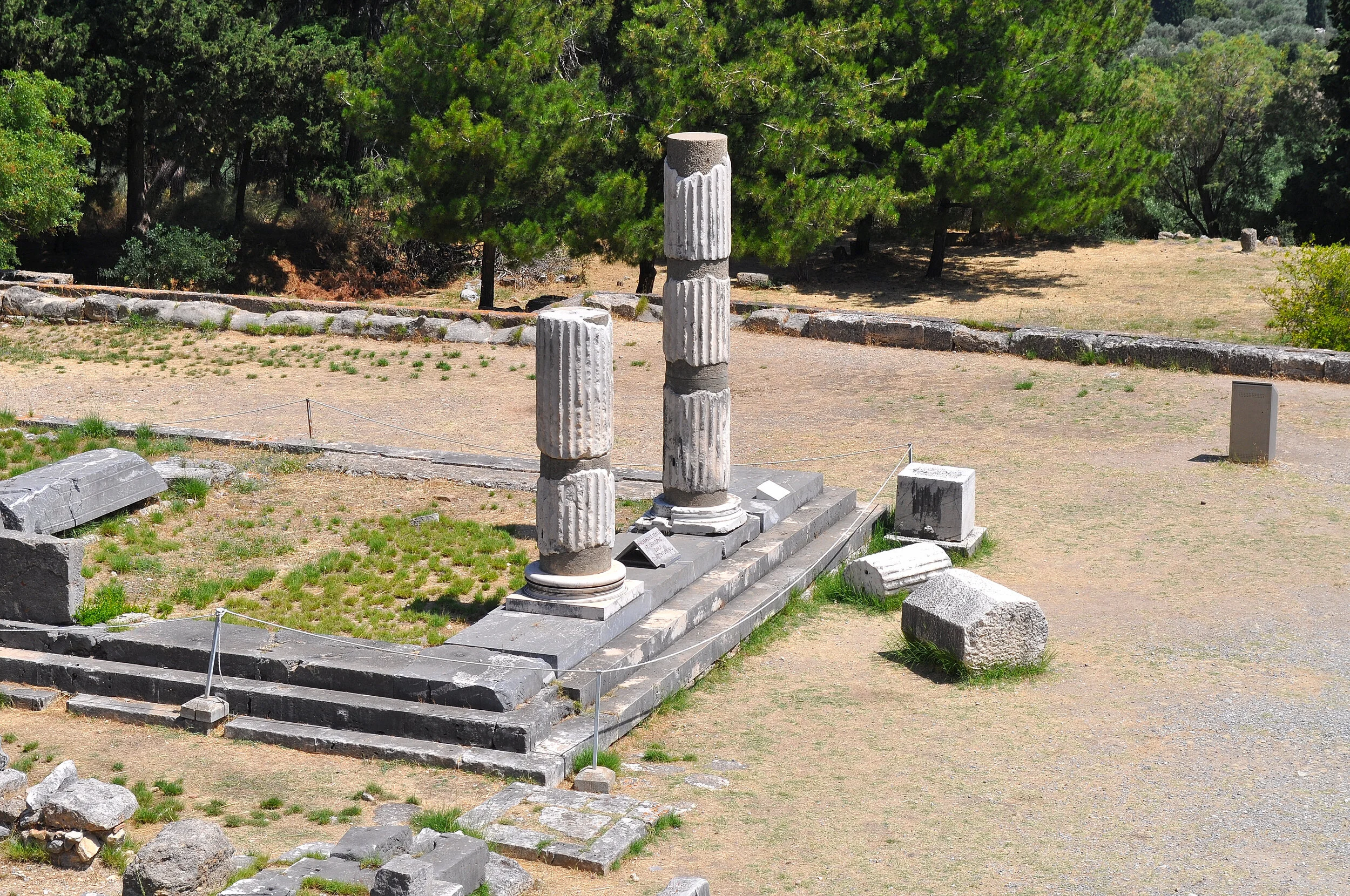
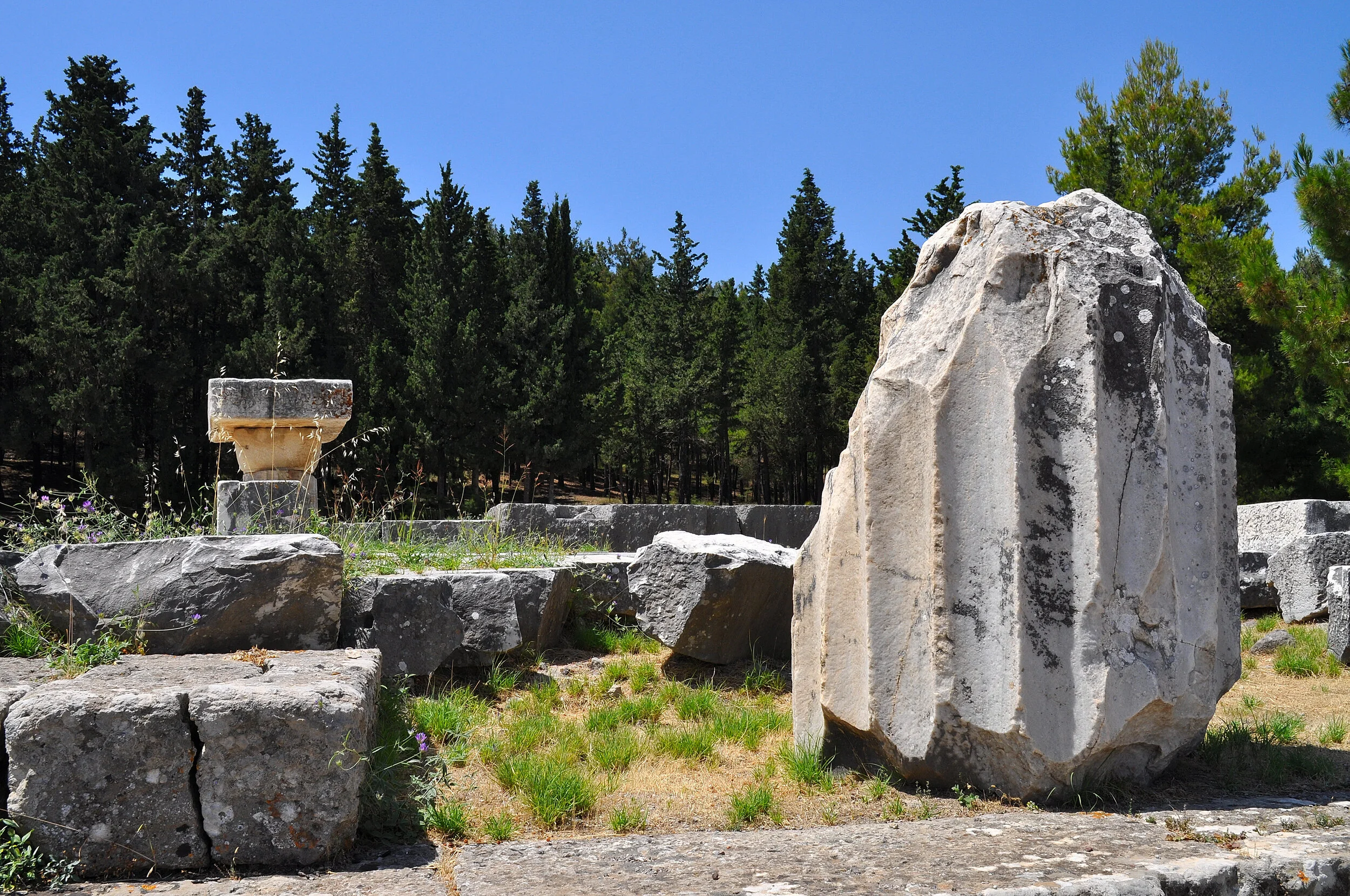
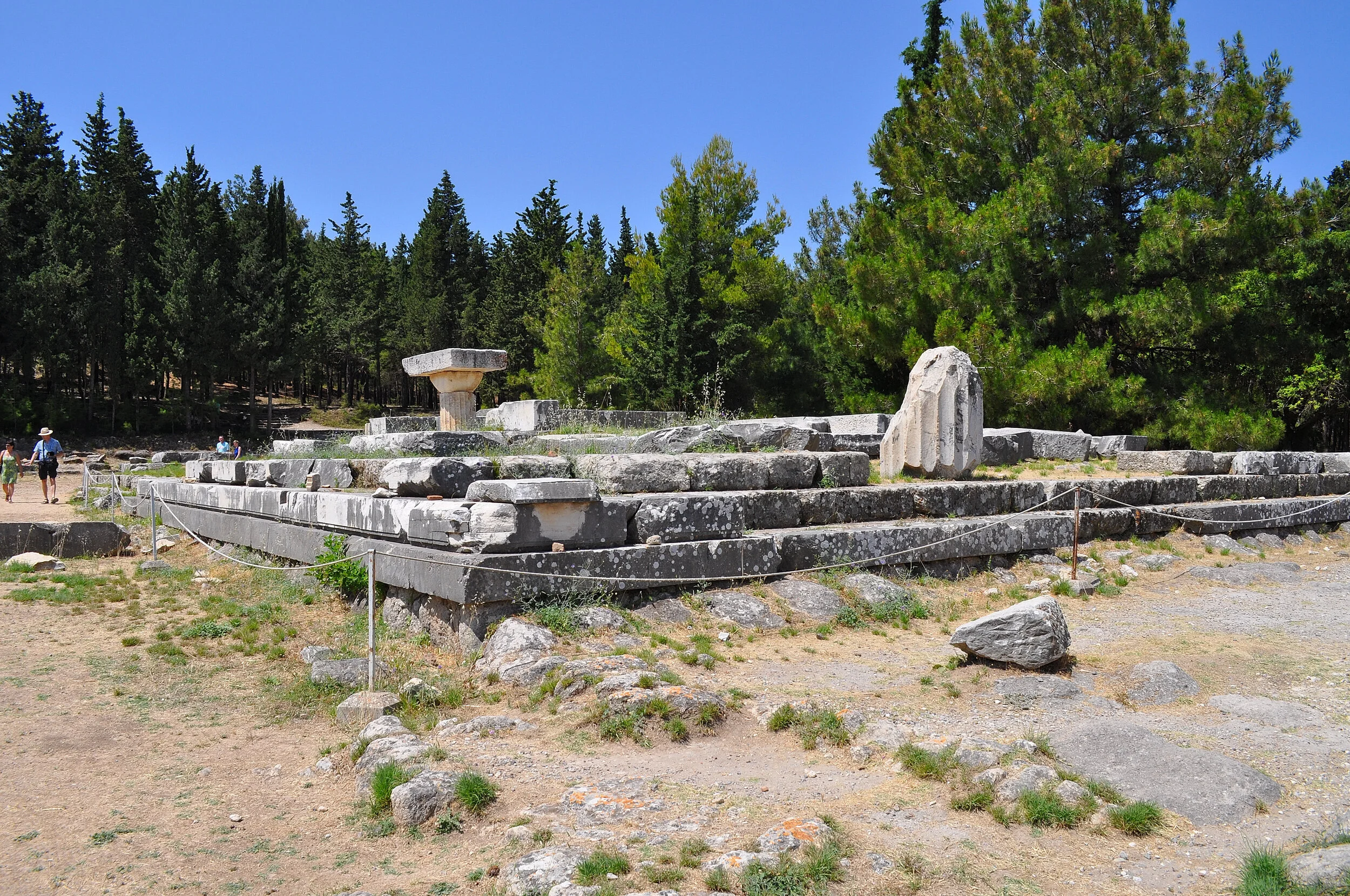
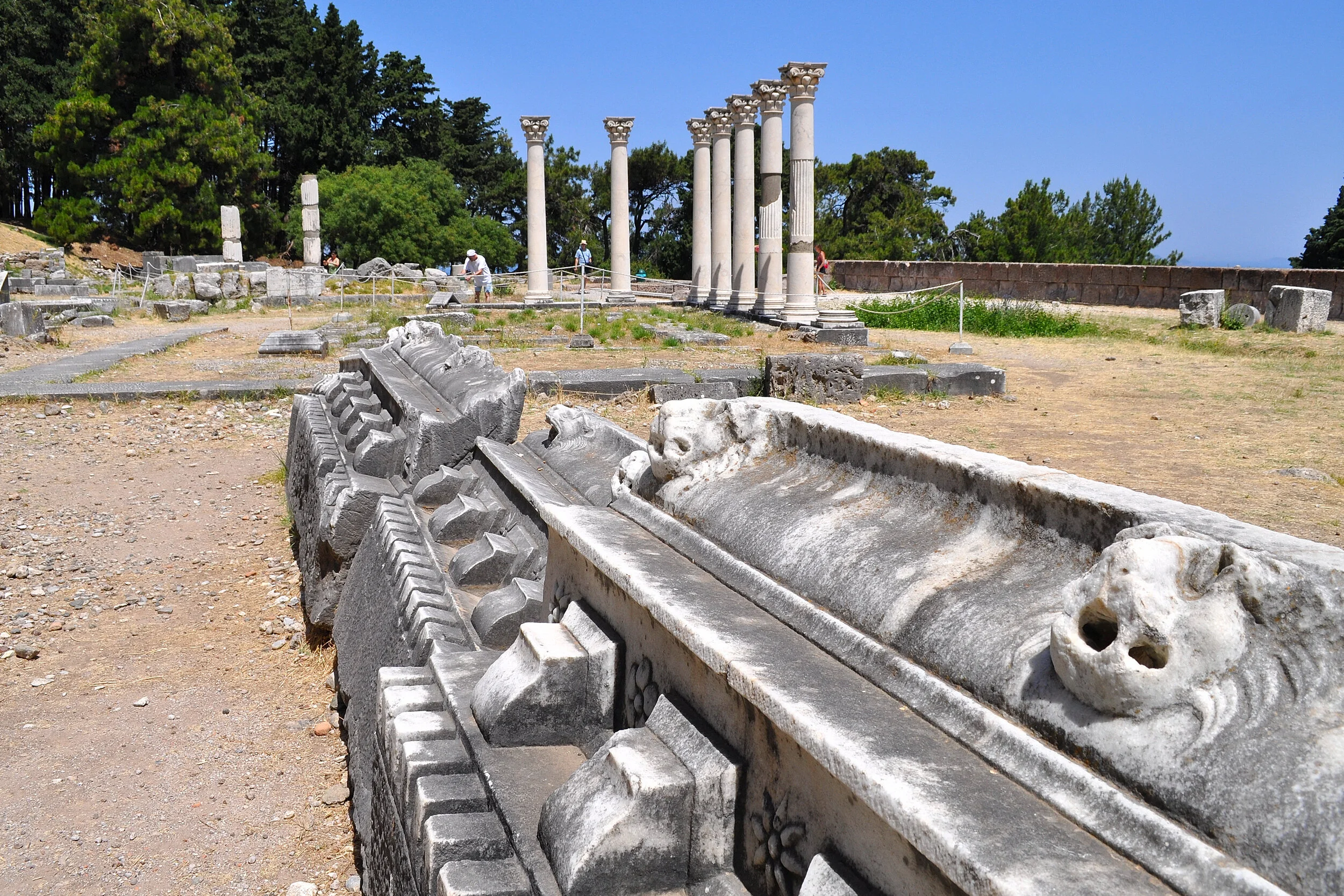
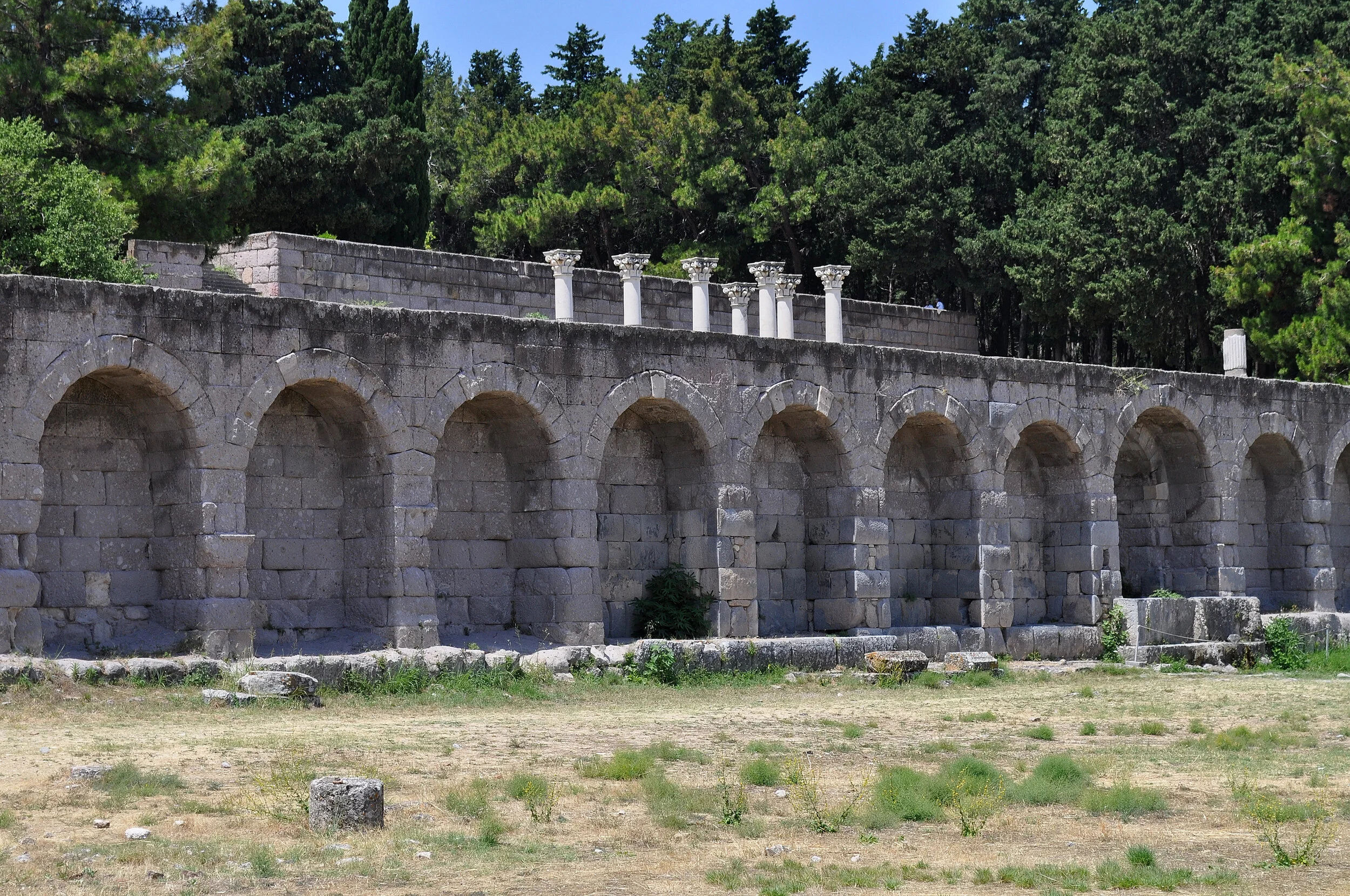
Angela: after cooling off from our walk under the sun, we get back in the car to head to Kos Town.
Piero: our first stop is the Roman villa. It’s a 3rd-century AD patrician villa, an important testament to the island’s wealth during the Roman and Hellenistic periods, discovered after the 1933 earthquake while the Italians were clearing the rubble.
Angela: the villa consists of as many as 36 rooms, all frescoed and decorated with statues, artifacts, and stunning mosaics, along with three atriums, each featuring a fountain at its center.
Piero: the fascist-era reconstruction was done carefully, though perhaps with a bit too much cement. Entrance is paid, about 6 euros for adults.
Angela: now we head into Kos Town itself and start with a nice walk through the center. The city is a fascinating architectural blend of East and West, reflecting the island’s history: you can admire numerous Islamic mosques alongside buildings in the typical fascist style.
Piero: earthquakes have been a defining factor for this city. Its founding dates back to 366 BC, when a powerful earthquake destroyed the ancient city of Astypalea; frightened by the wrath of the gods, the inhabitants moved to the coast, giving rise to the city—which was apparently much larger than today’s. As mentioned, the 1933 earthquake and subsequent excavations uncovered part of the city’s former glory.
Angela: we start our visit at the central square, packed with bars and taverns, some with the typical tables set under trees to shelter from the heat. We stop here for lunch and to refresh ourselves.
Piero: after lunch, we stay right in the square to visit the Archaeological Museum, built by the Italians in the 1930s. The museum mainly houses Hellenistic and Roman artifacts and is definitely worth a visit.
Angela: we head toward the harbor and continue our visit with the remains of the agora. The square was once surrounded by temples; you can still see the ruins of the temples of Aphrodite and Heracles. Also visible are the remains of the harbor walls and the market columns, which enclosed the agora on three sides. There was also a colonnaded portico about 150 meters long, of which only a few columns remain standing.
Piero: leaving the agora, we come across one of Kos’s most iconic symbols: the Plane Tree of Hippocrates. According to legend, under this massive tree, the first physician in history held his lessons. In reality, that’s just a myth—the tree is only about 700 years old (give or take), and because of its age, it needs a support structure to hold it up. Still, this doesn’t lessen the mythical charm of the place: it’s not uncommon to see groups of people seeking the tree’s healing energy by spending long periods meditating beneath it.
Angela: right in front of the Plane Tree square is the bridge that leads to the 15th-century Knights’ Castle. It’s called that because it was built by the Knights of the Order of Saint John (today known as the Knights of Malta) during the Crusades. Today, it’s known as Neratzia Castle and is in a state of serious neglect; moreover, due to recent earthquakes, it is currently inaccessible. All that remains is to take a walk along the walls, the only part still perfectly preserved.
Piero: walking along the walls, we reach the end of the pier. There’s a constant comings and goings of ferries, tourist boats, and unique sailing ships that, lively and noisy, start and end their excursions here. At the end of the pier, you can clearly see the Turkish coast. With more time, one might even consider a trip to Bodrum.
Angela: on our way back to the car, we stroll along the waterfront and take the chance to buy some souvenirs.
Piero: before leaving Kos Town for good, we have one last stop: the Odeon. It’s a small Roman-era theater restored in the 1930s and then heavily renovated again in 2000, with perhaps too much cement. Today, it’s used for theatrical and musical performances—nothing particularly remarkable.
The village of Zia
Angela: the next day, still with the car at our disposal, we decided to visit the village of Zia. We chose to go in the morning, but made a big mistake for two reasons: first, because at this time it’s very crowded due to tourists arriving on cruise buses, making parking a real challenge; second, and more importantly, because the village is famous for offering the best sunset view on Kos. Oh well, we missed it, but I suggest not making the same mistake.
Piero: the village is really charming though. It’s located inland, at the foot of Mount Dikeos—the highest on the island—about a half-hour drive from Kardamena, roughly halfway between Kos Town and Kardamena.
Angela: it’s truly enchanting to stroll through the narrow streets and admire the traditional houses that give the village a magical touch. The climb toward the village summit is lined with countless souvenir shops and tavernas where you can savor delicious Greek cuisine.
Piero: once we reach the upper part of the village, we find the Orthodox church and, more importantly, a breathtaking panoramic view of the entire island.
The beach of Agios Stefanos
Angela: Kos is home to many stunning beaches. In the windy northern part, you’ll find Marmari with its dunes, Mastichari with its Caribbean-like vibe, and Tigaki, the island’s longest beach. Near Kos Town is Lambi, the city’s main beach. To the south, there’s Kardamena—where we based ourselves—then Paradise Beach and Kefalos, located on the island’s westernmost tip. But we decided to stop at one of the most beautiful and charming beaches of all: Agios Stefanos (Saint Stephen).
Piero: it’s located about twenty kilometers west of Kardamena. It’s a beautiful beach with a wide shoreline that’s partly sandy and partly rocky. The sea, of course, is fantastic—clear and crystal blue—with gently sloping seabeds. What makes it truly special, however, is the presence of ancient Christian temples right near the shore. These buildings date back to the 5th–6th centuries AD, and you can still clearly see the remains of columns and mosaic floors. It’s a fascinating setting where you can easily choose to dive into the sea or into history.
Angela: what makes this place even more enchanting is a small rocky islet located just 200 meters offshore, which seems to stand guard over the bay.
Piero: this is Kastri, topped by the iconic white church with a blue dome dedicated to Agios Nikolaos, the patron saint of sailors. The islet can be reached by swimming, and during low tide, even on foot. It’s a local tradition to swim out to the islet, climb the rocks, and ring a small bell located beside the church.
Therma: the natural spa
Angela: Kos has many beautiful beaches to visit, and Therma is definitely not one of the most attractive. With its black sand and pebbles, it’s not particularly charming on its own.
Piero: we’re about ten kilometers south of Kos Town, but what attracted us here are the hot thermal springs that flow through an underground channel and mix with the seawater.
Angela: at the far end of the beach, natural rock formations create a thermal pool right by the sea, with water temperatures reaching nearly 50 degrees Celsius. It’s a natural spa offering many health benefits, but above all, the pure pleasure of soaking and relaxing by the sea.
Piero: the water is rich in sulfur, potassium, calcium, chlorine, and magnesium; the name Therma comes from Greek and means “heat,” a tribute to these hot springs of volcanic origin.
Angela: the beach and natural thermal baths aren’t the easiest to reach—they’re hidden beneath the massive mountain that towers above, which only adds to their allure. Some adventurous visitors drive down a steep, unpaved road, but feeling dizzy, we decided to park at the top and walk under the sun to this seemingly otherworldly place. It’s not uncommon to see a little goat climbing the mountain or strolling over sunbathers’ towels, just like what happened to us...
Piero: despite this magical, unspoiled atmosphere, the beach is quite popular, though it retains its natural charm. There are no bars or facilities, so it’s wise to bring your own food and plenty of water—essential to avoid dehydration under the sun, especially in such a warm area.
Goodbye Kos
Angela: even though it’s now a well-visited tourist destination, some corners of Kos still hold an unmatched charm.
Piero: for those like us who love the sea but always want something new to discover and see, Kos is the perfect balance.
Angela: the mix of three days relaxing on the beach and three days exploring the island worked out wonderfully. Maybe it’s our love for the Greek islands, but we really loved Kos too!

